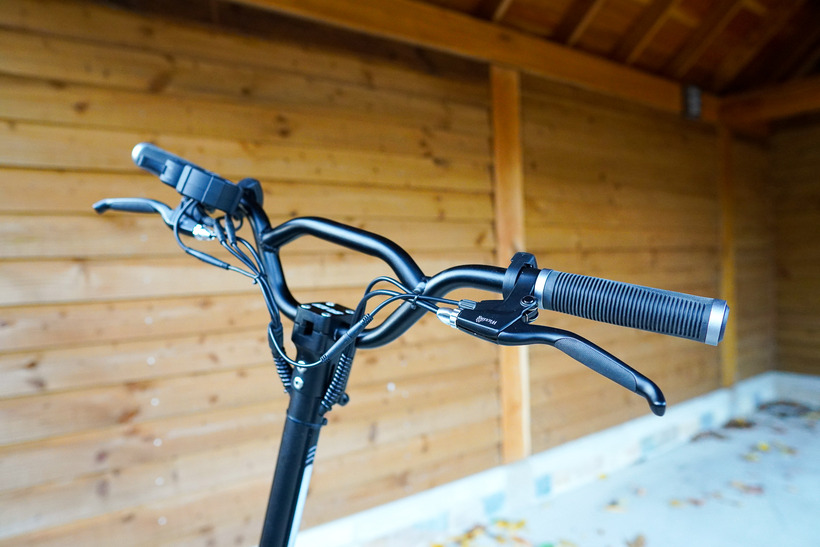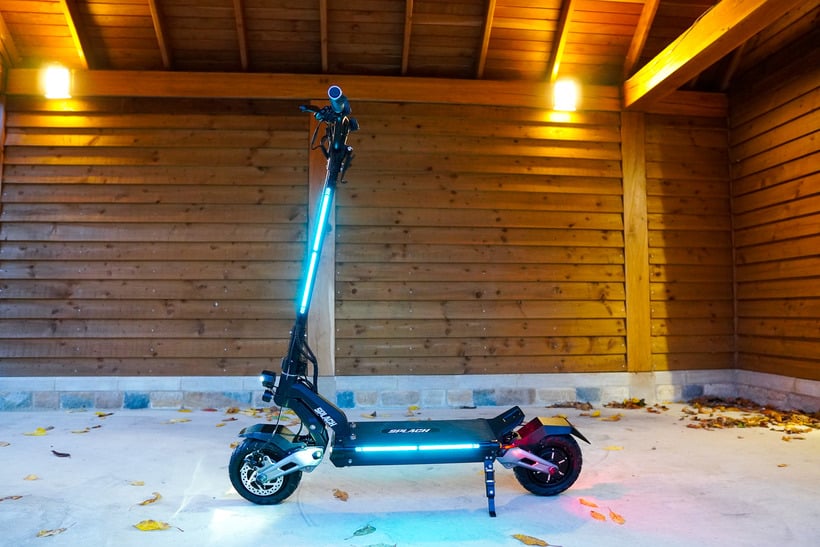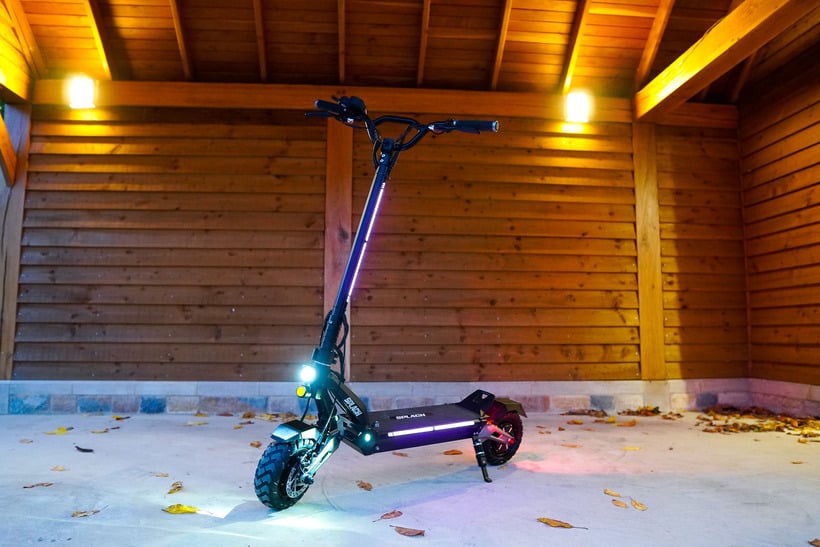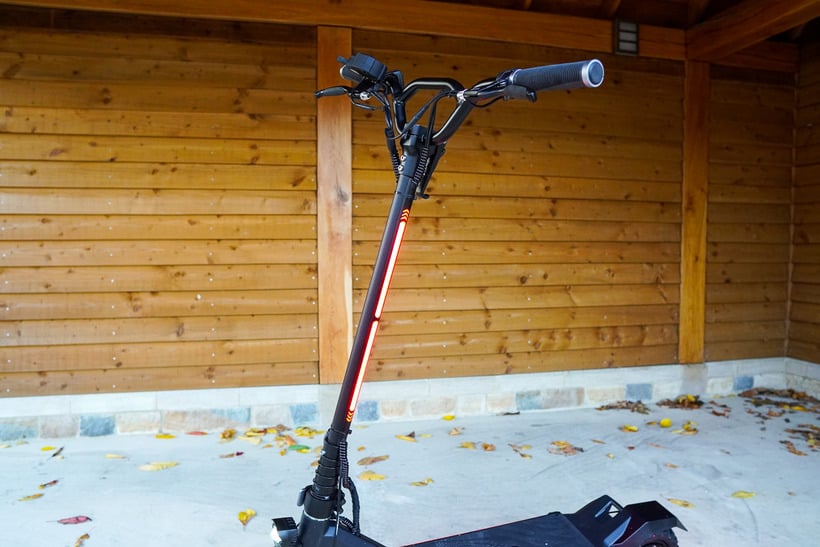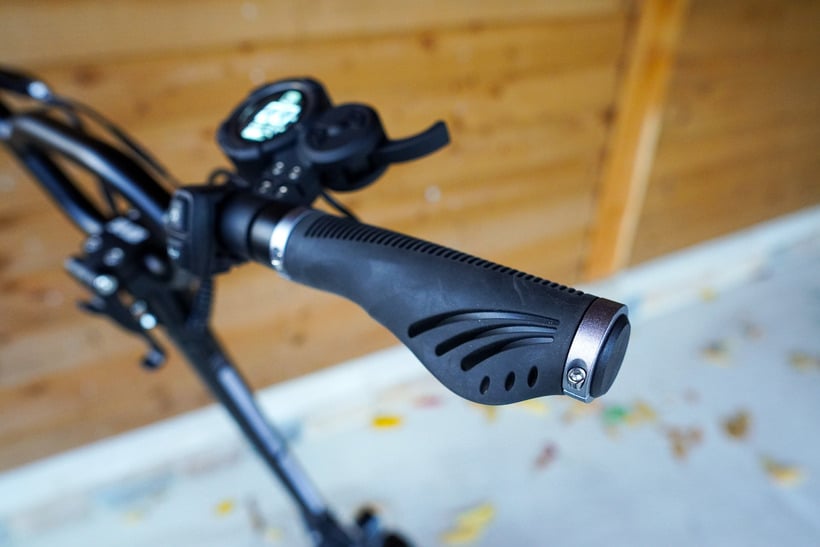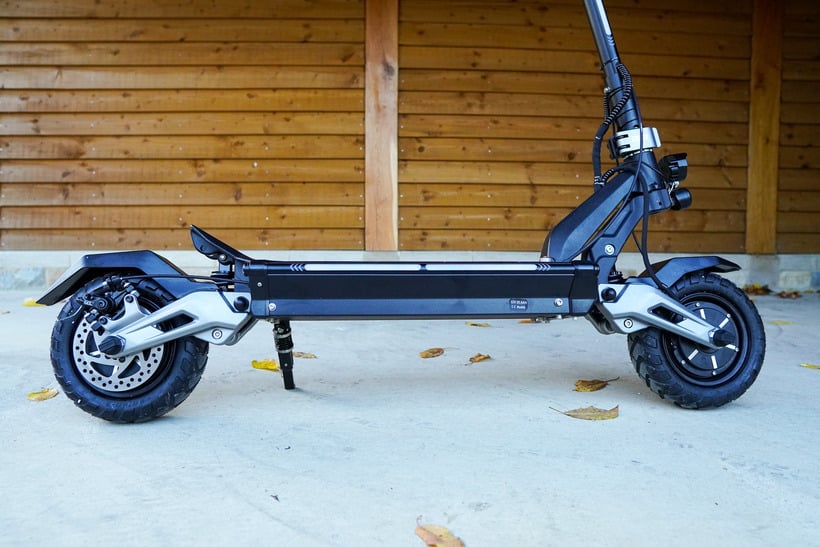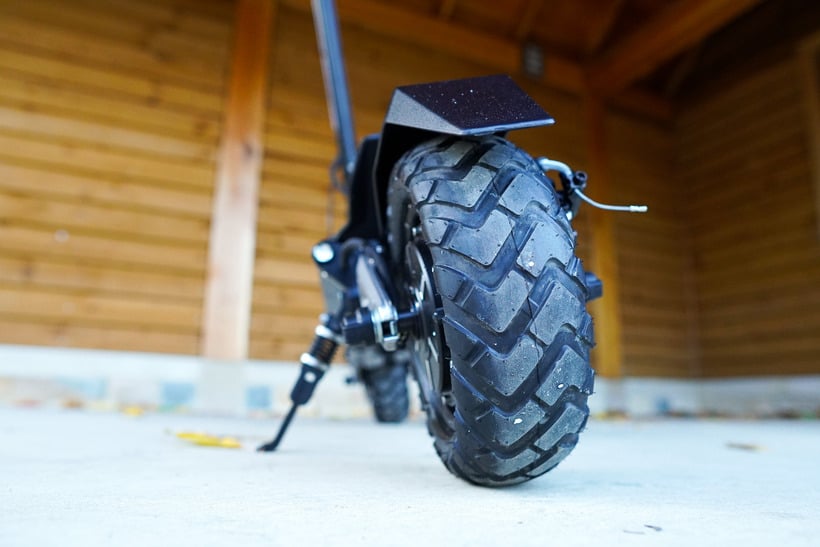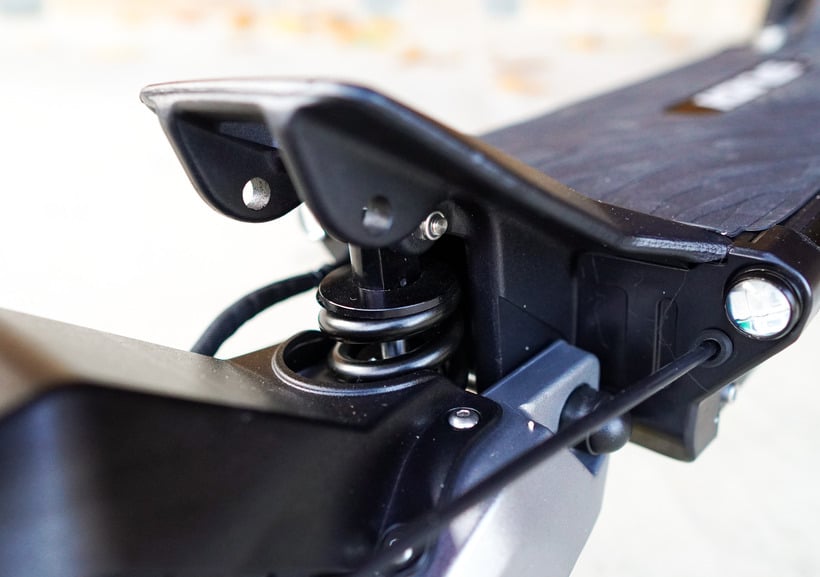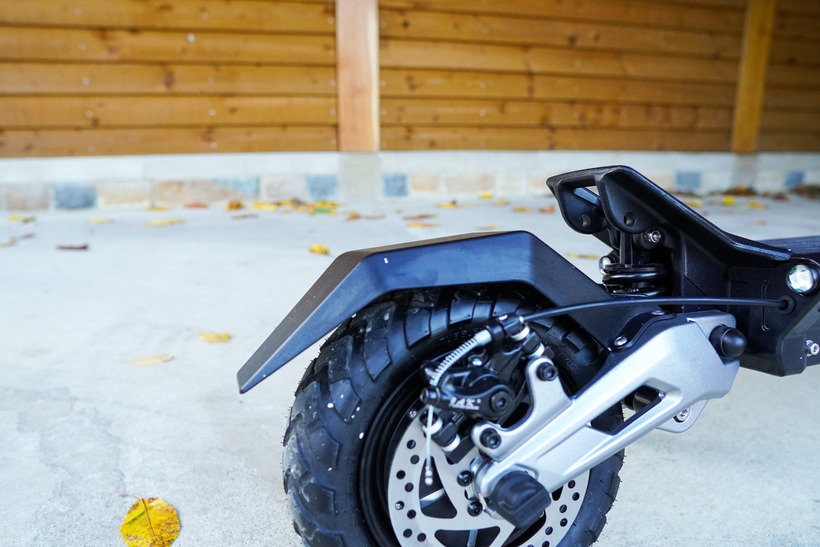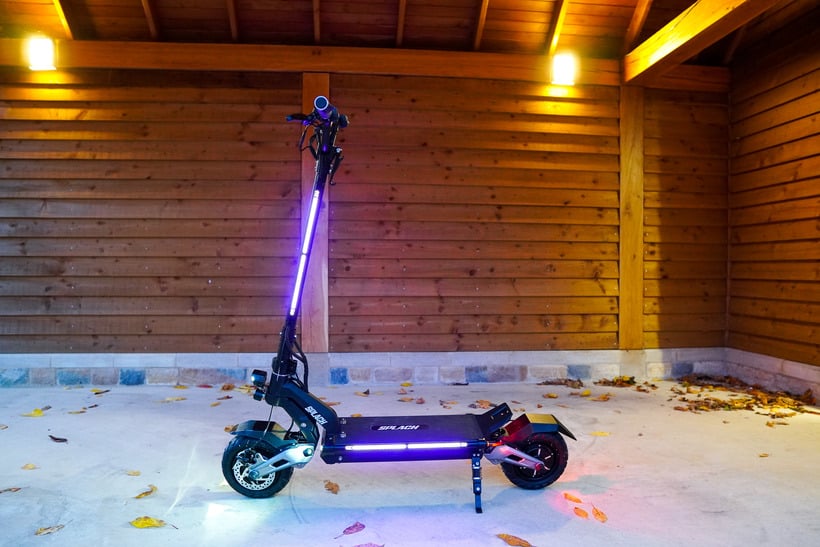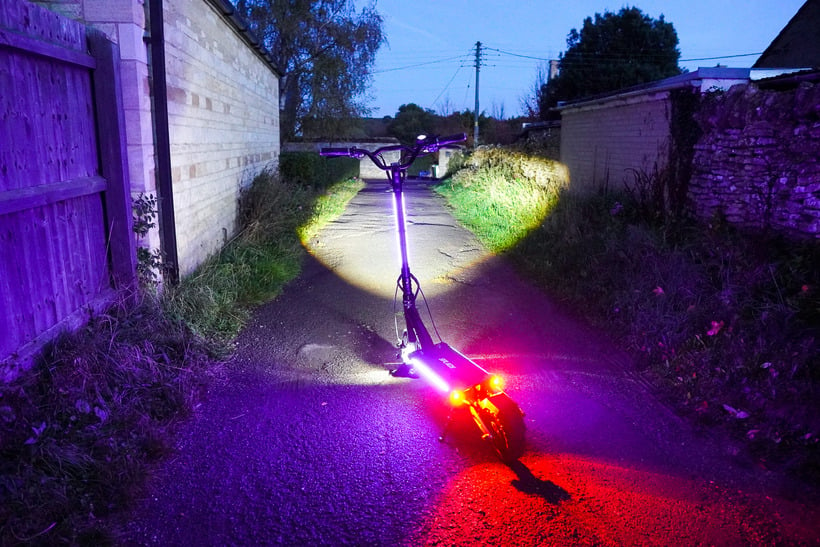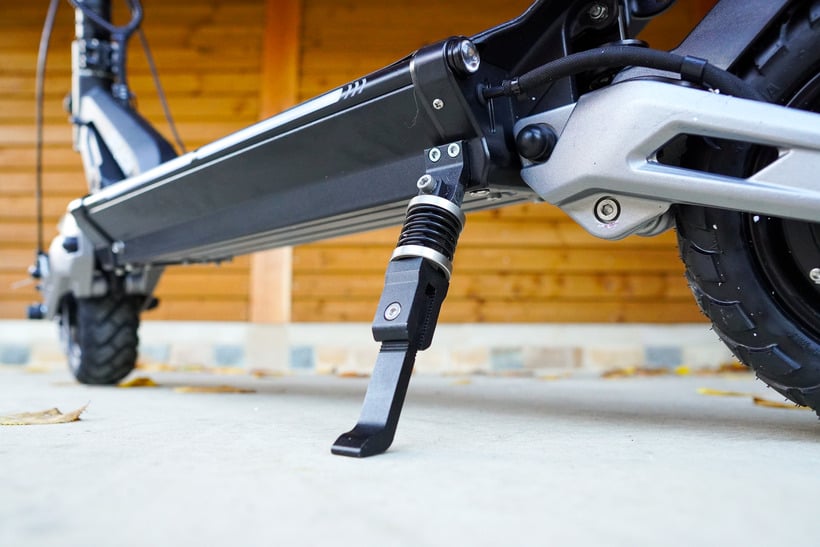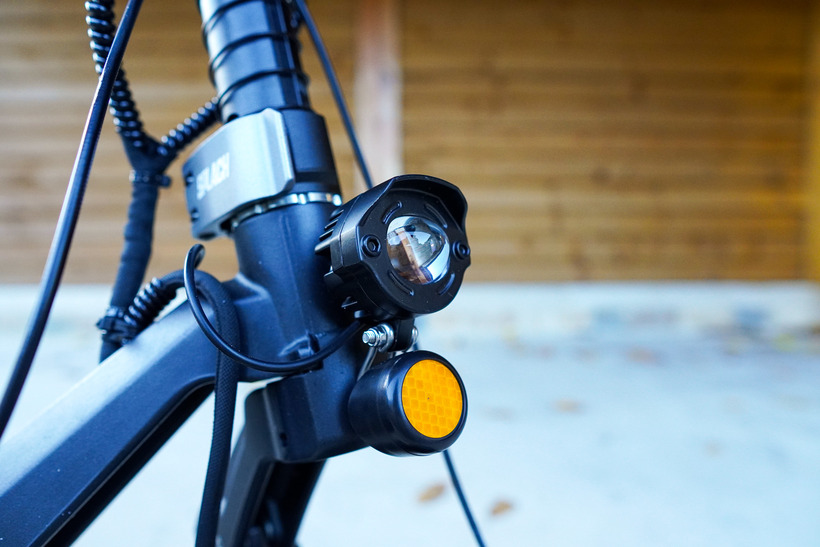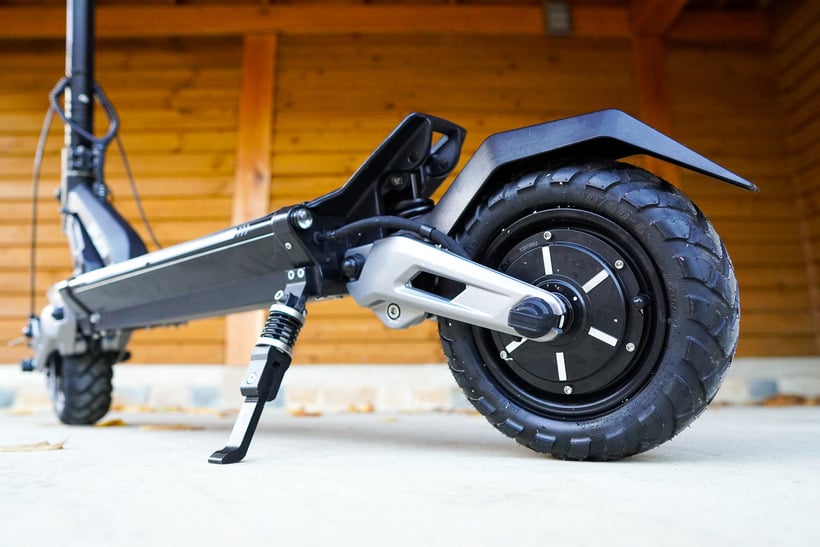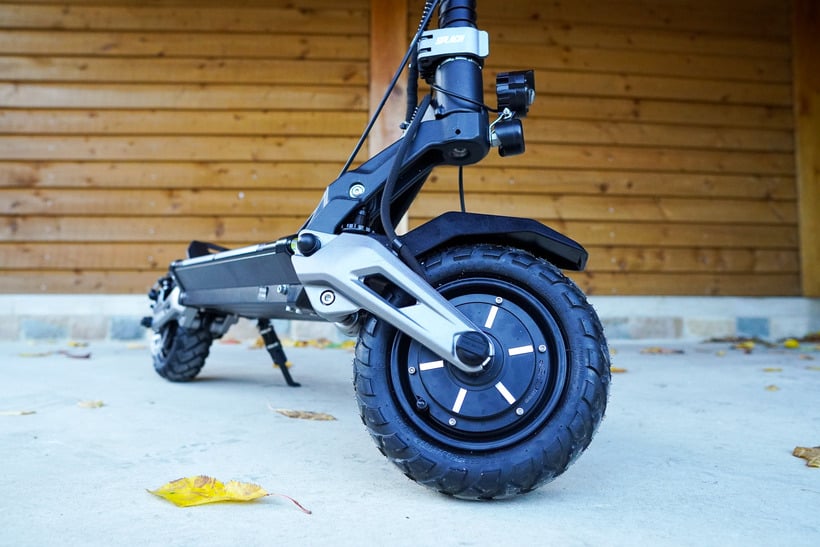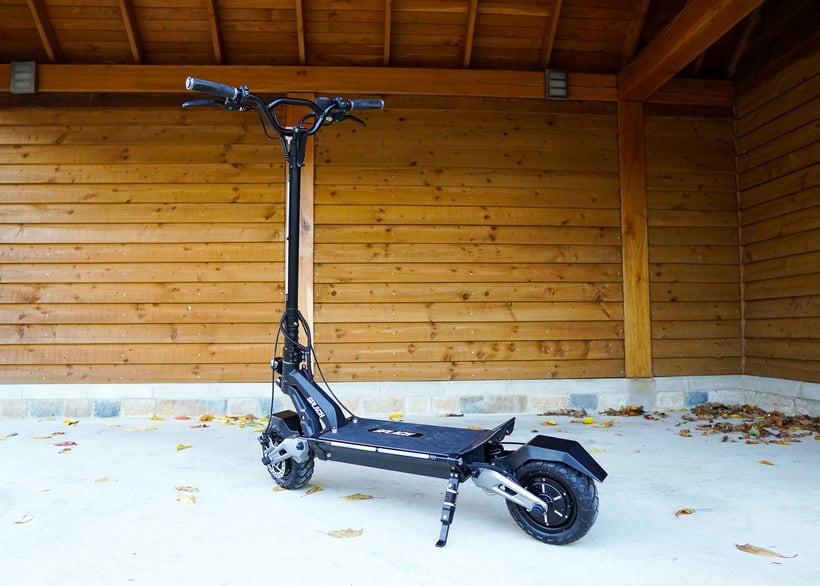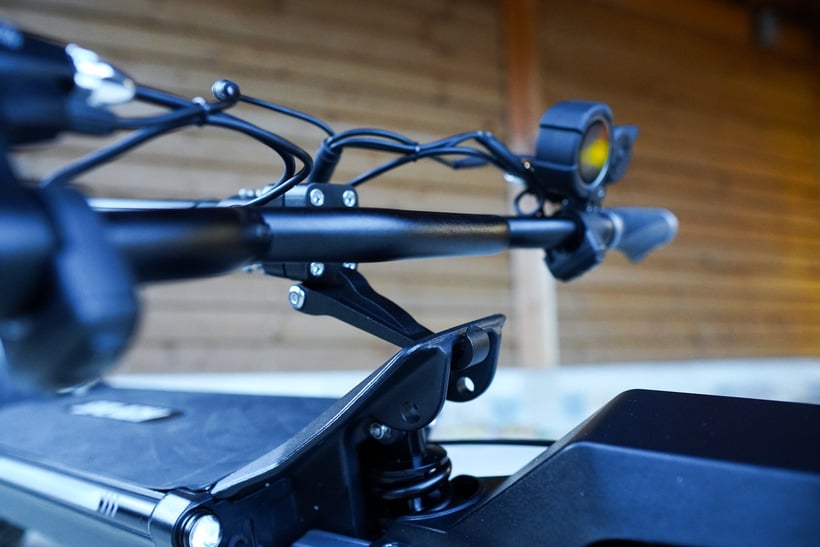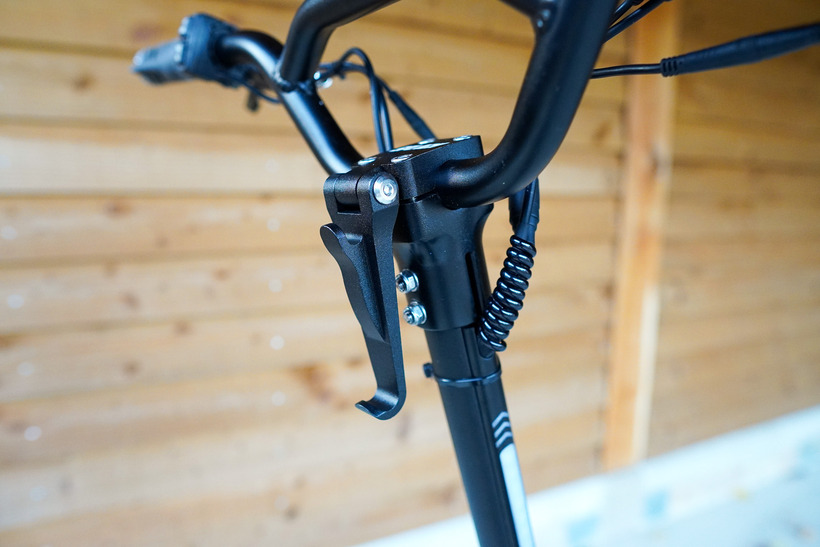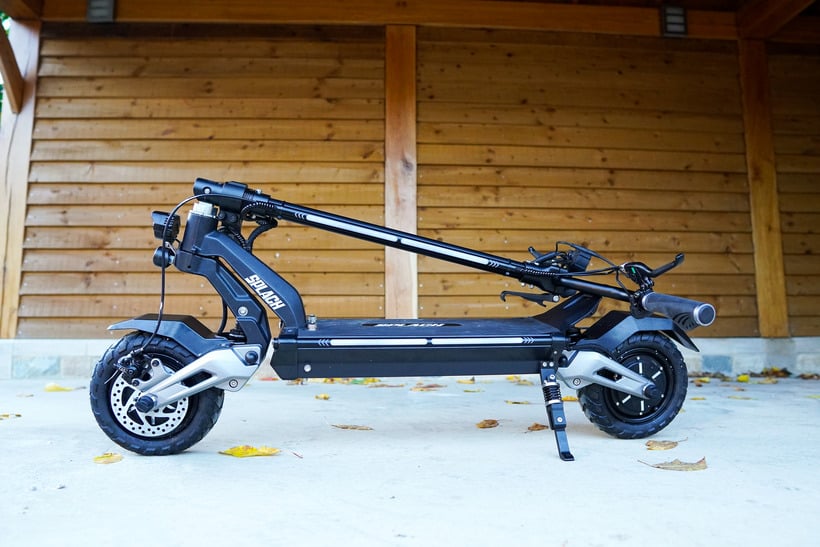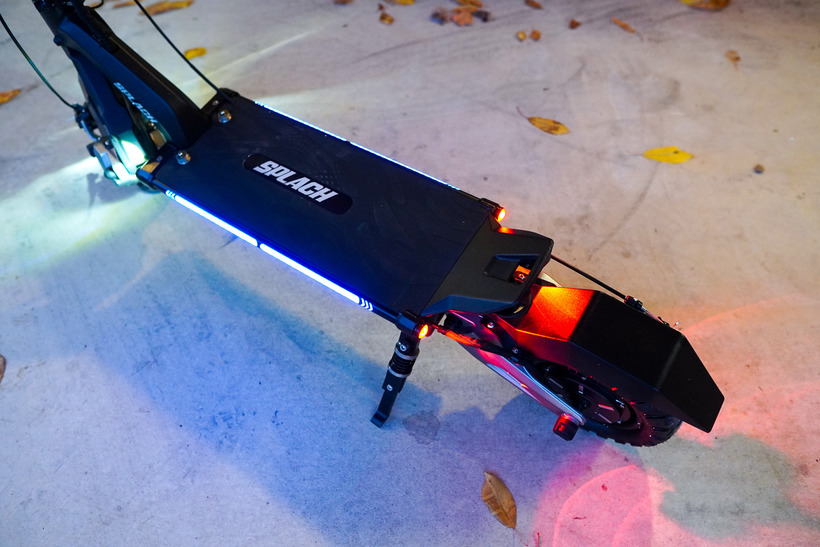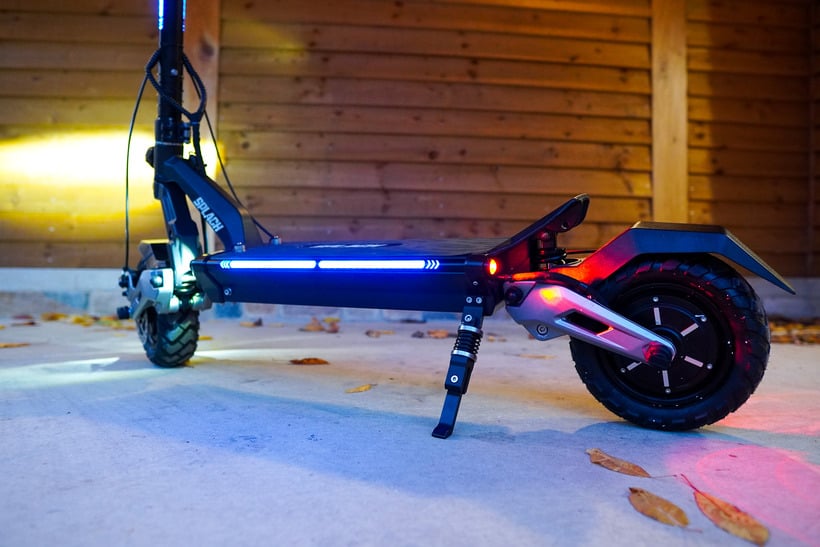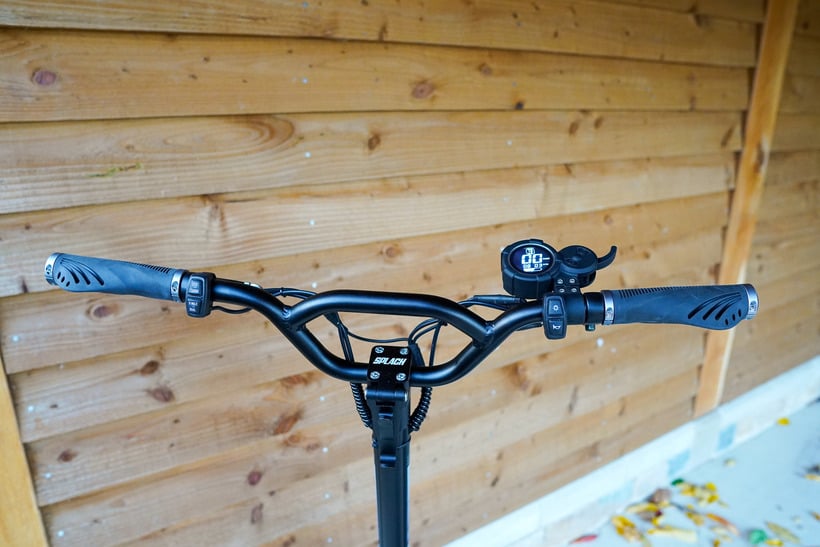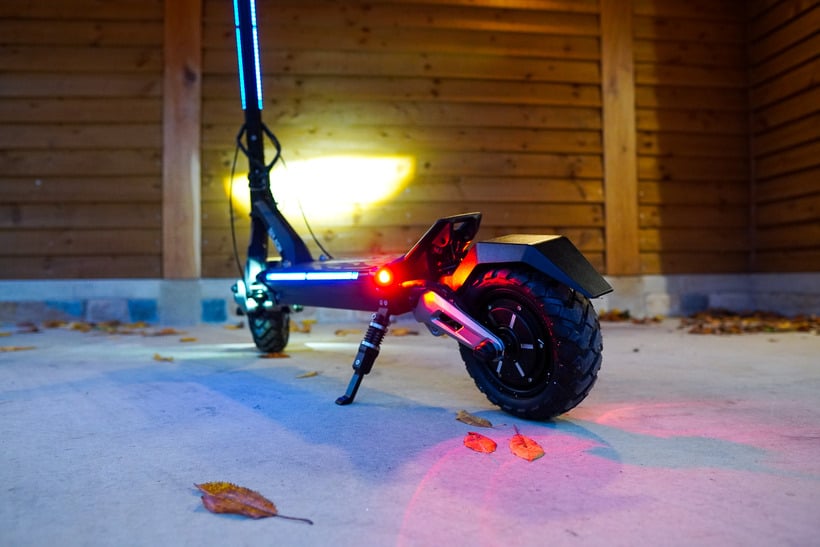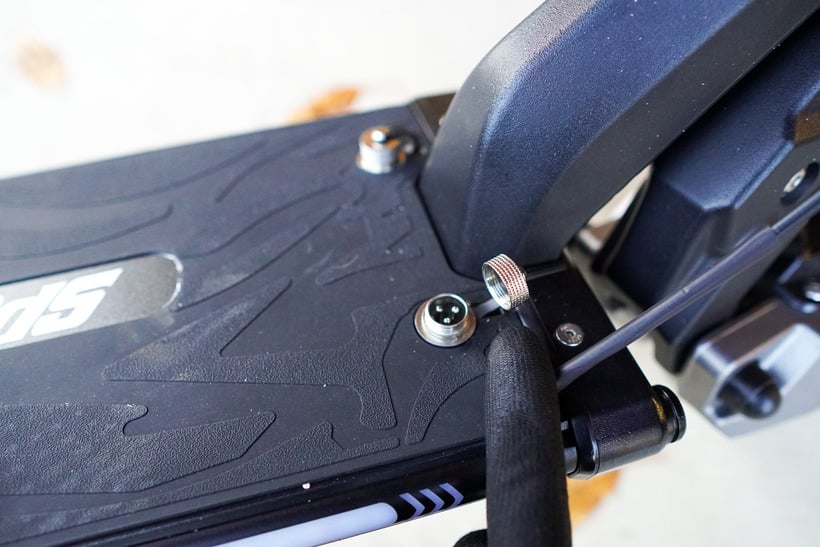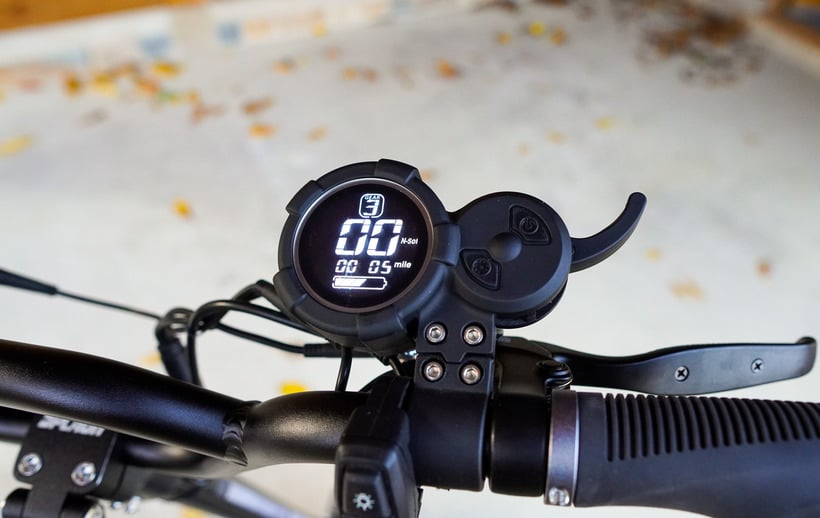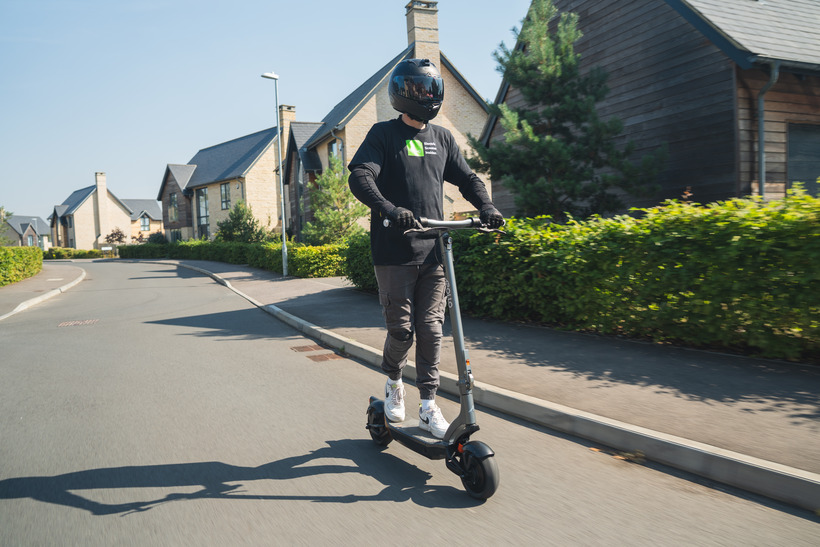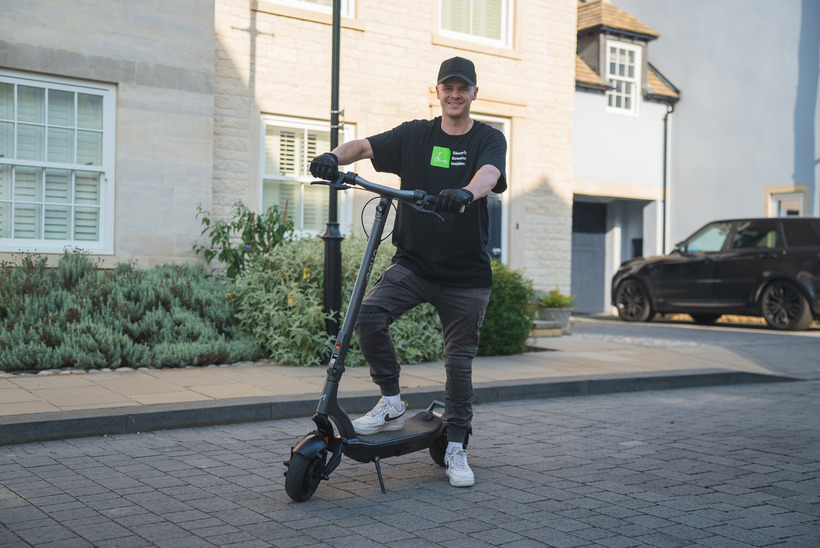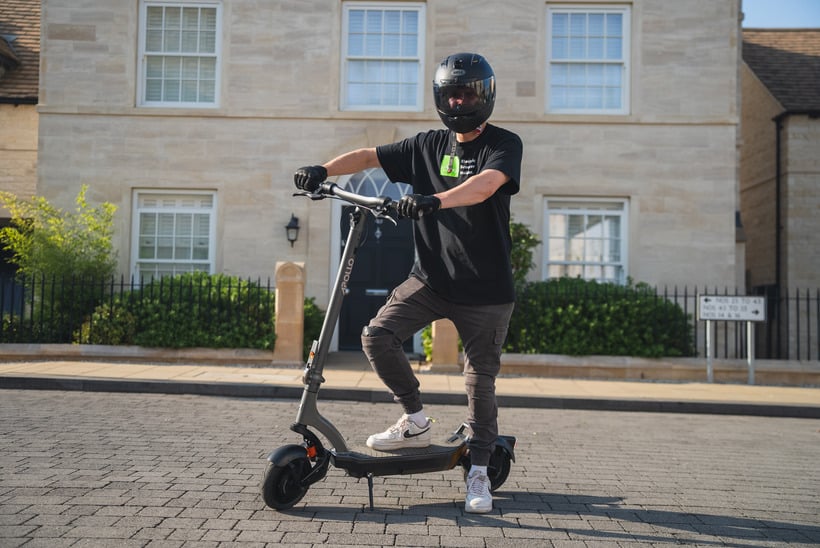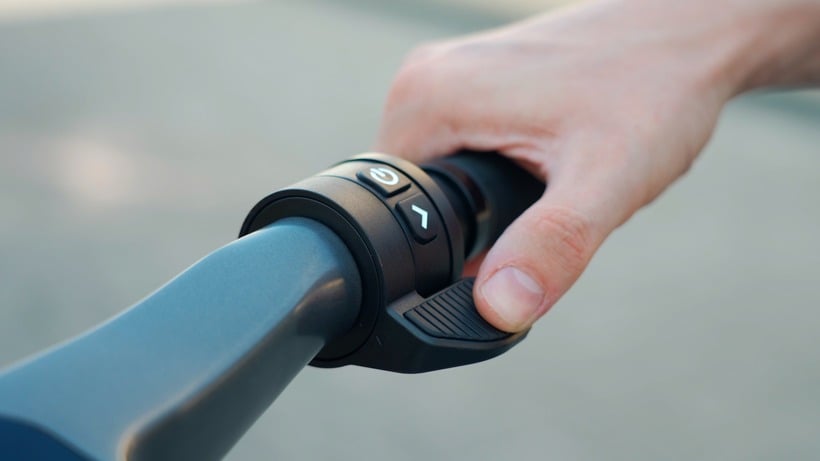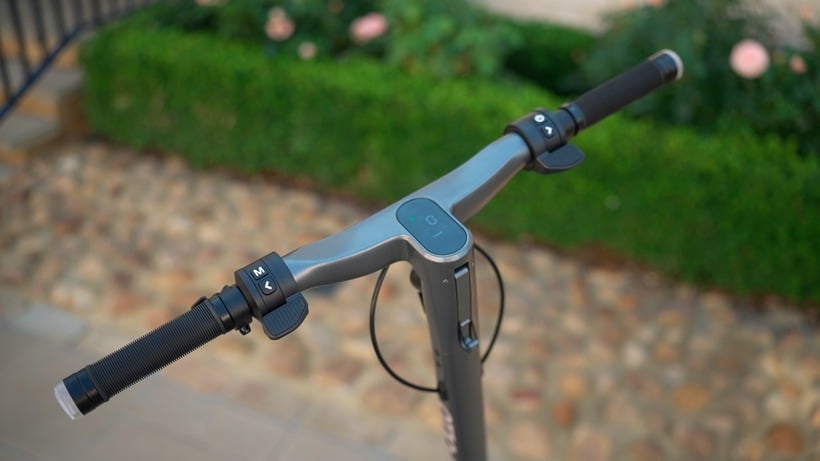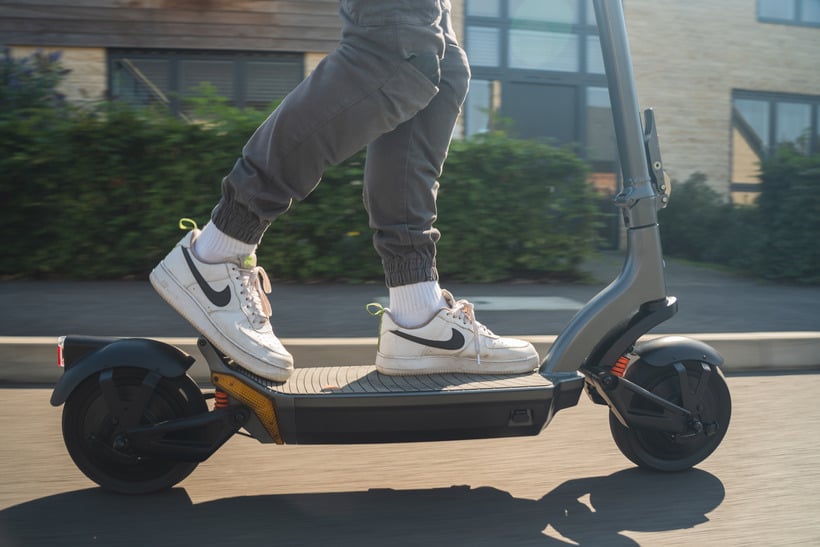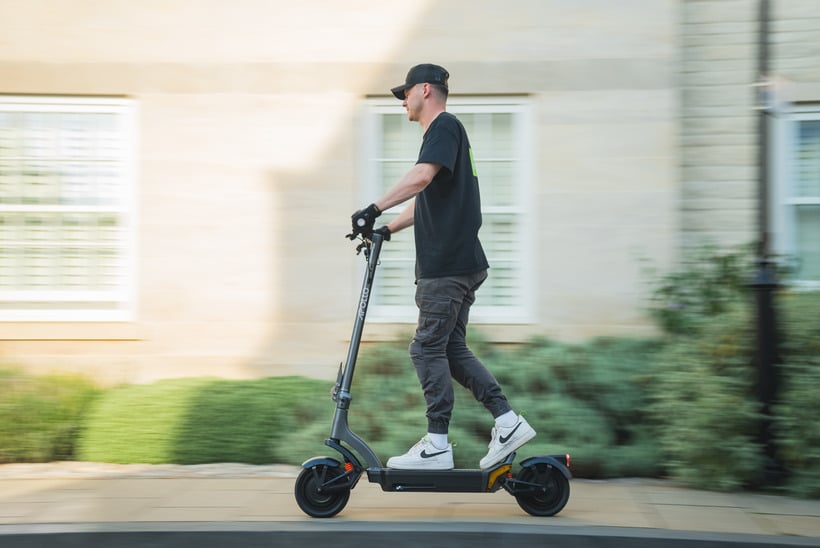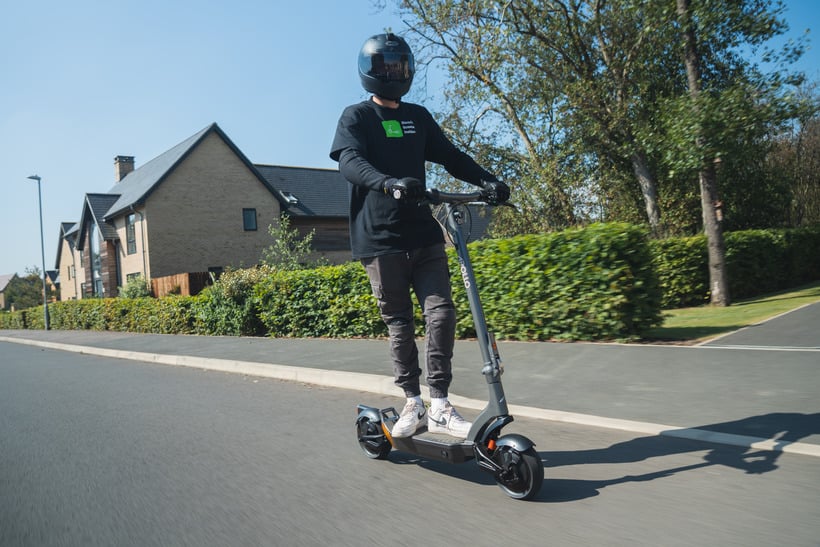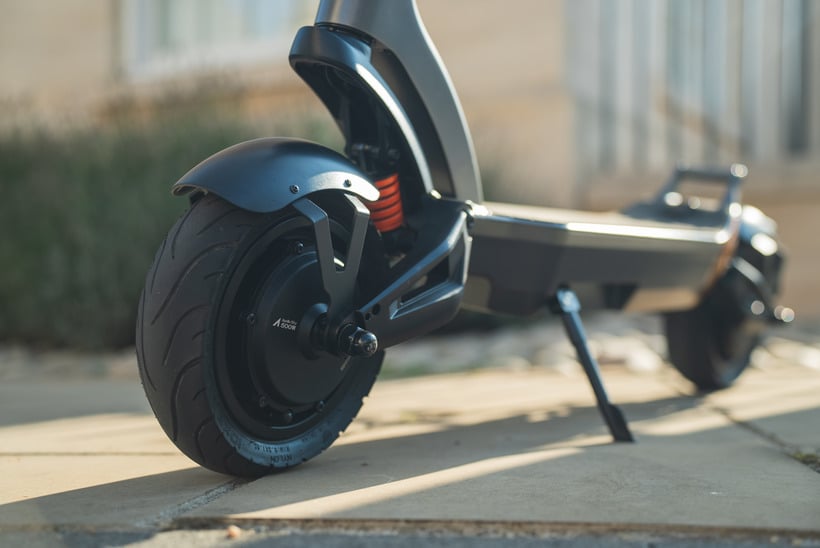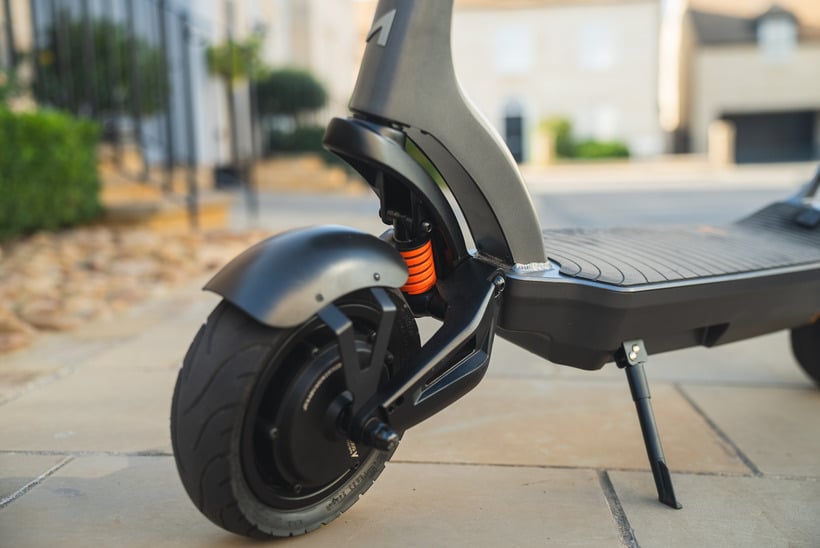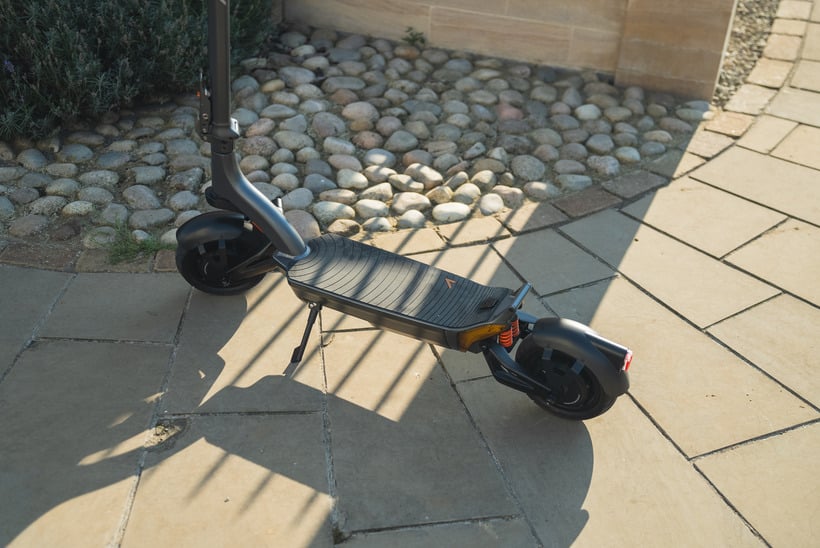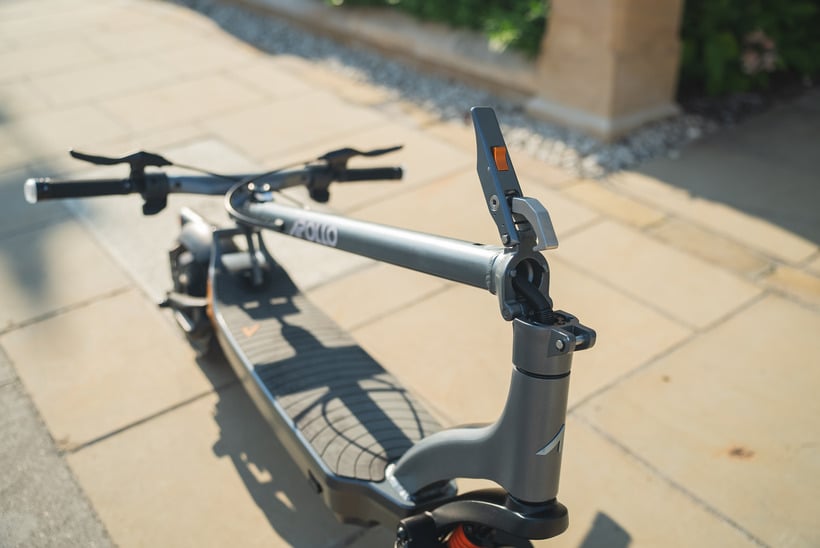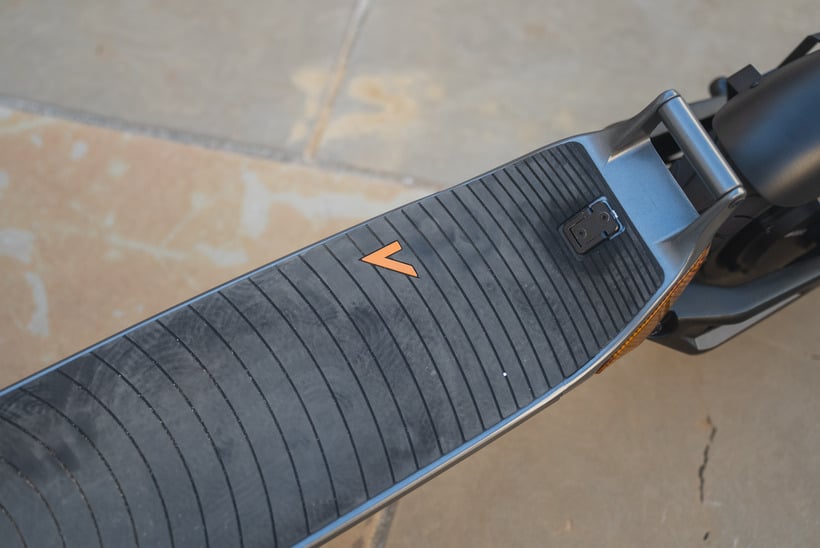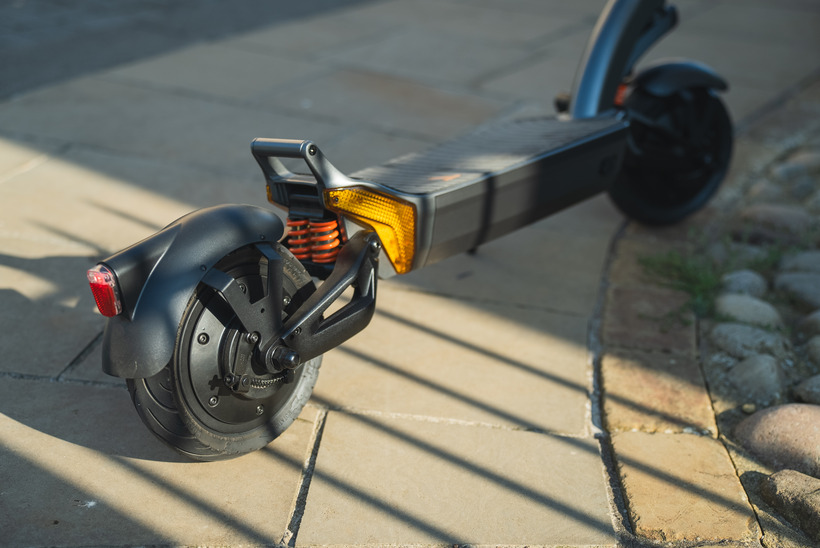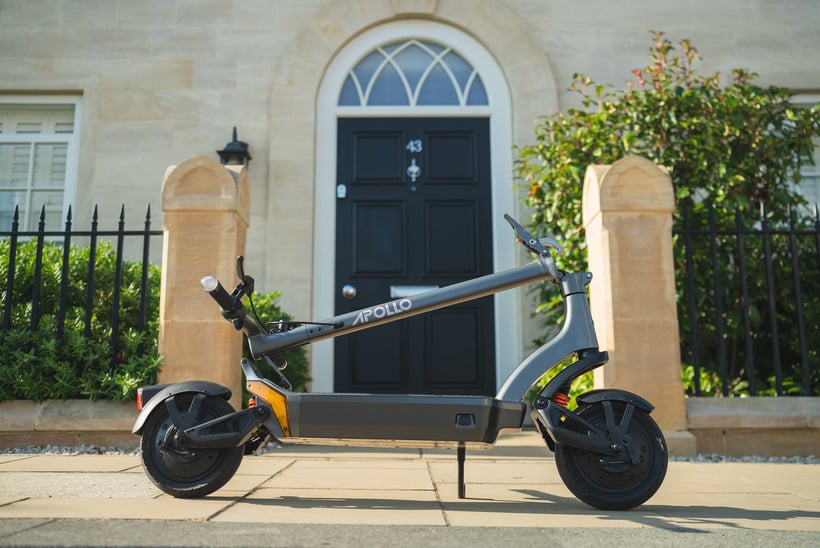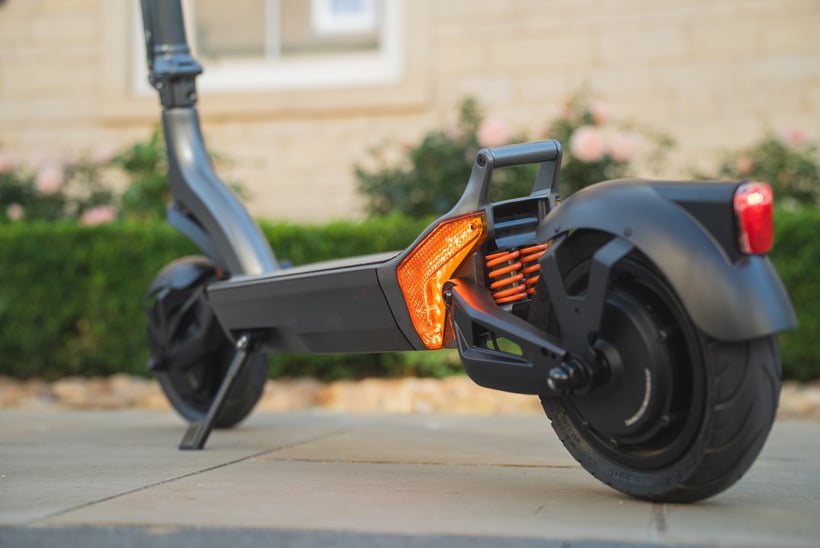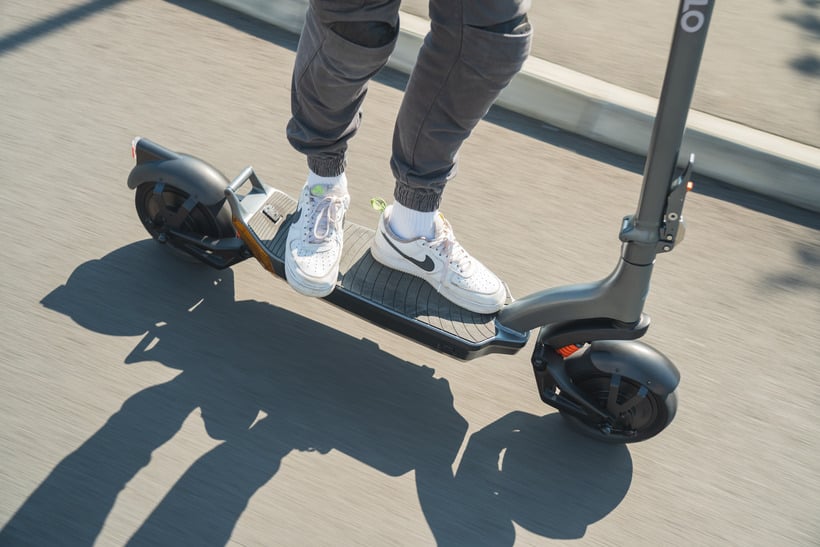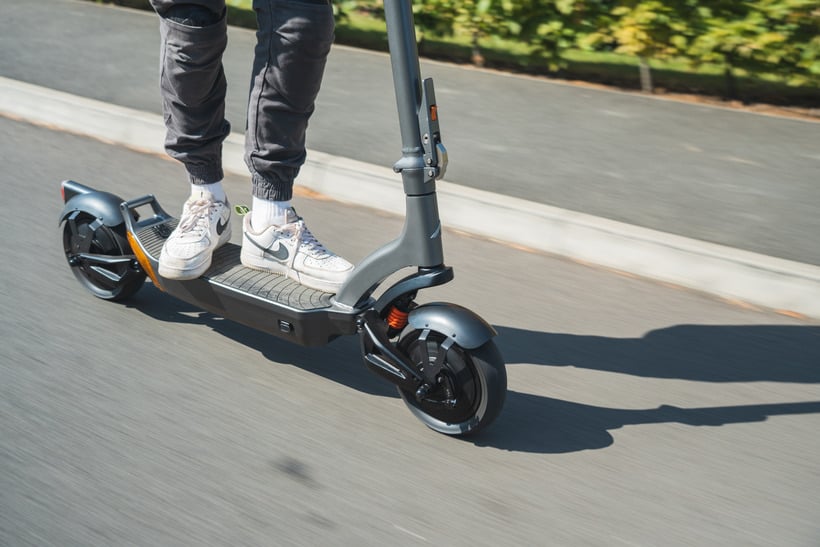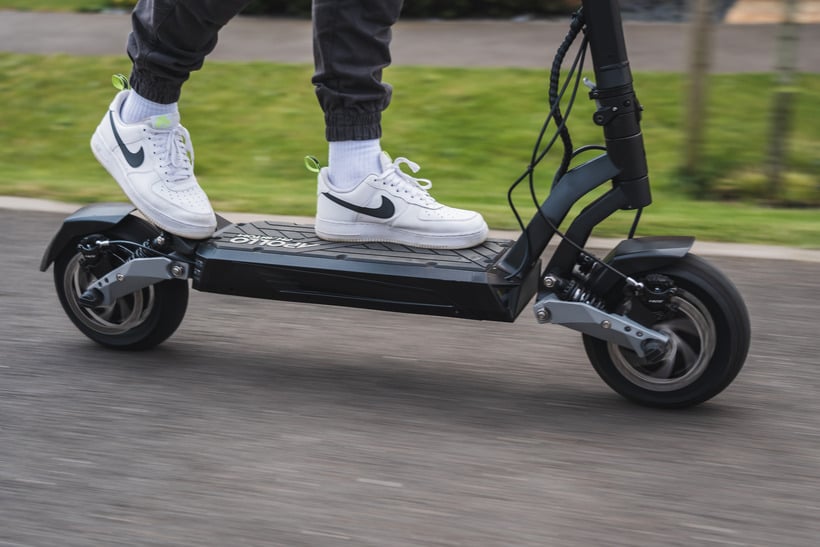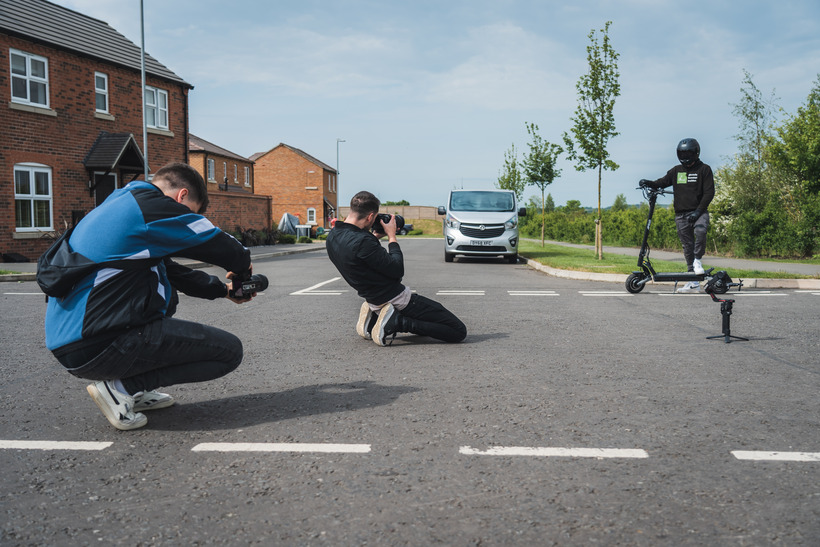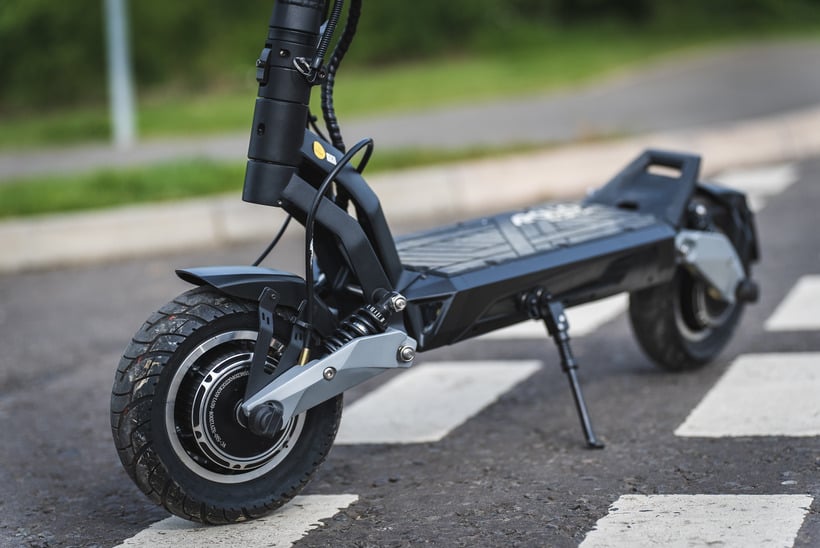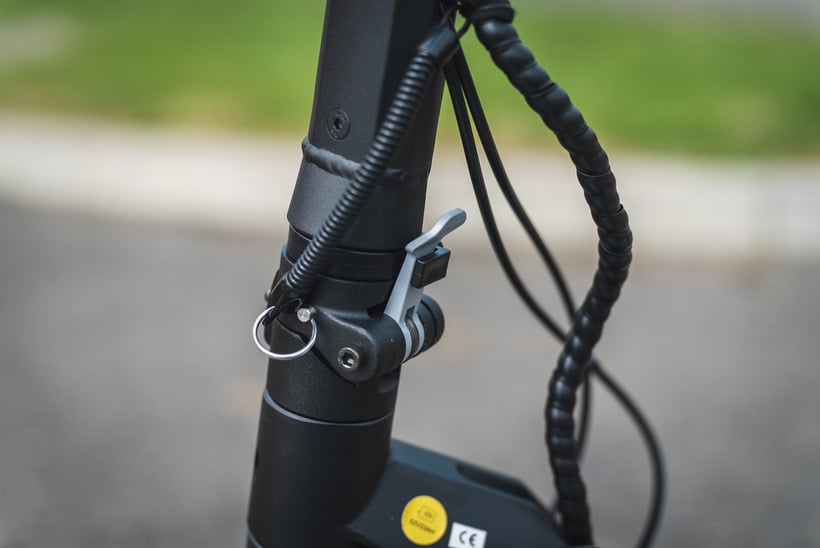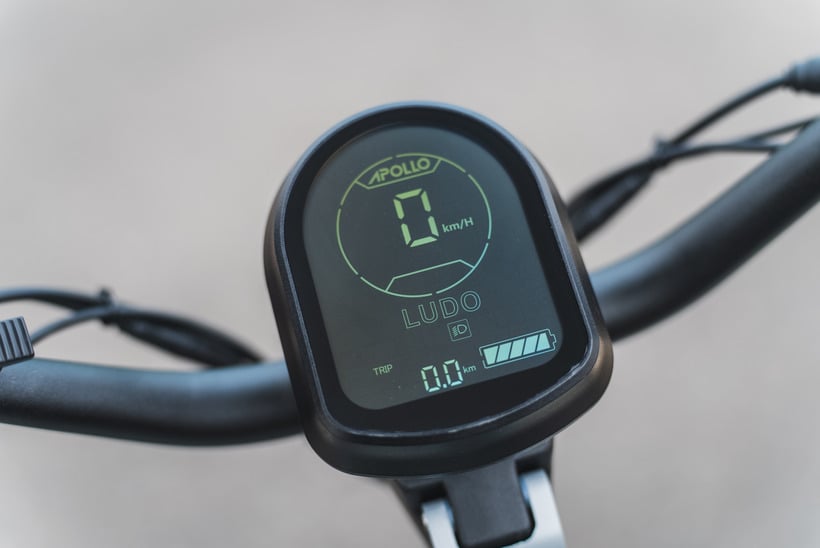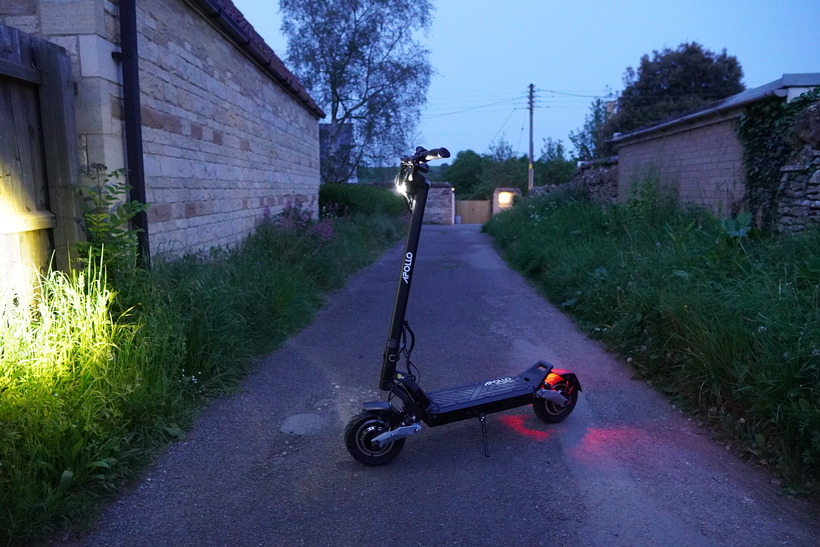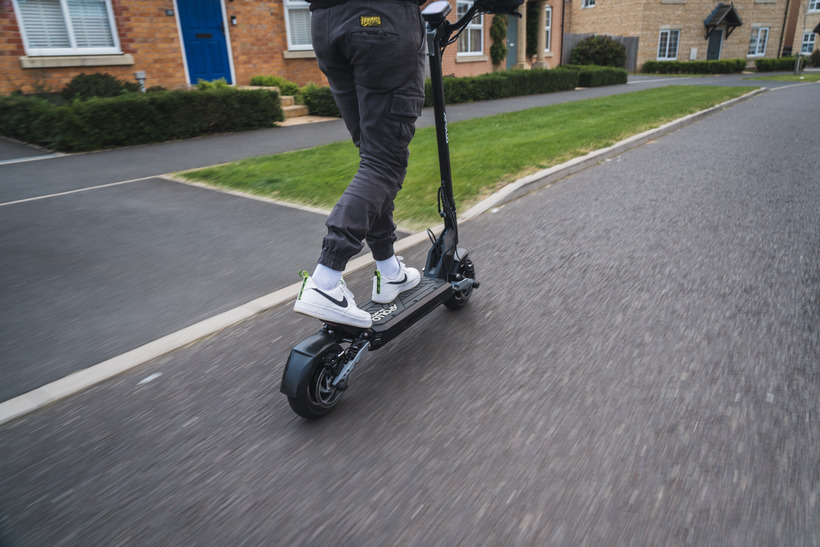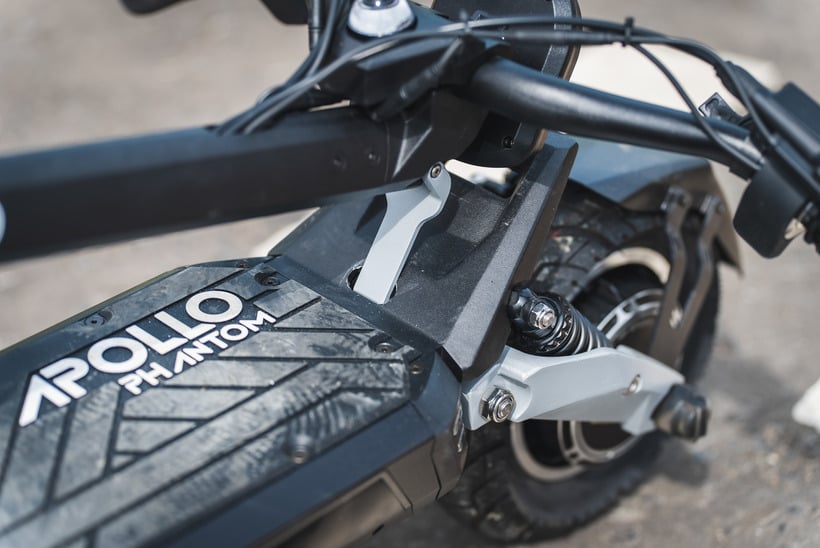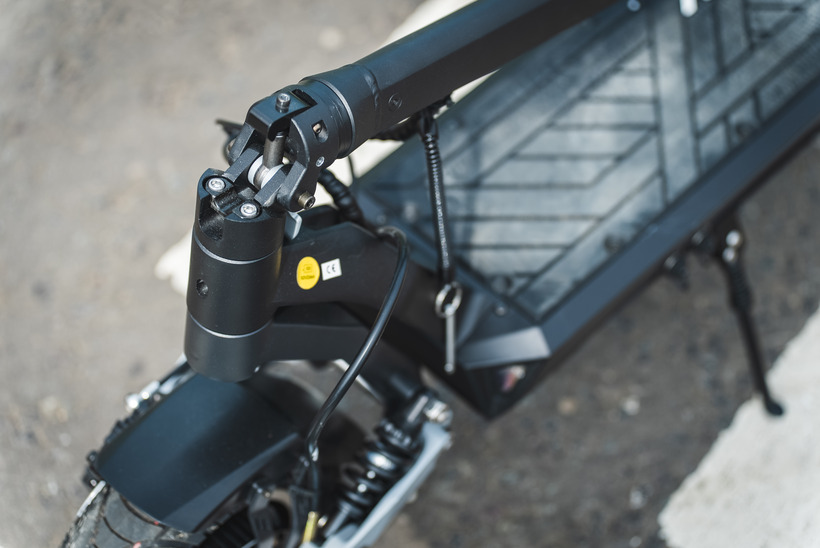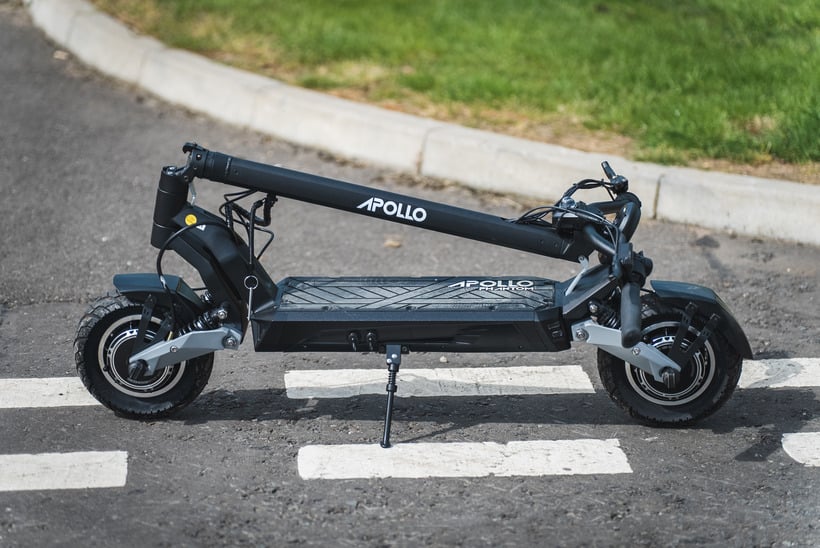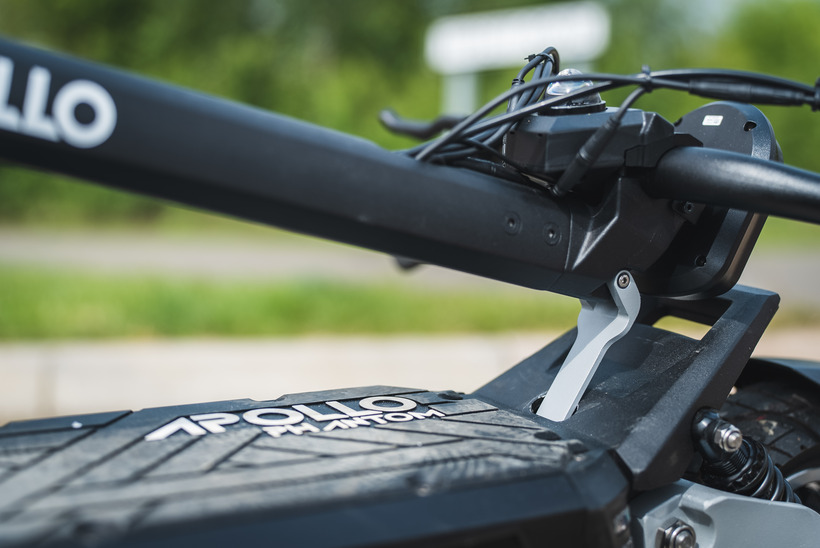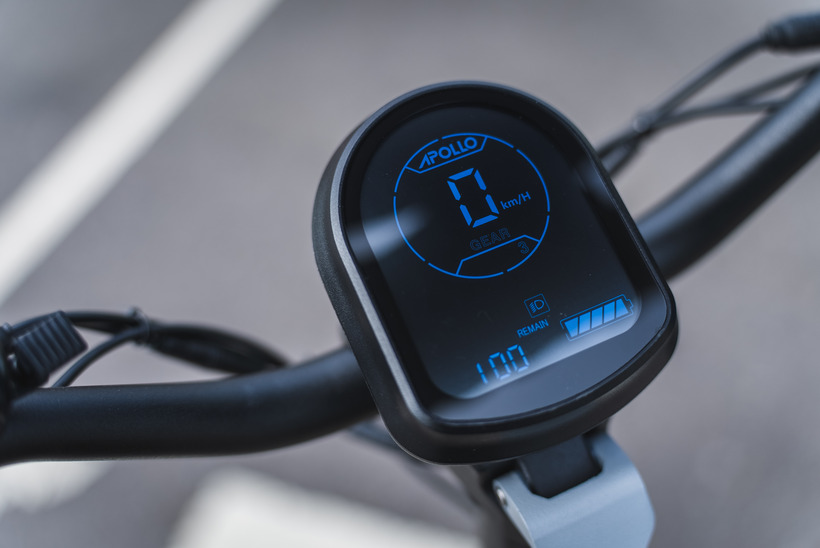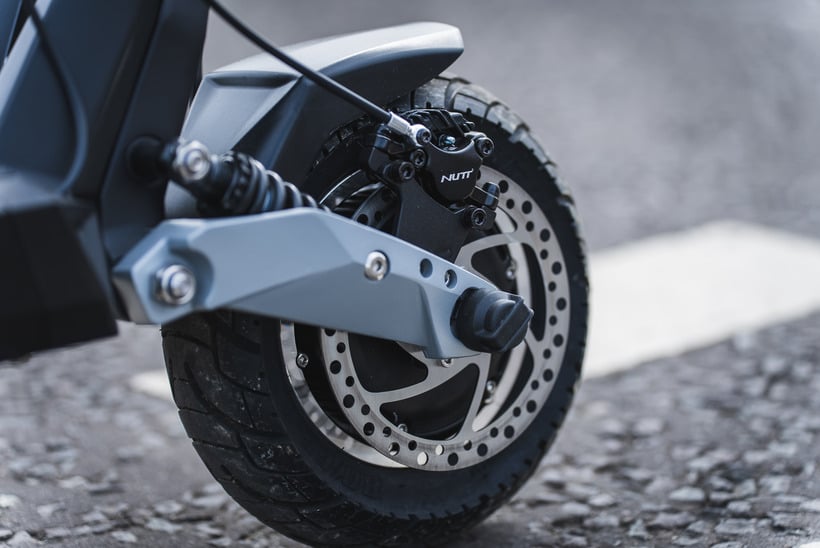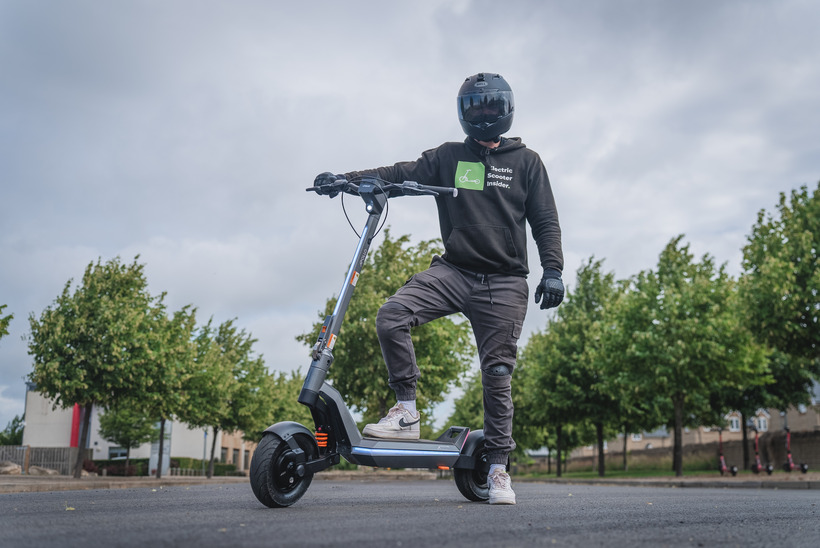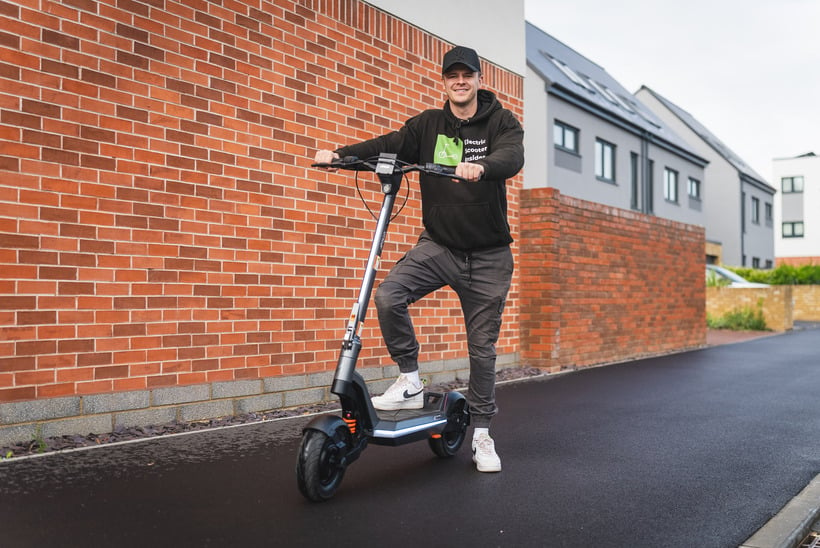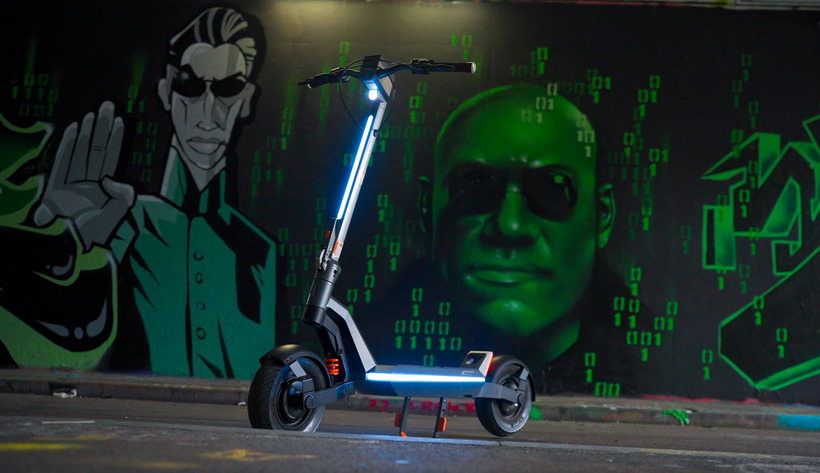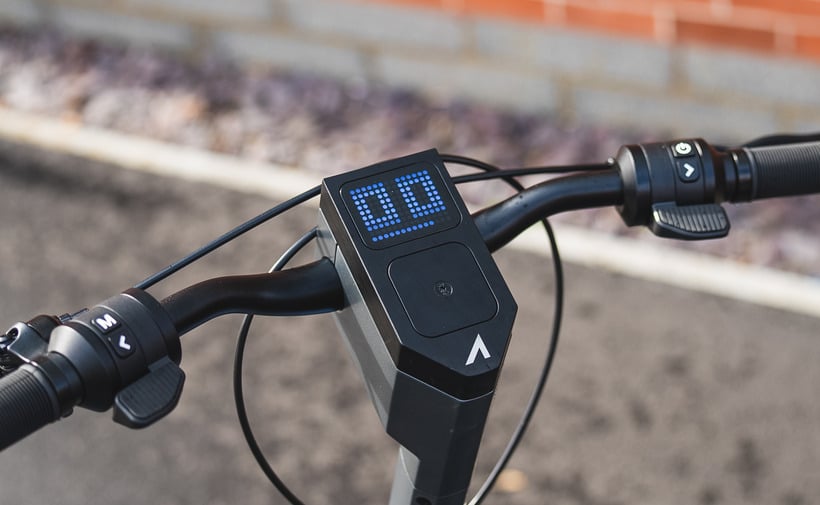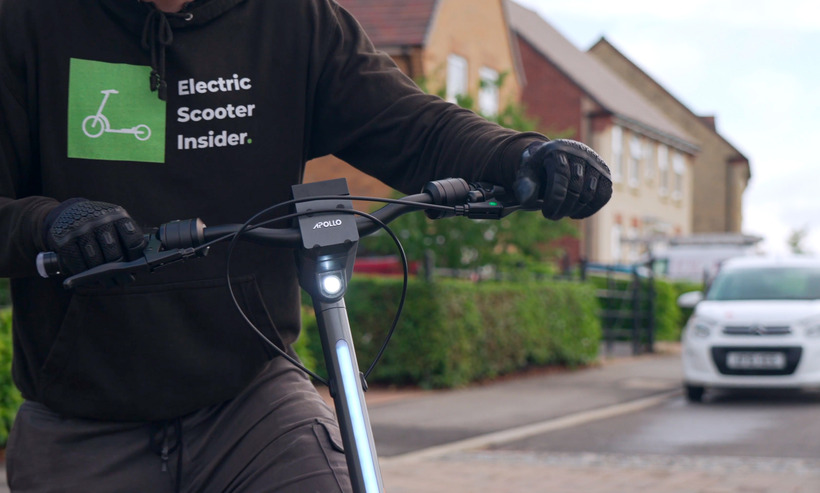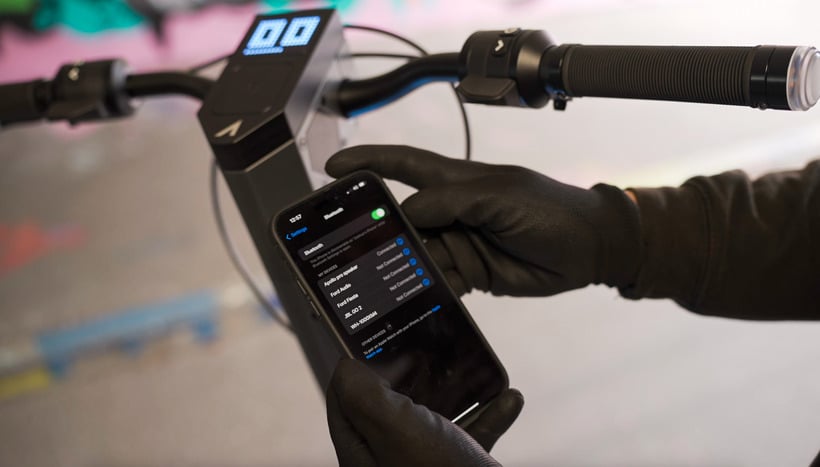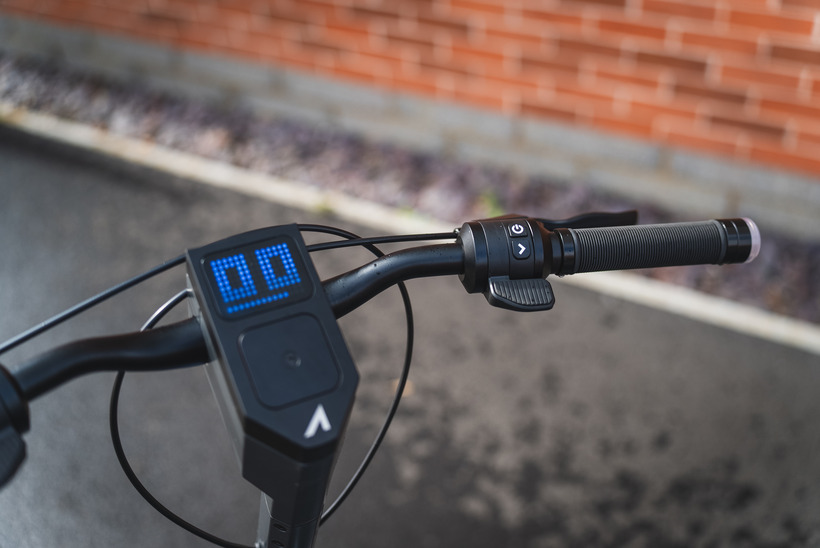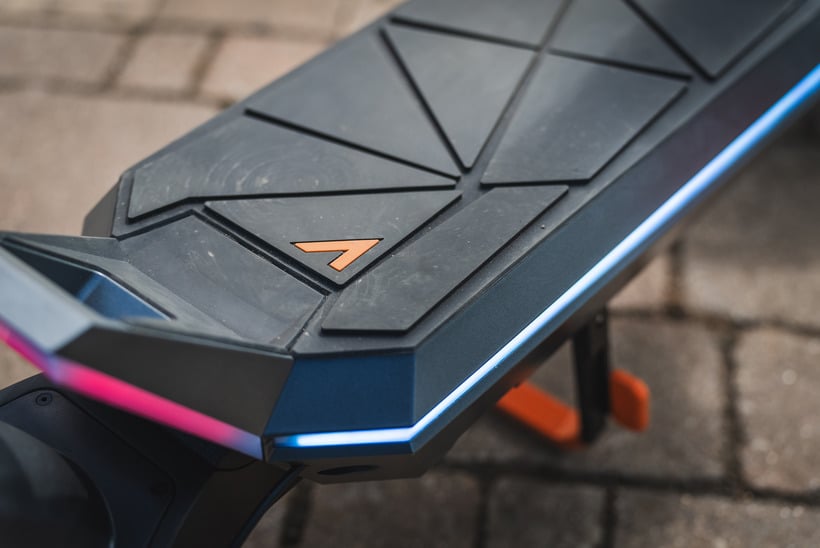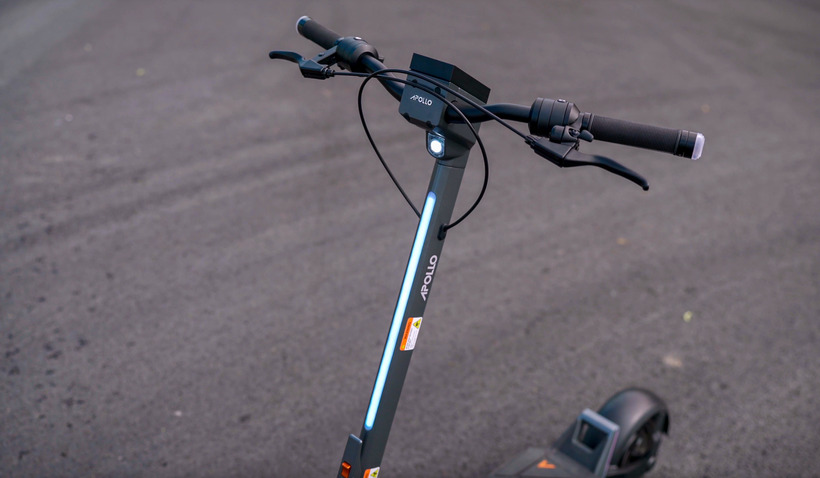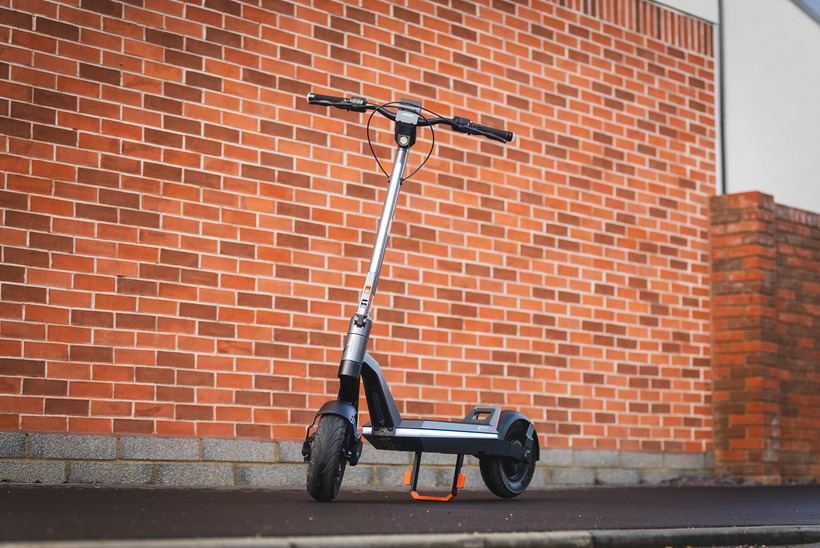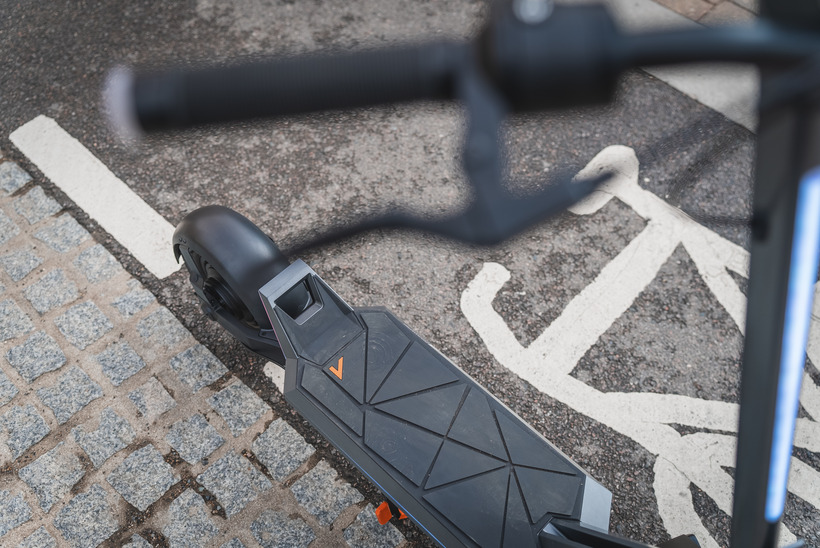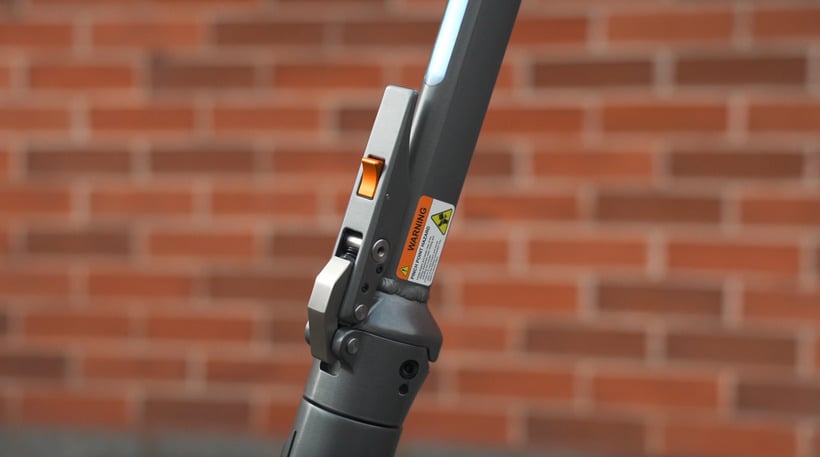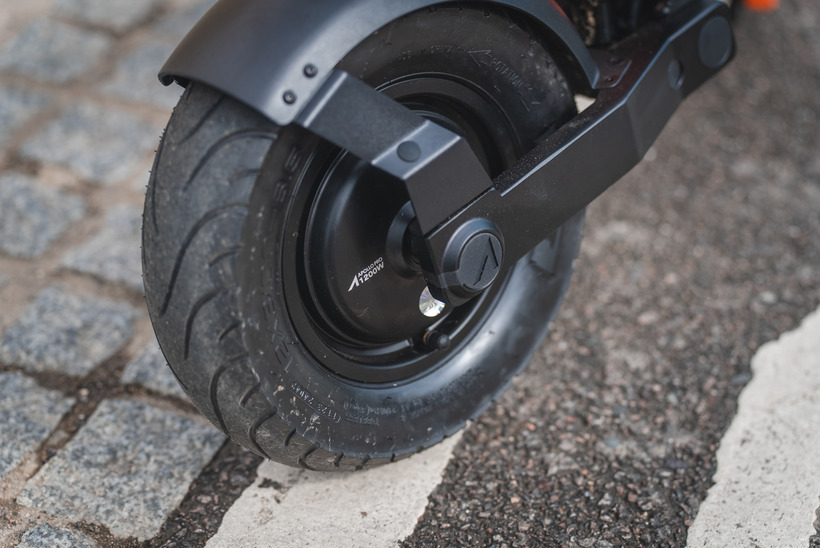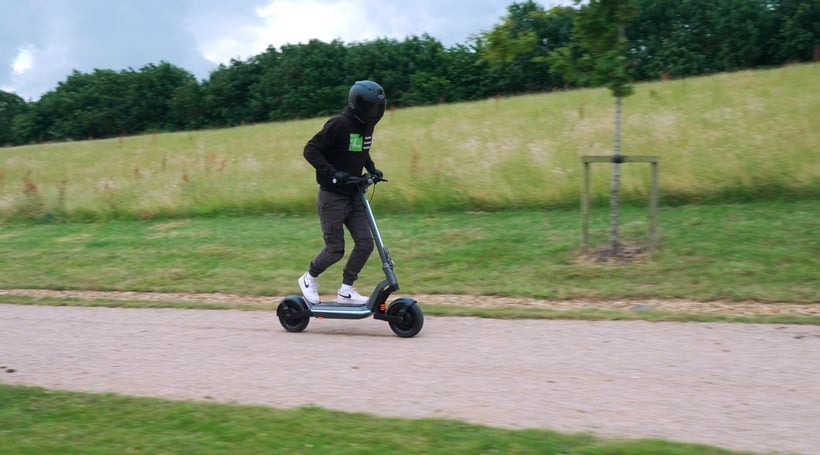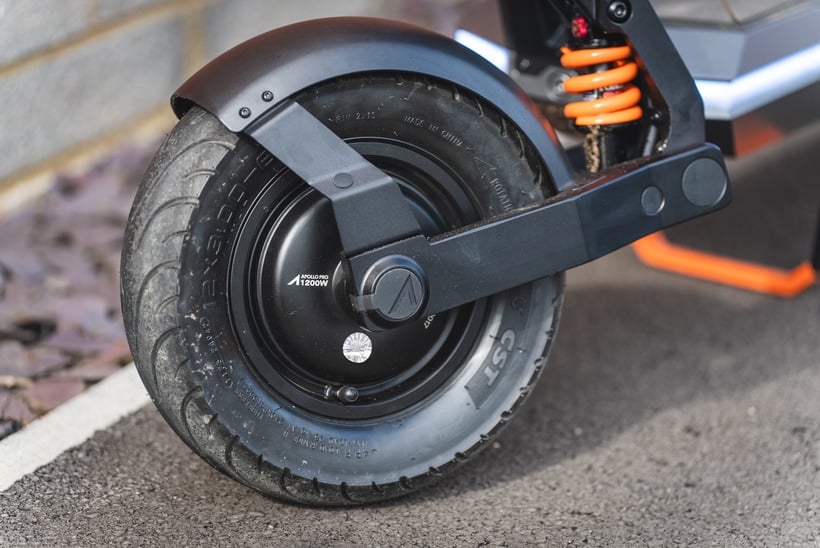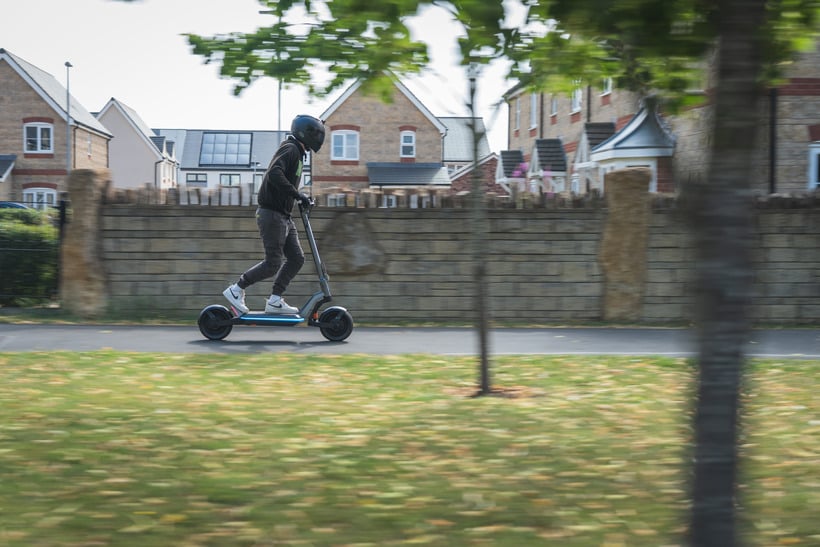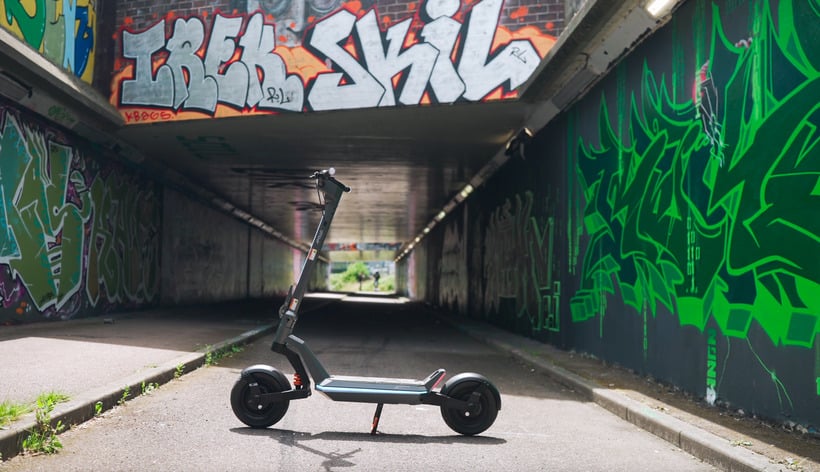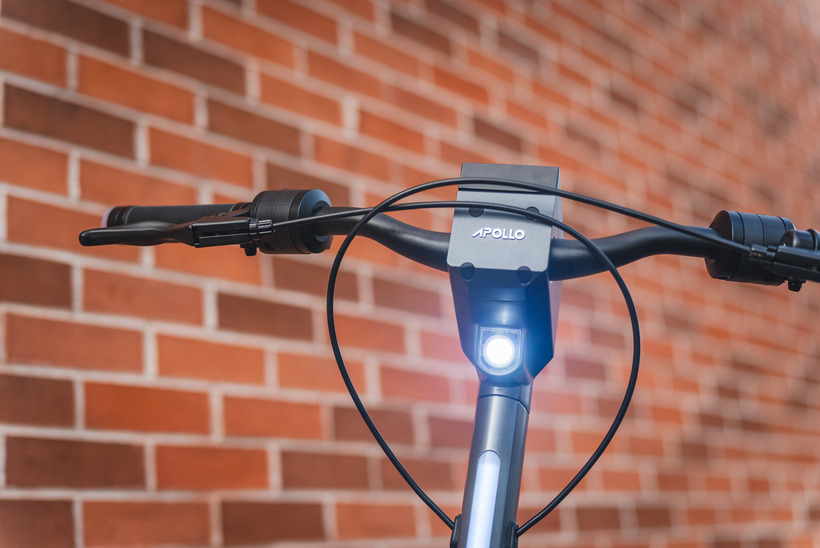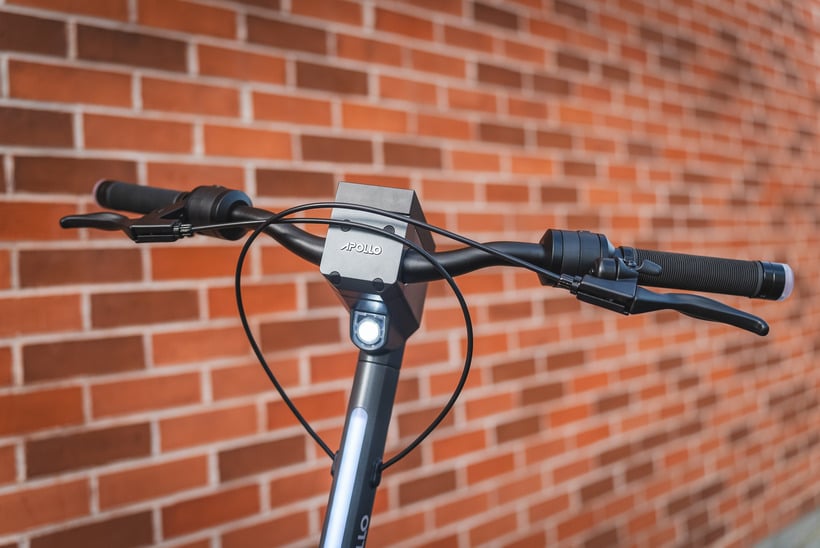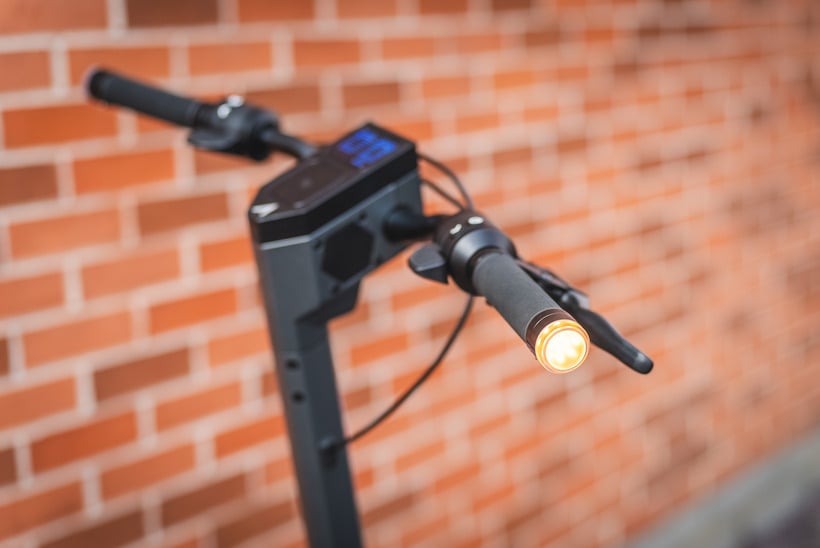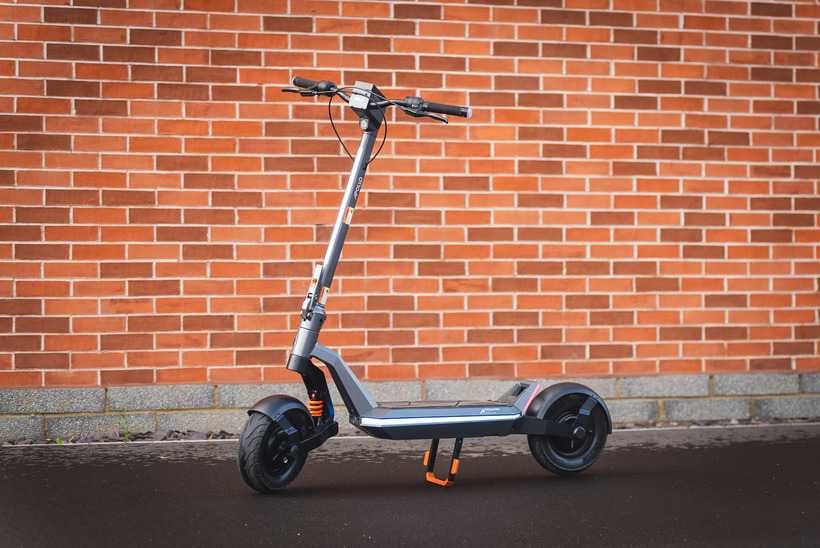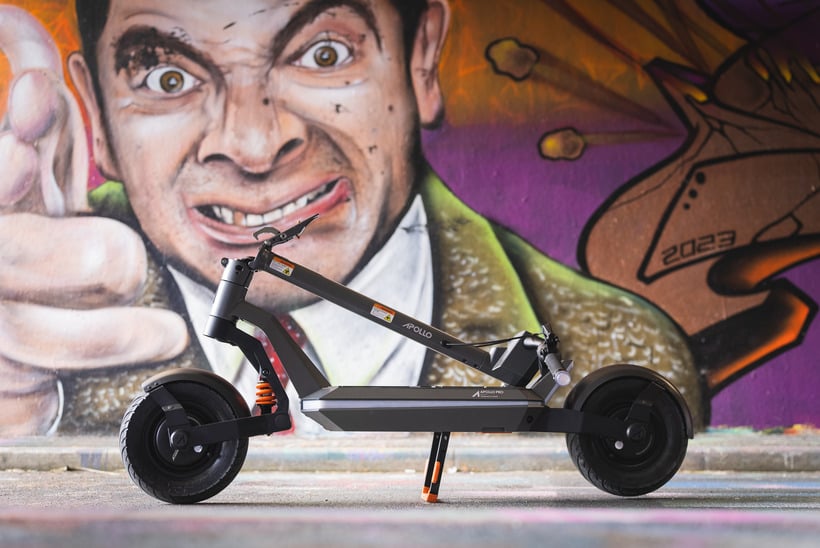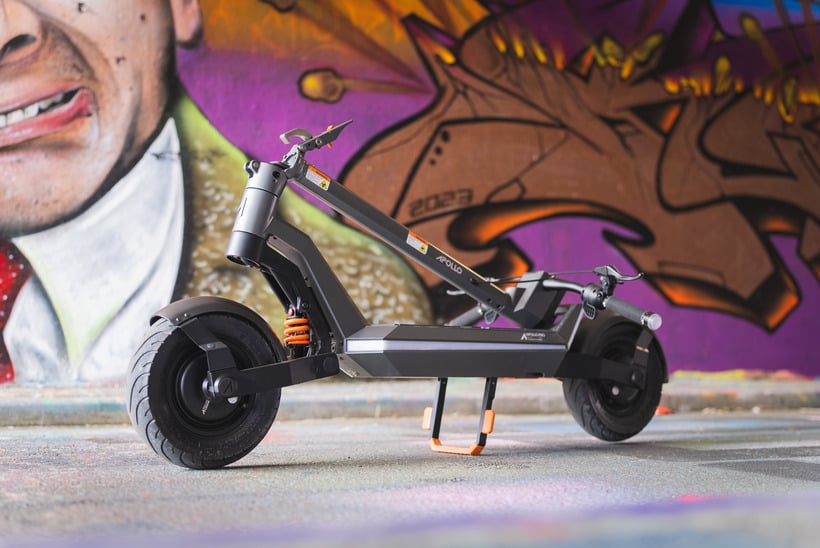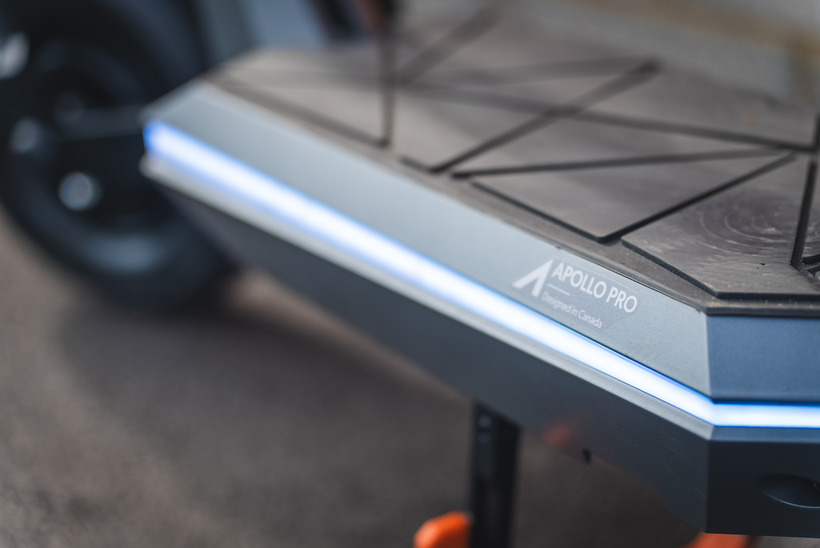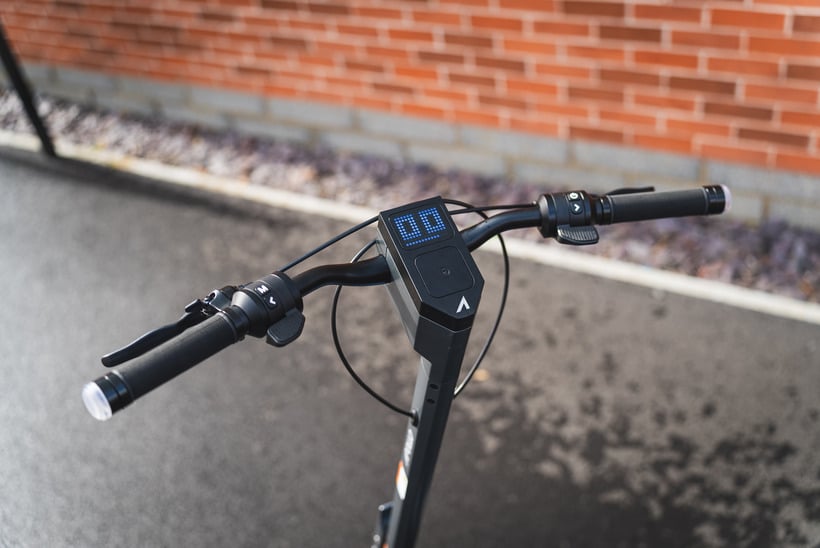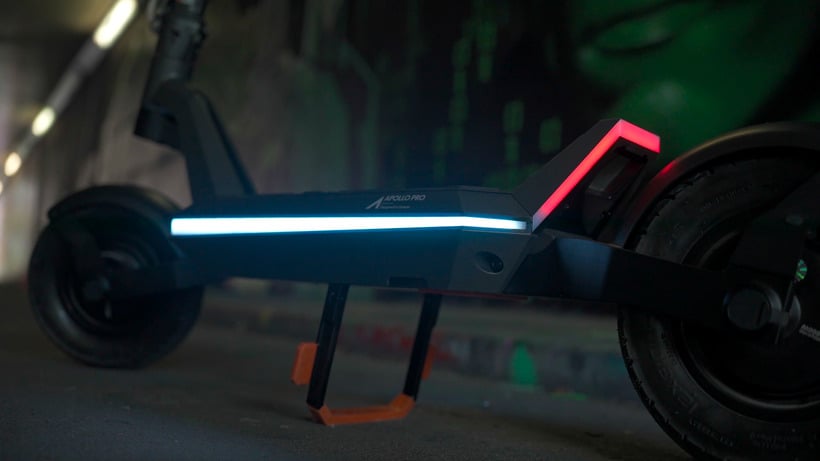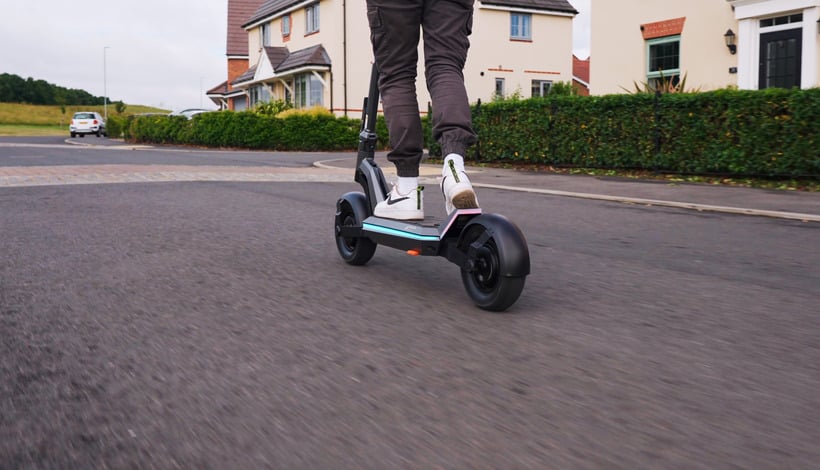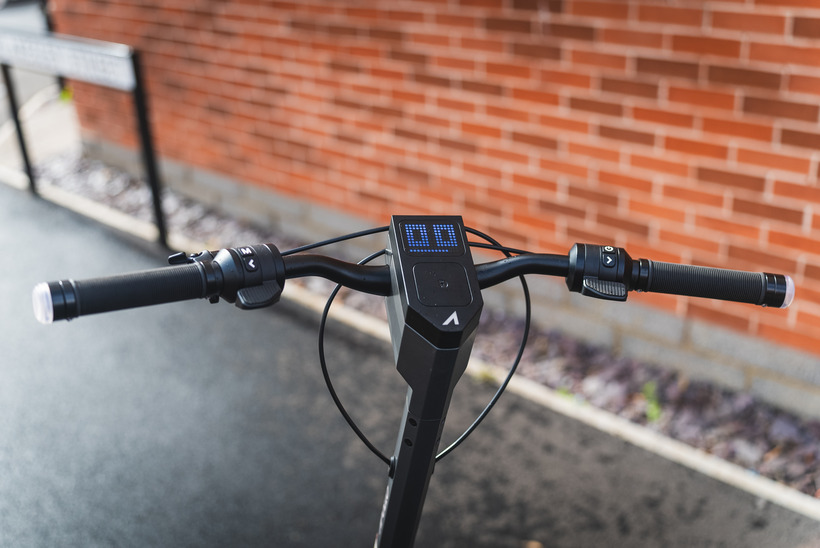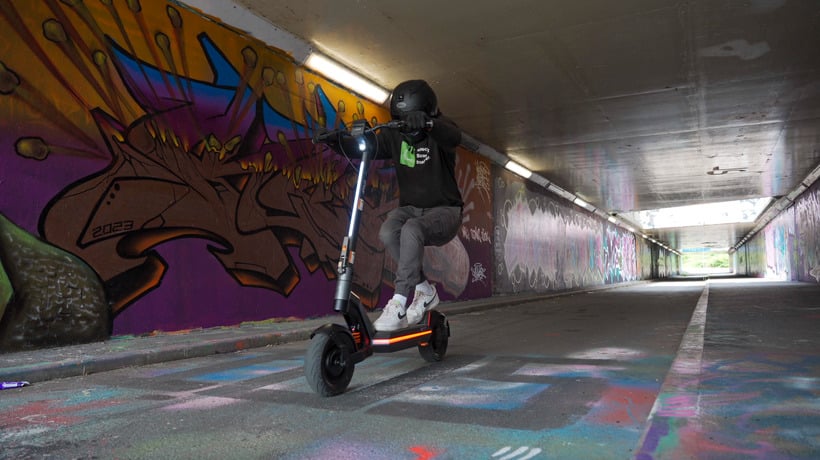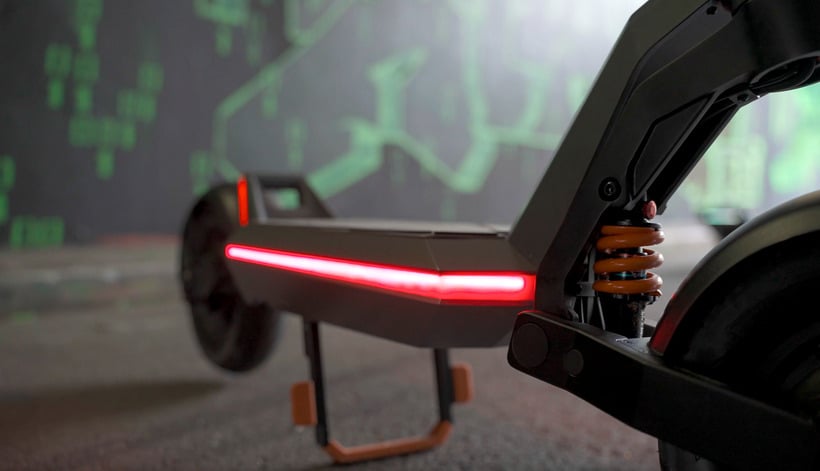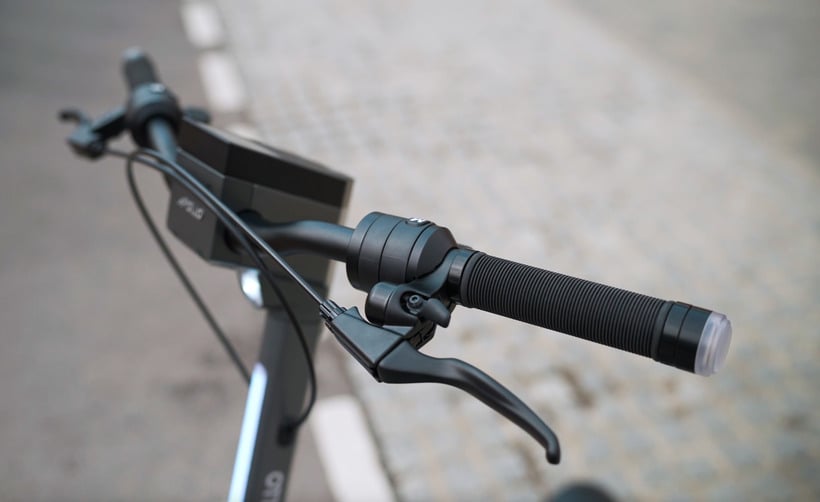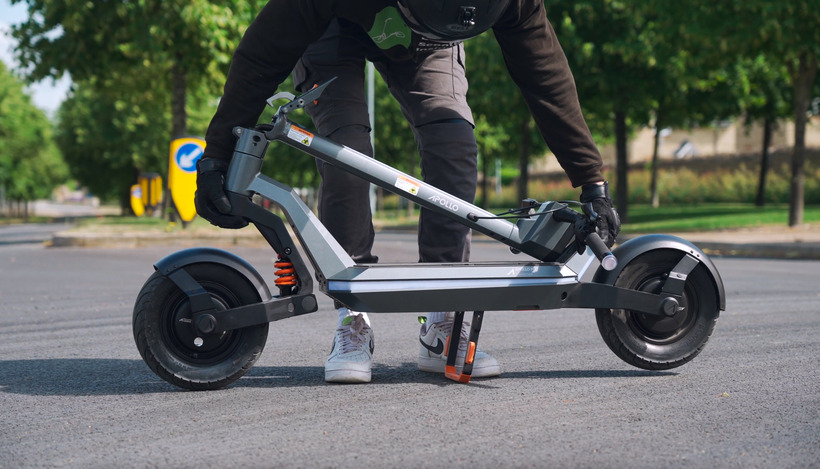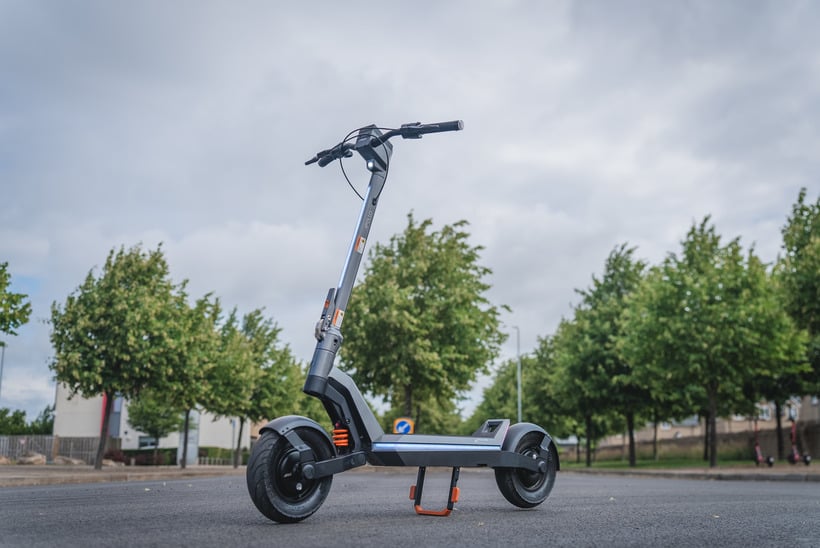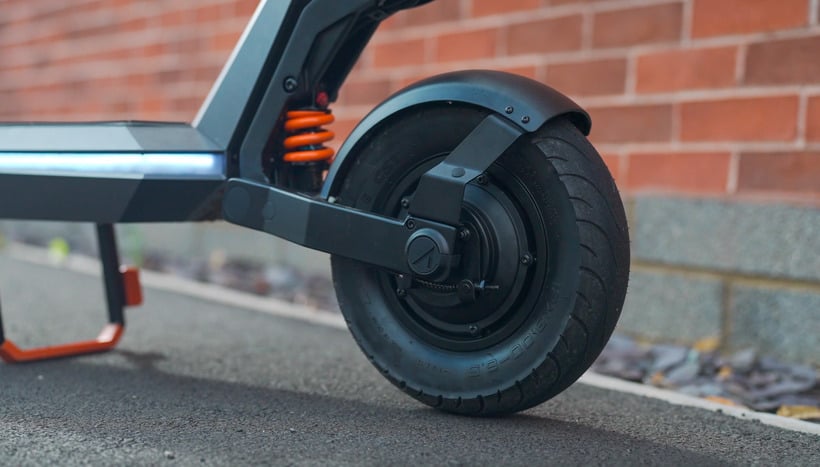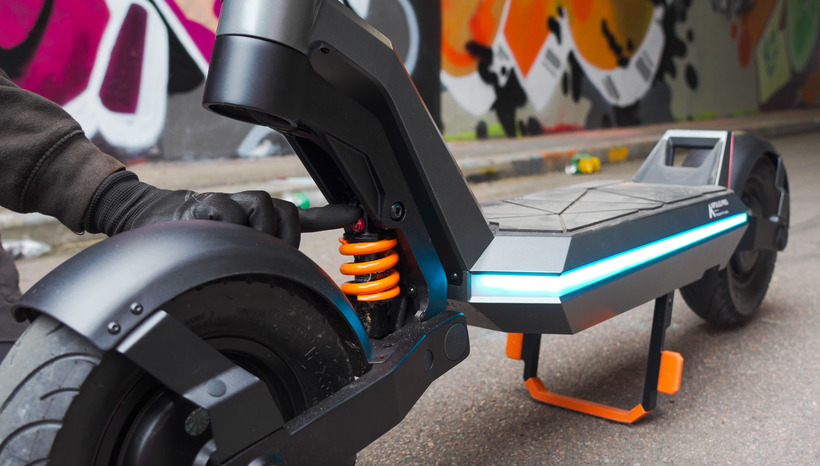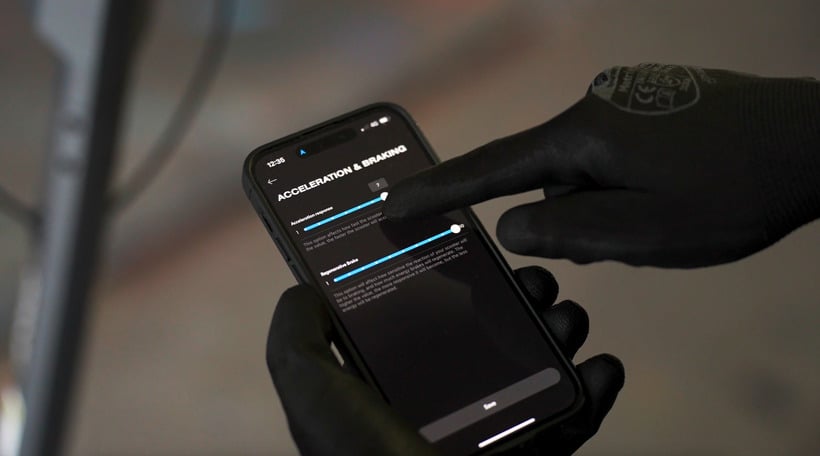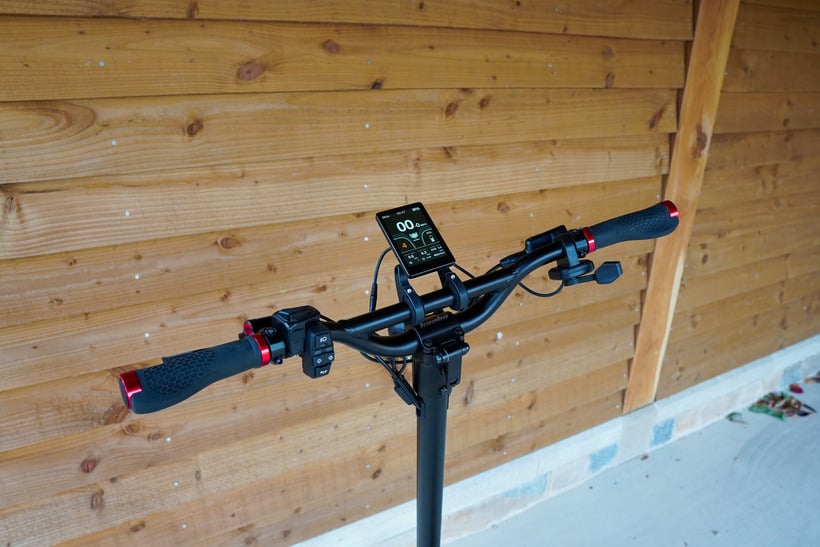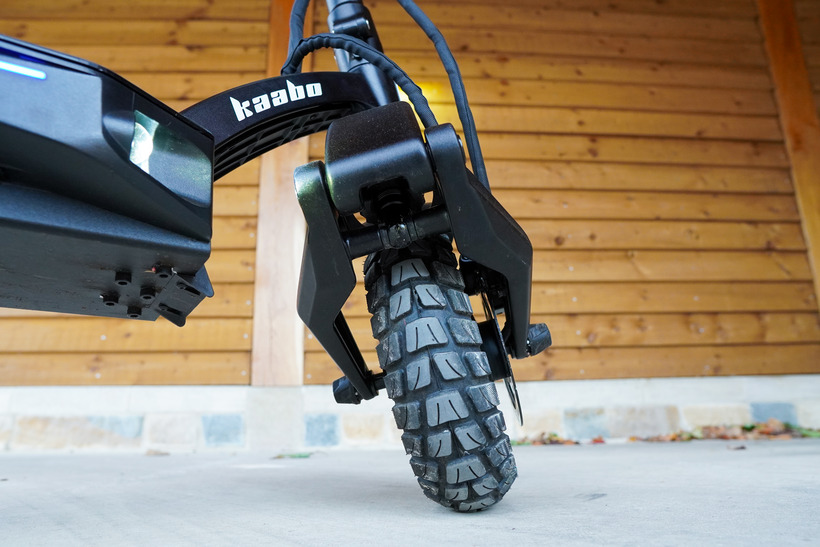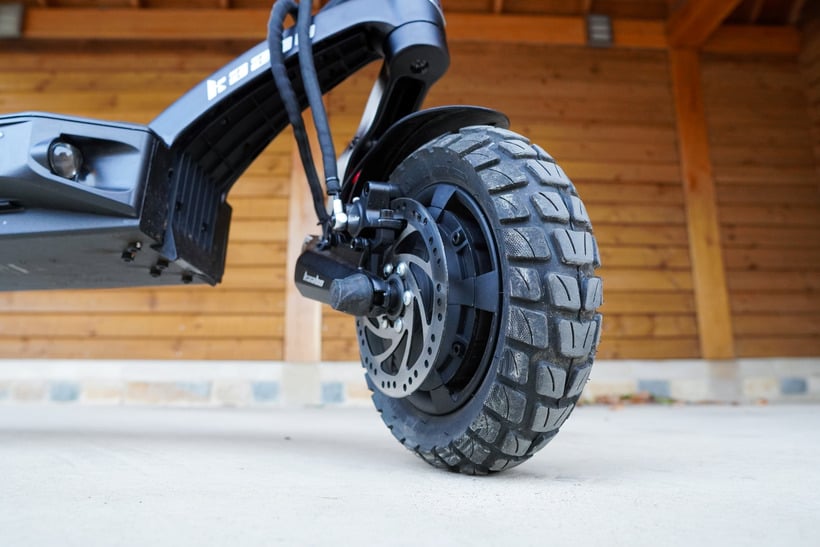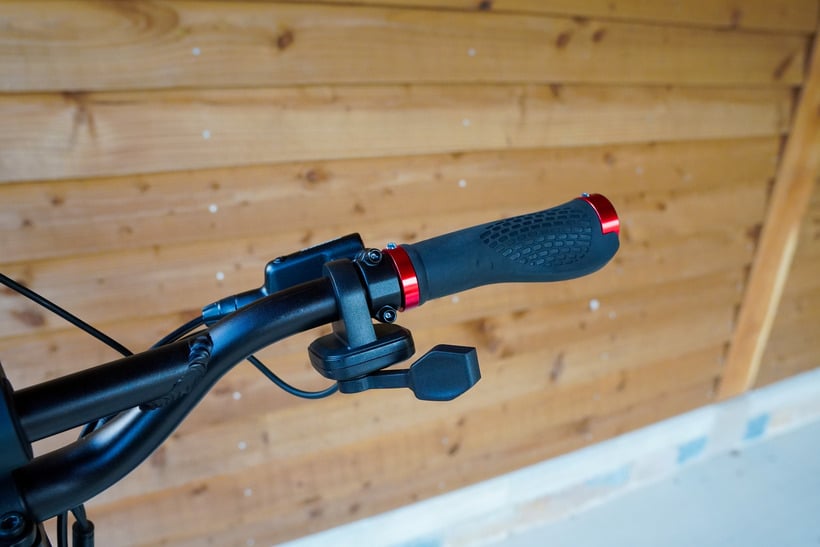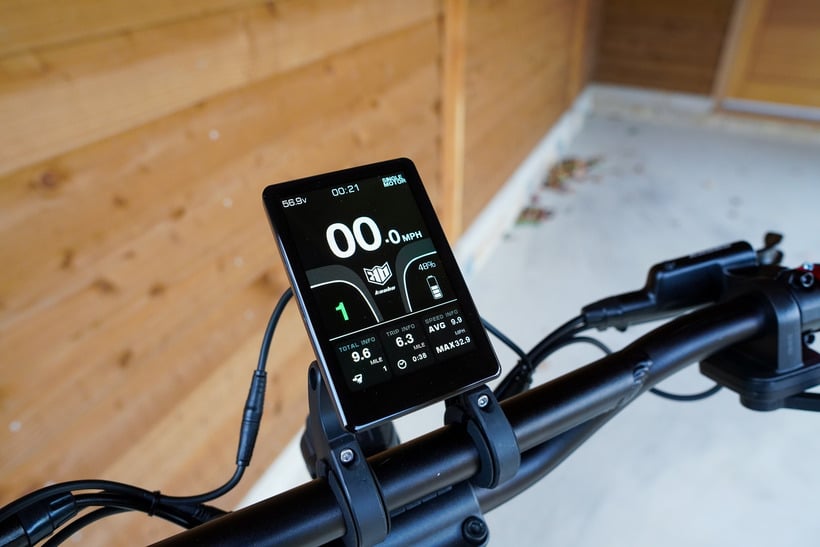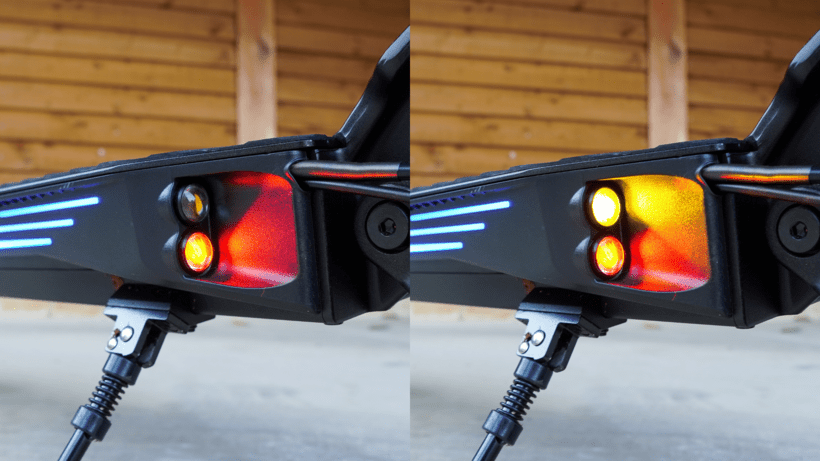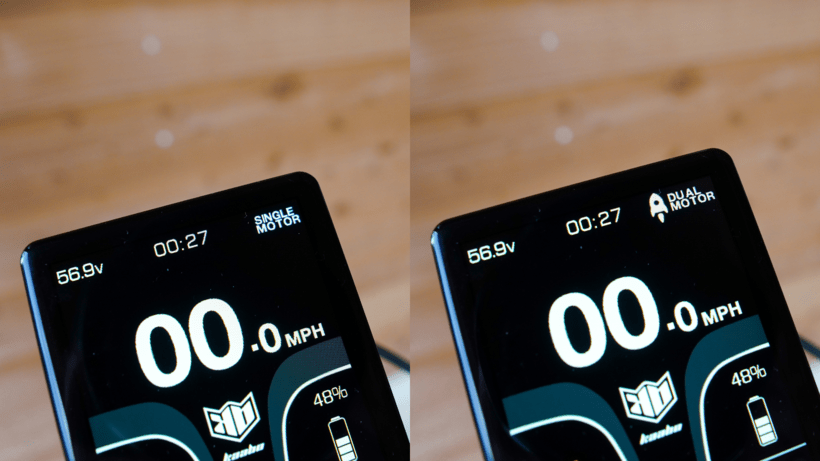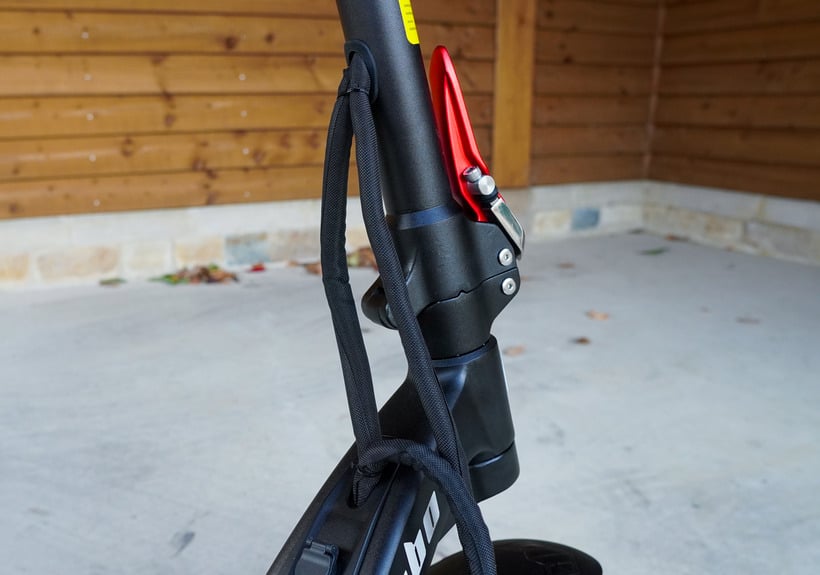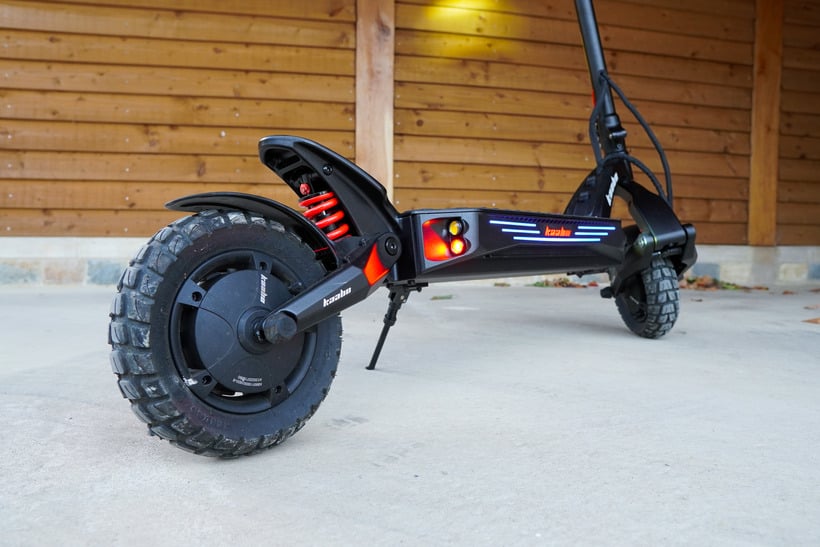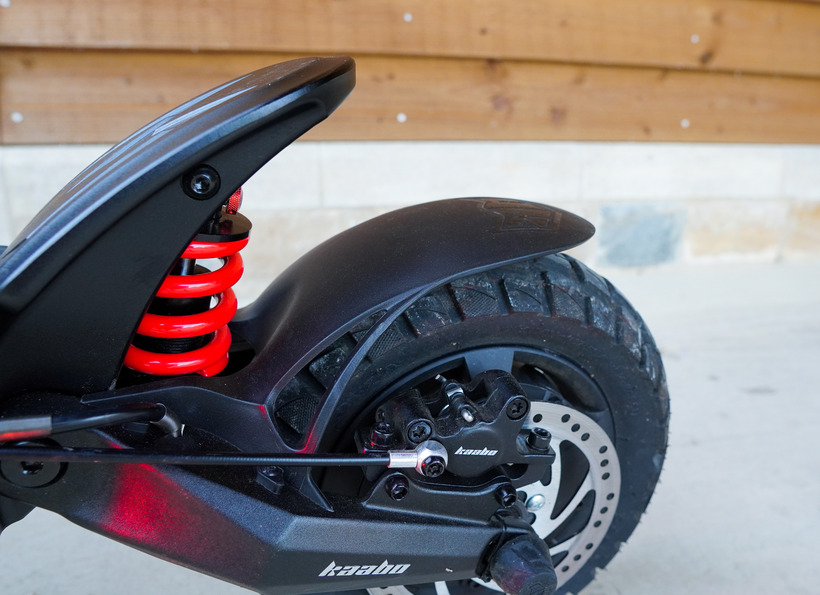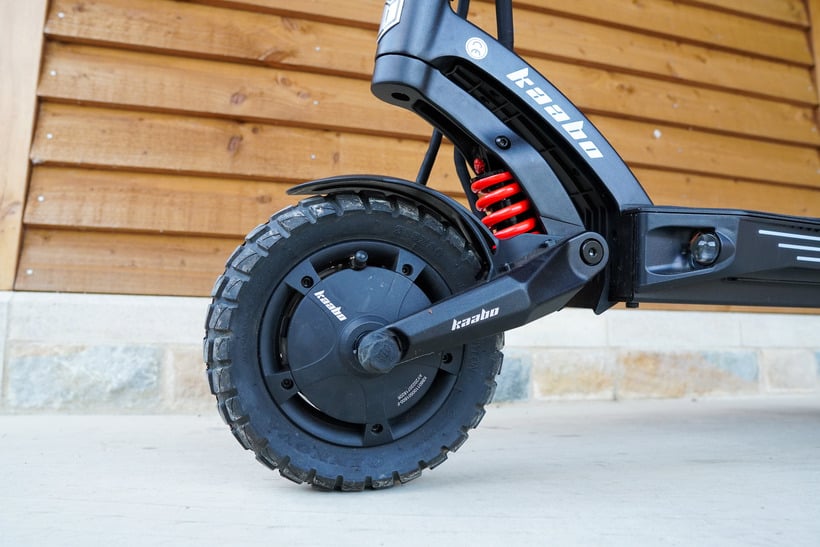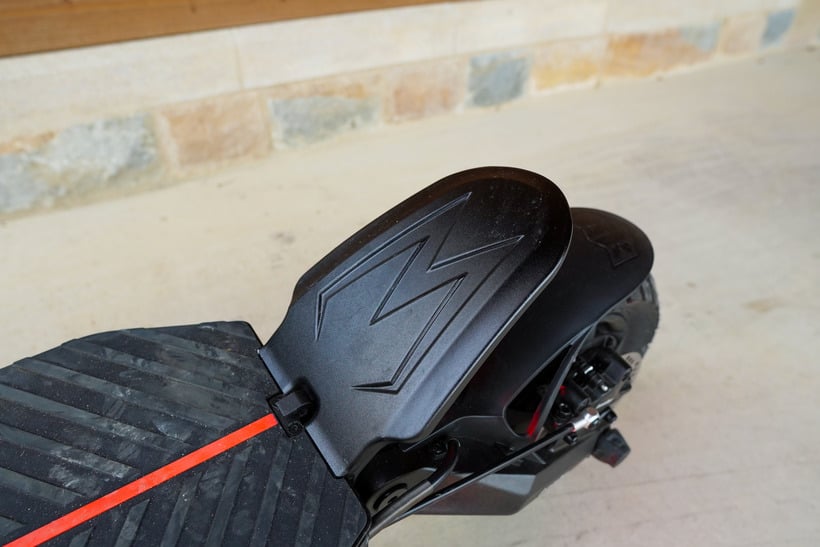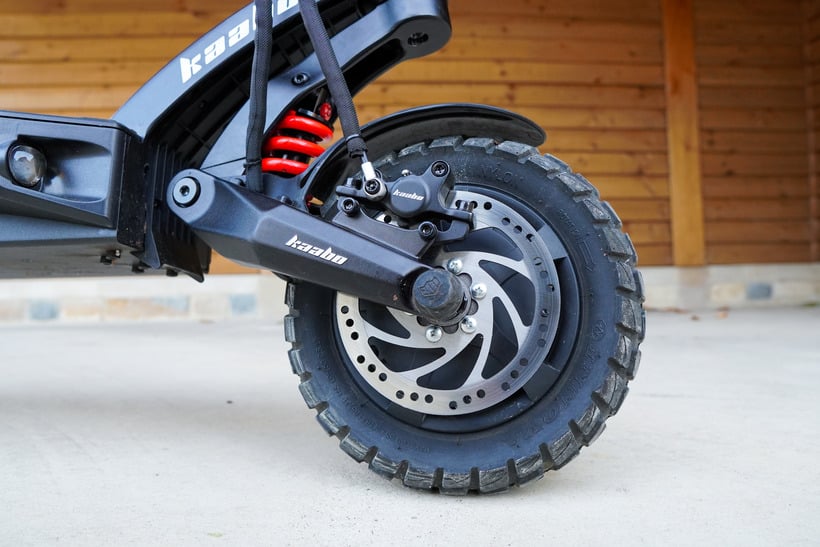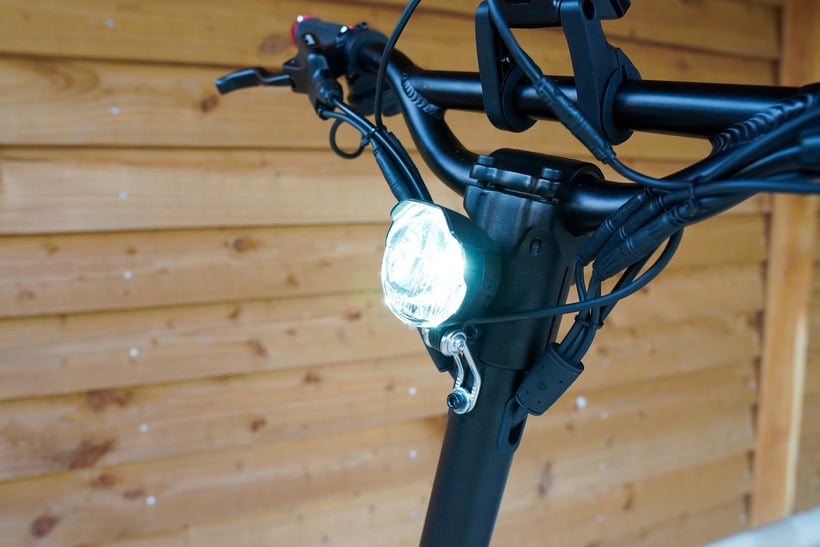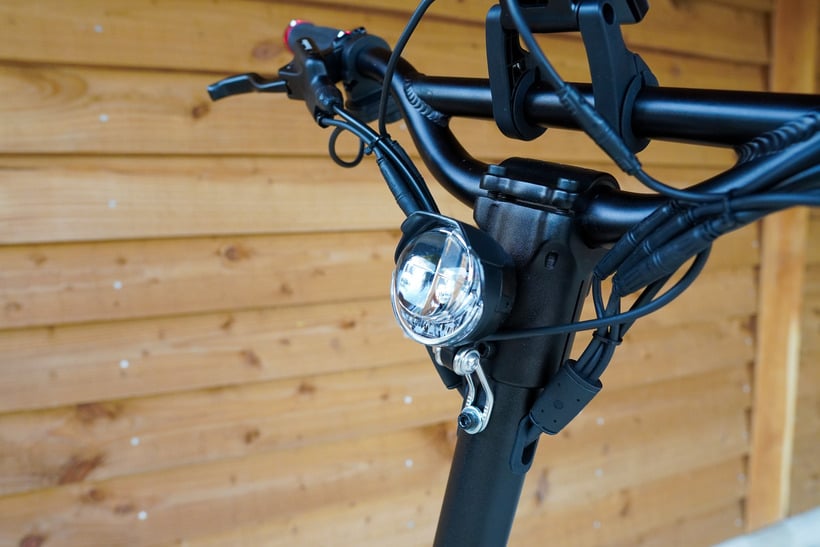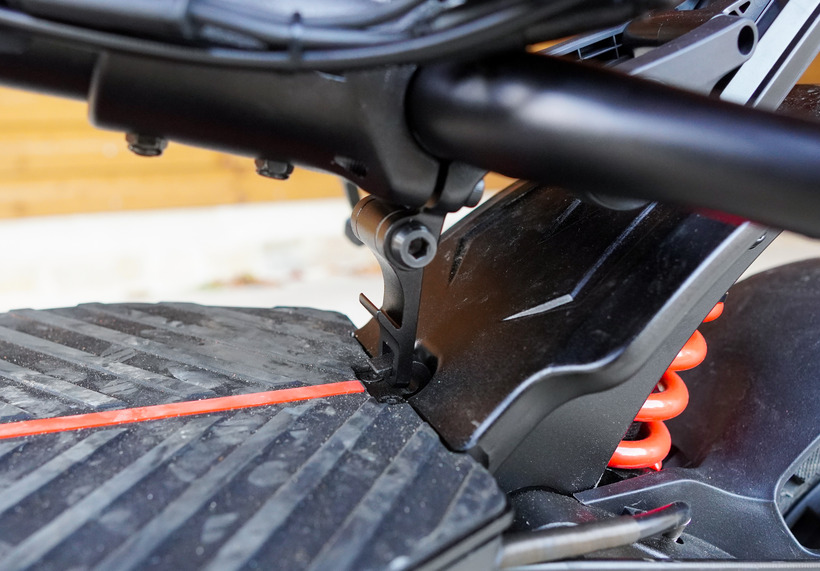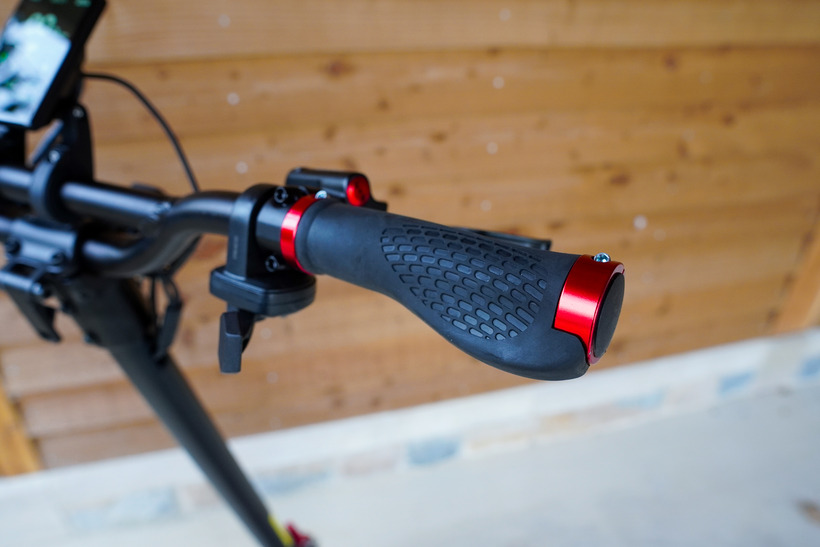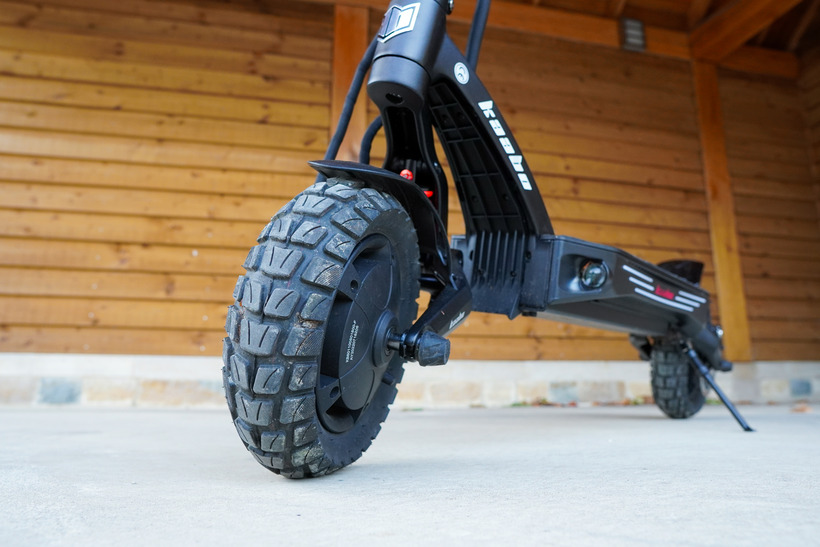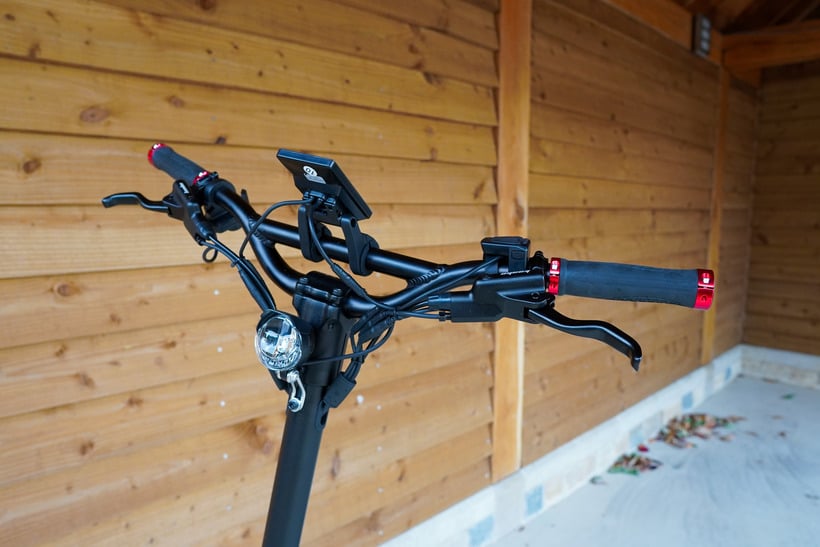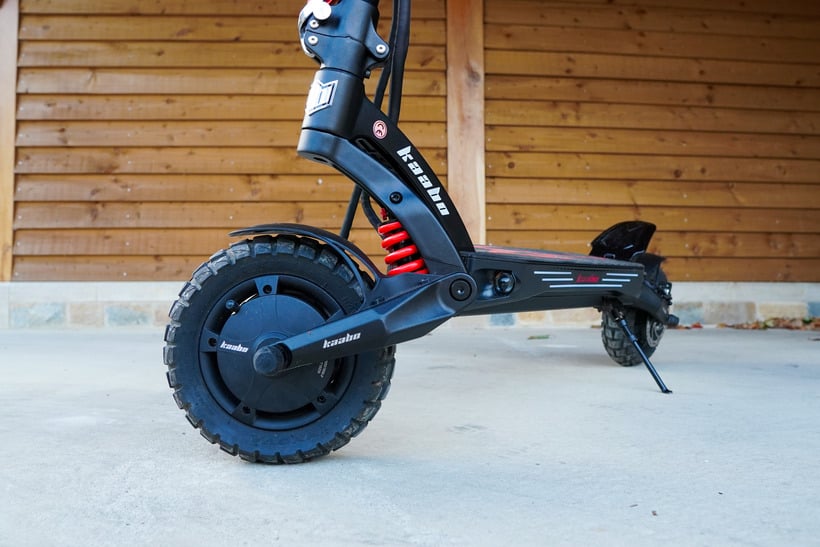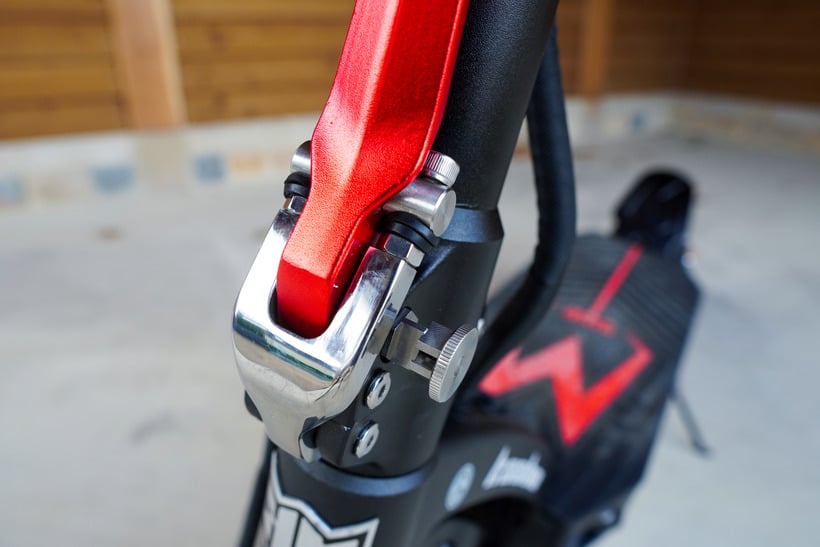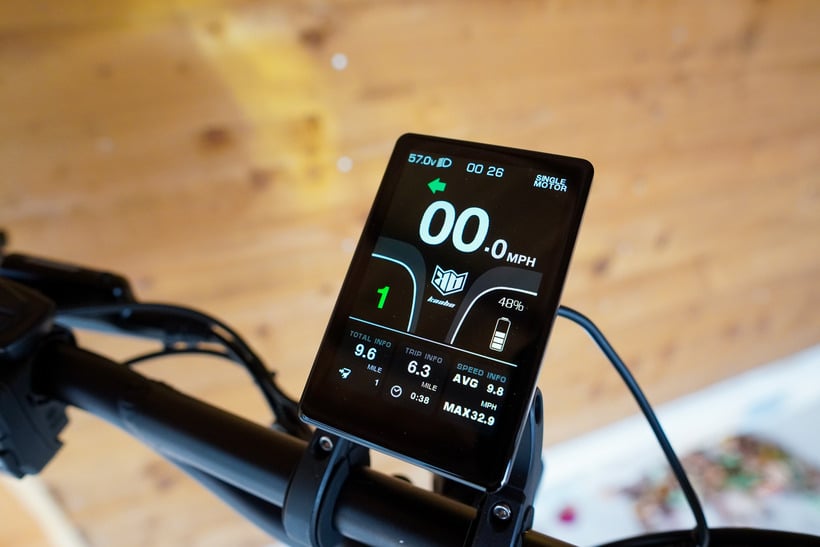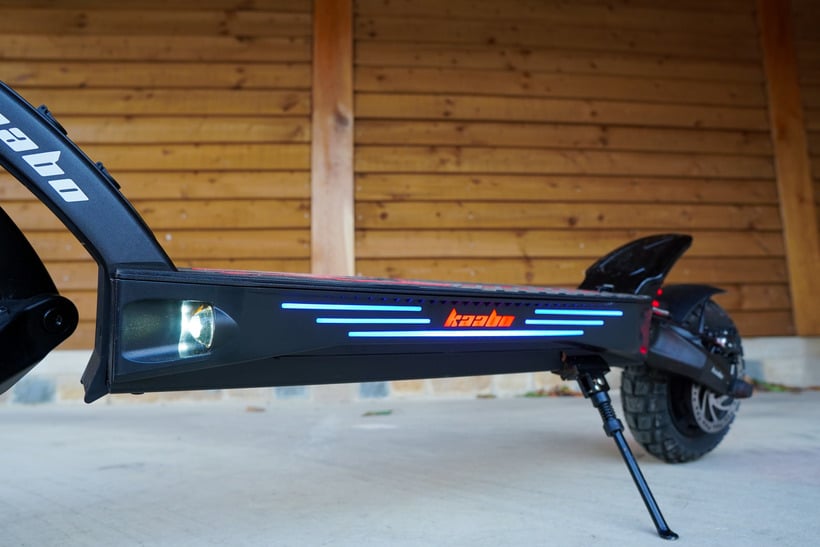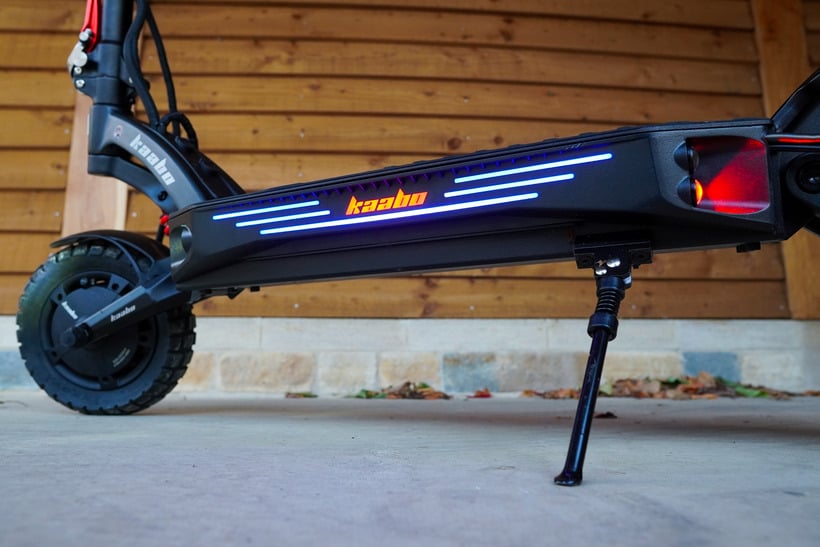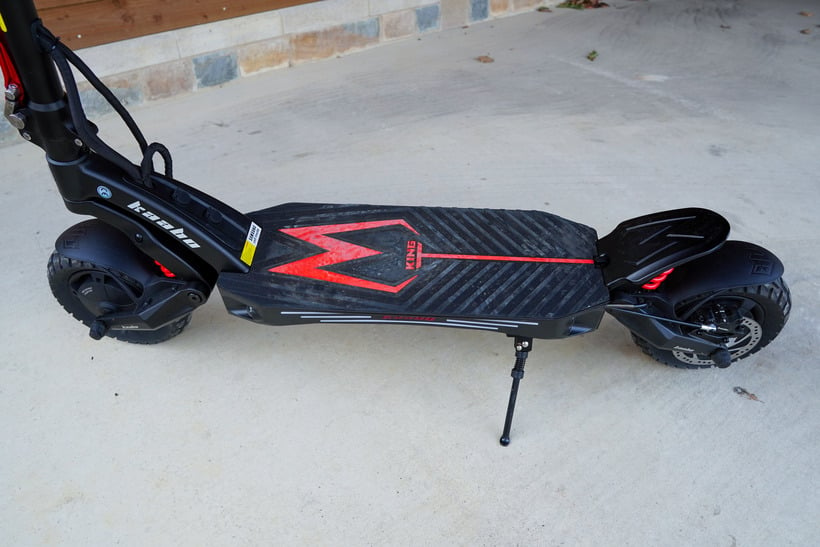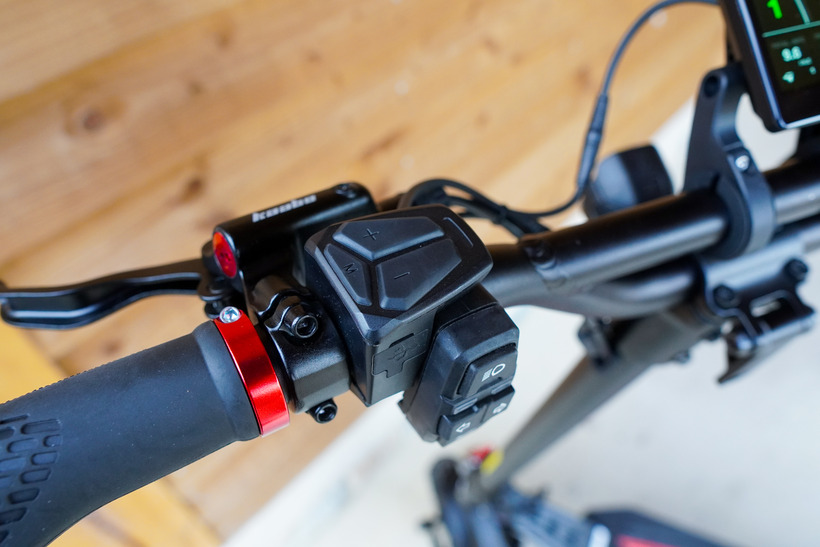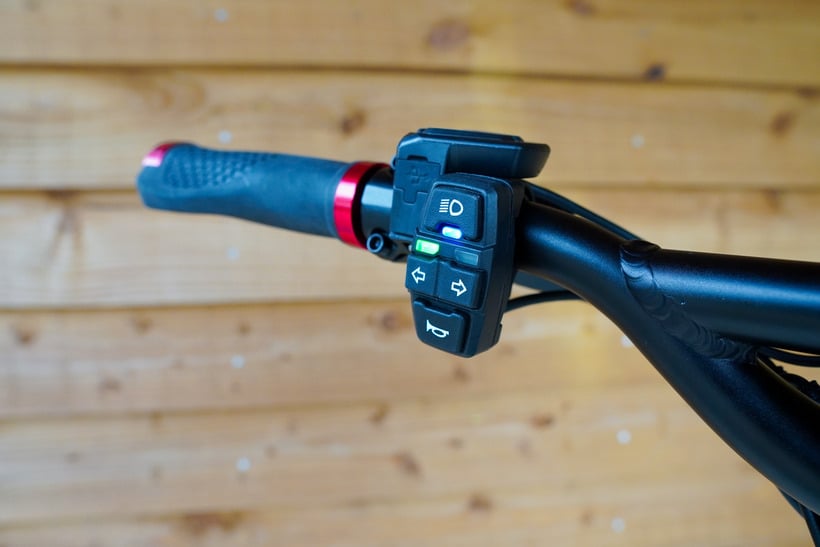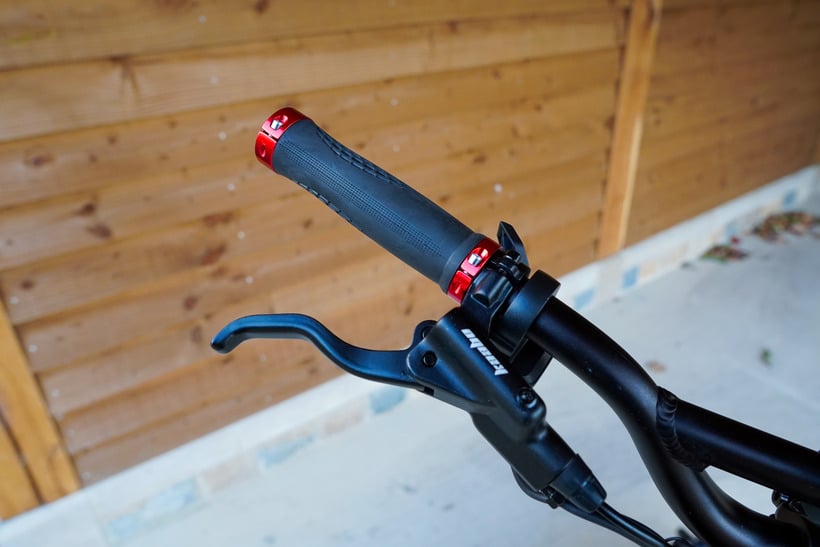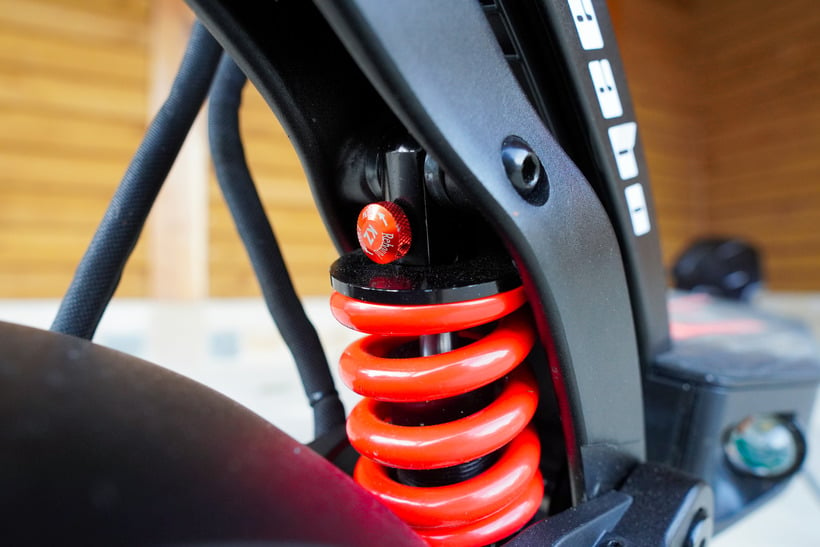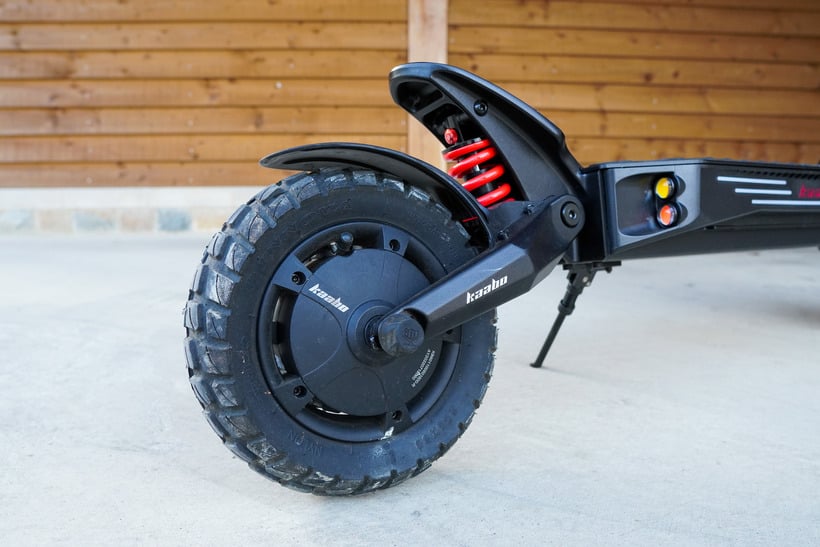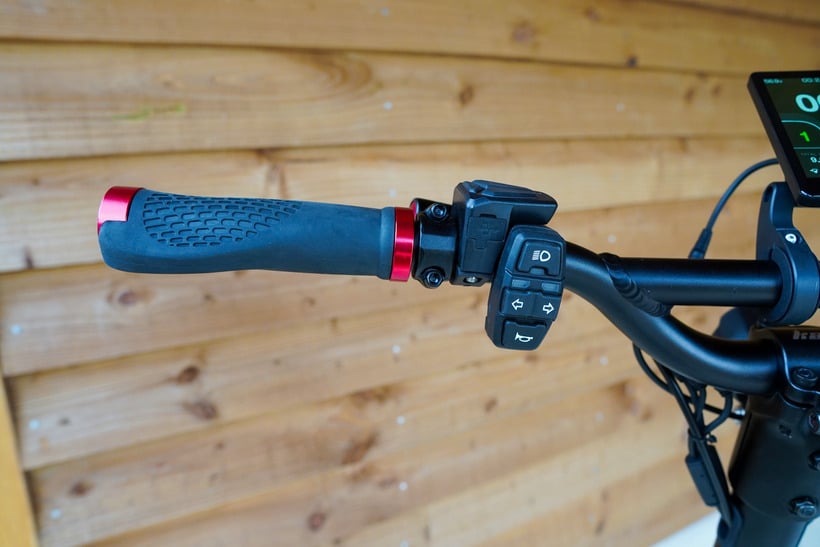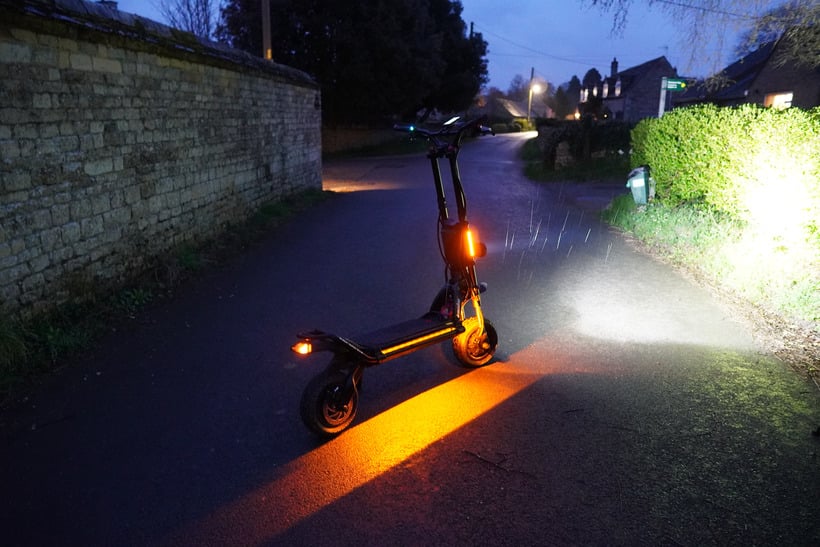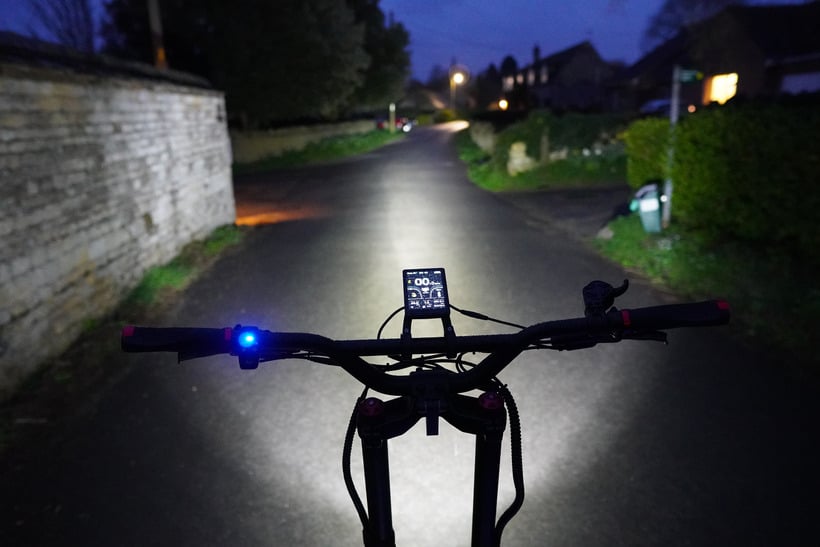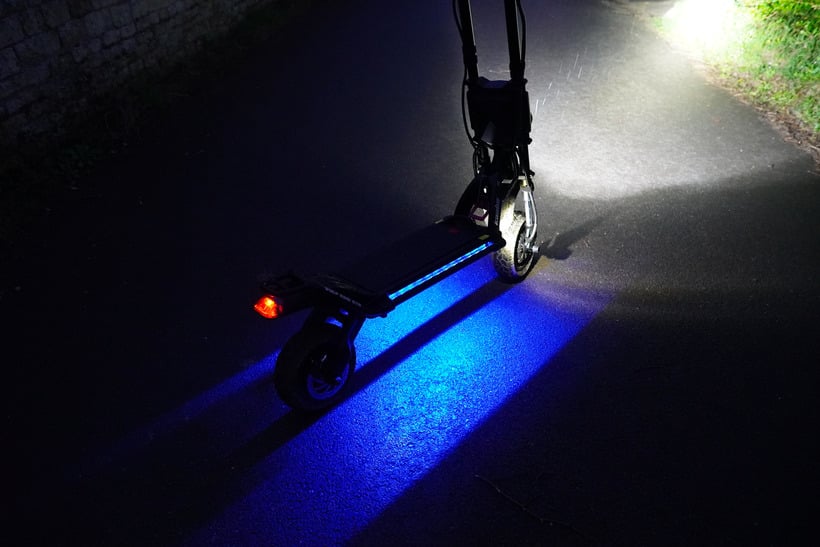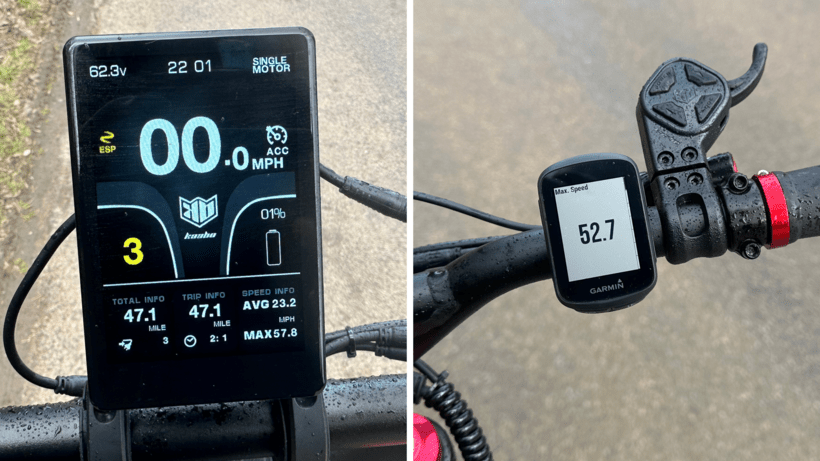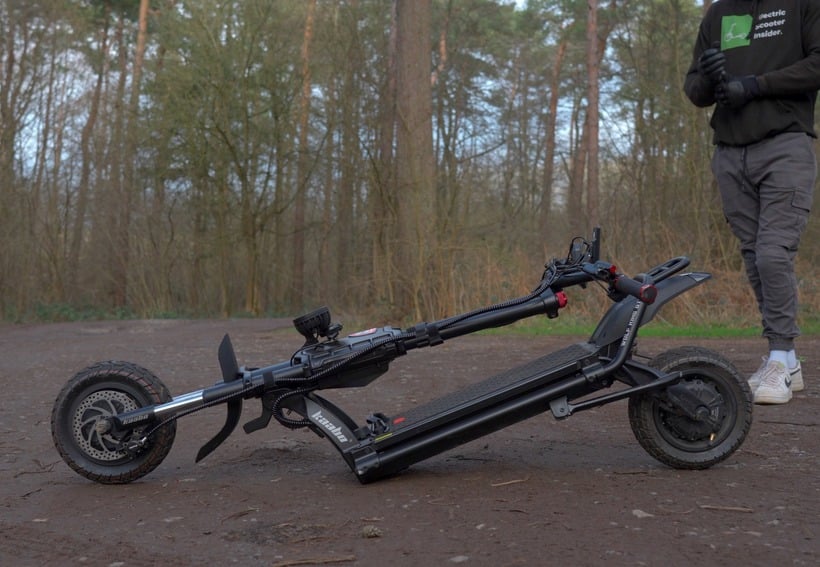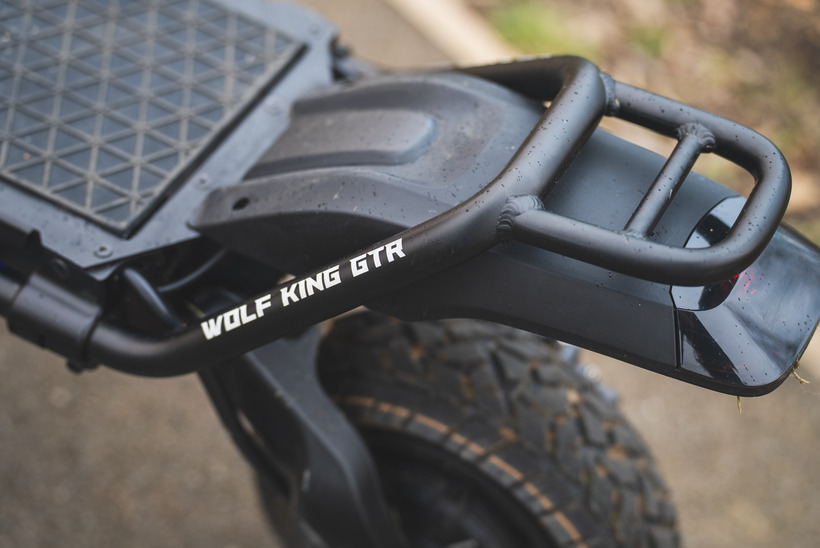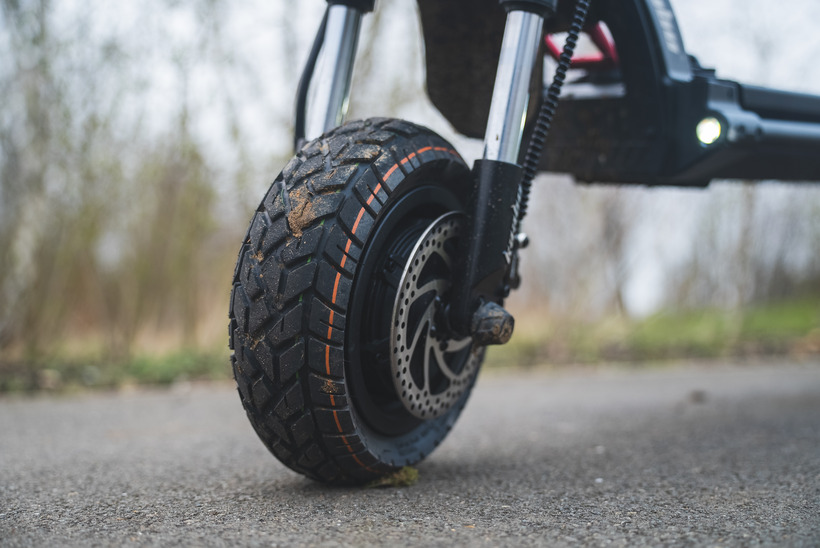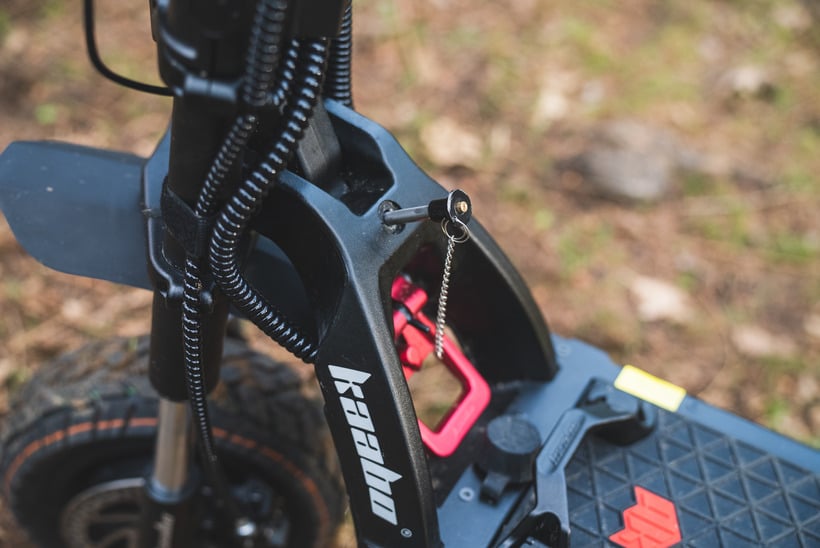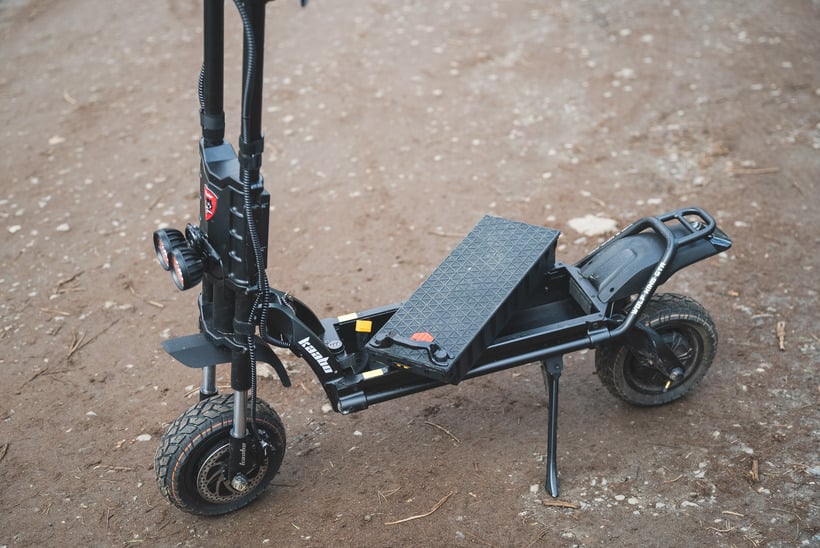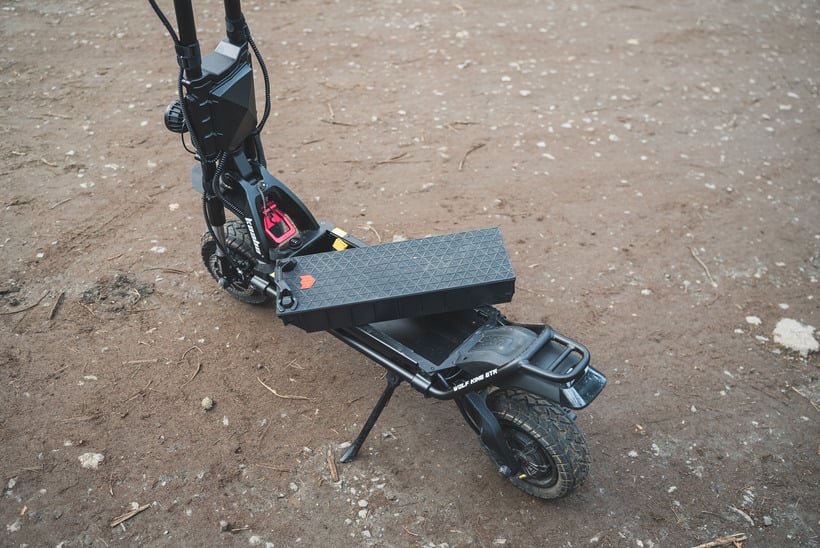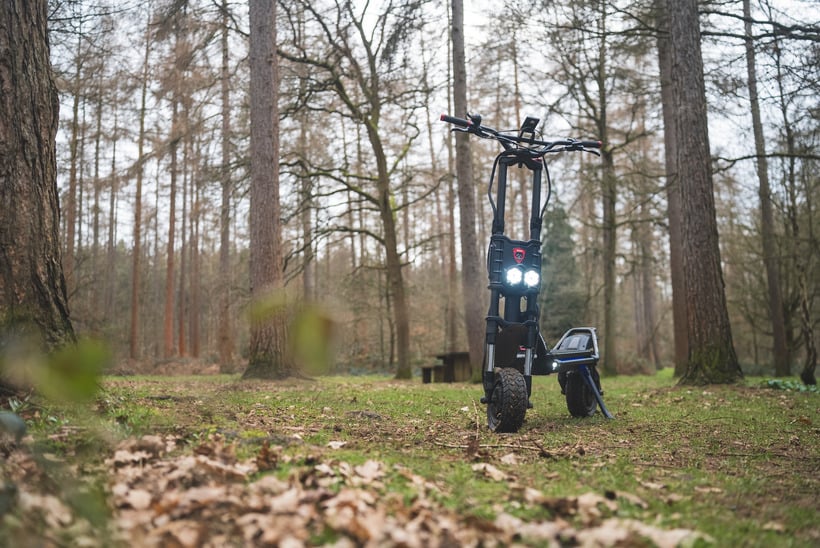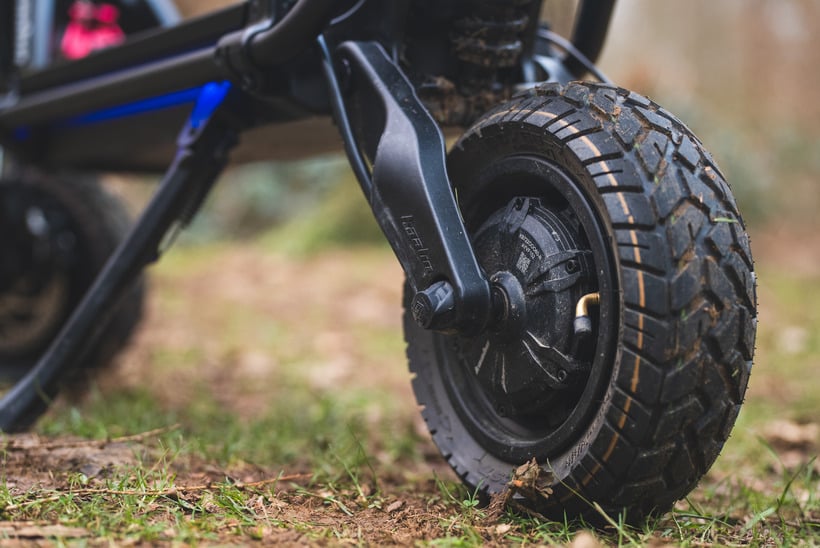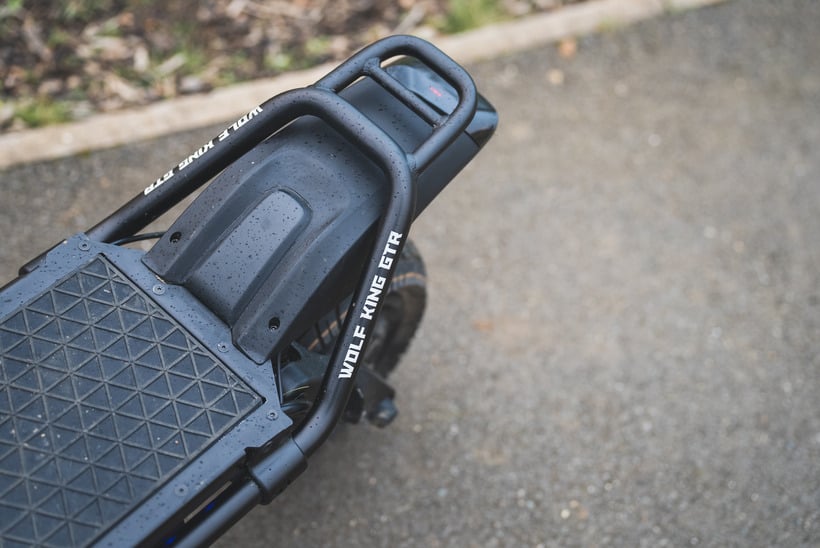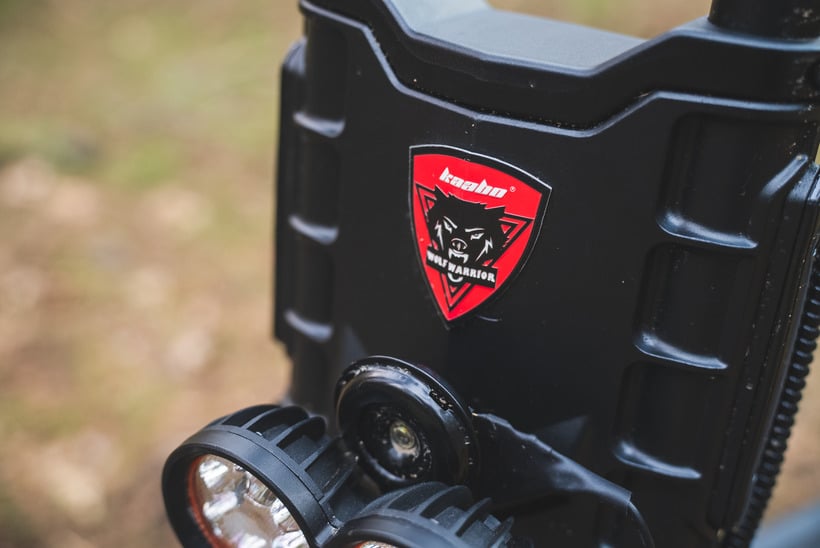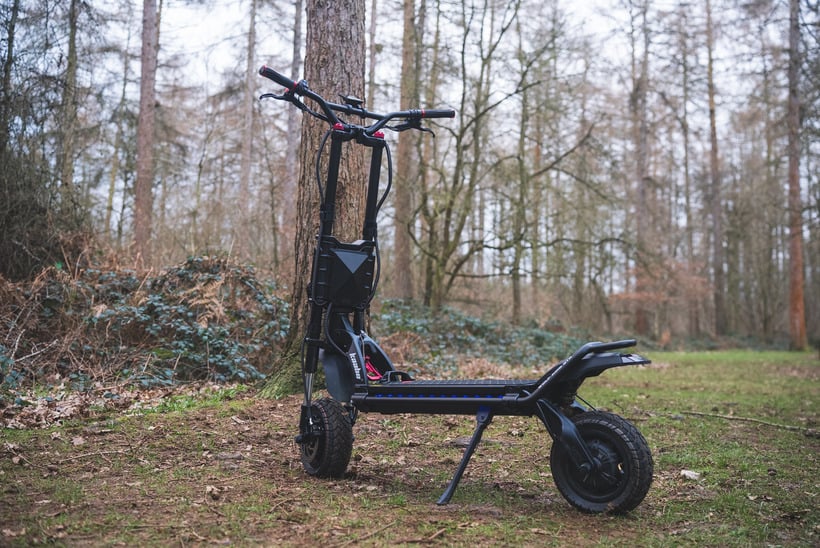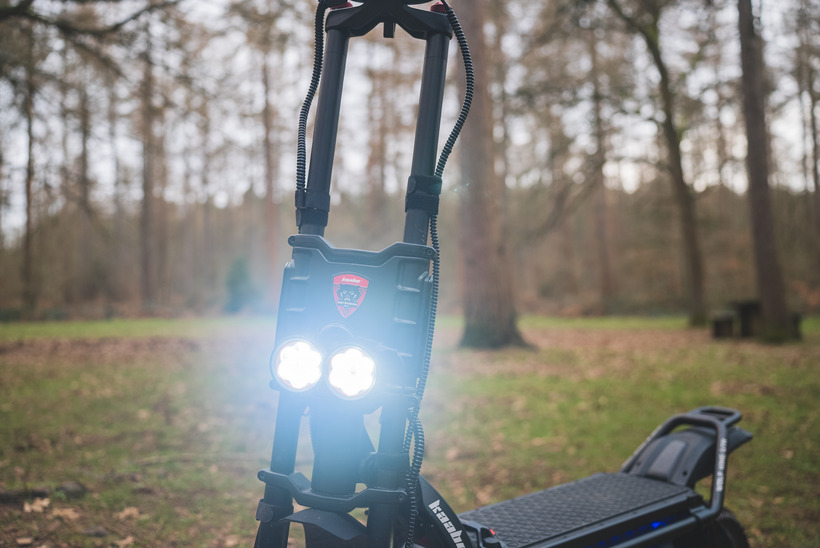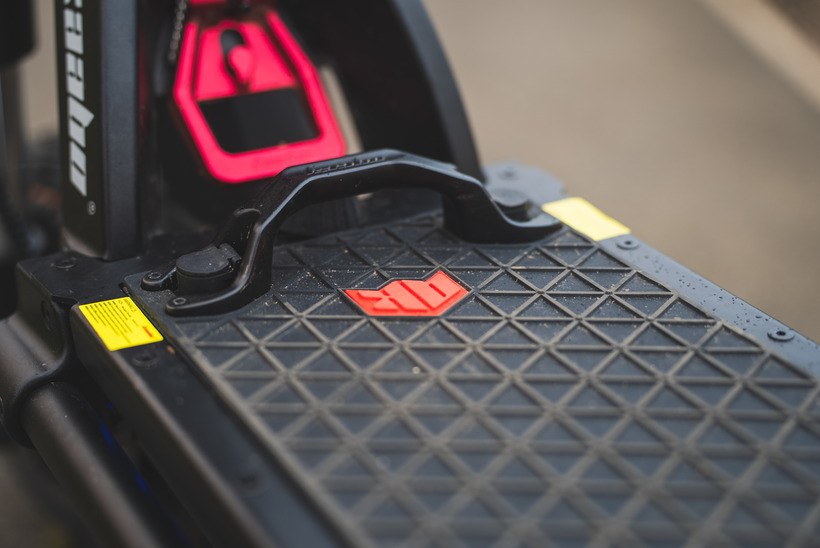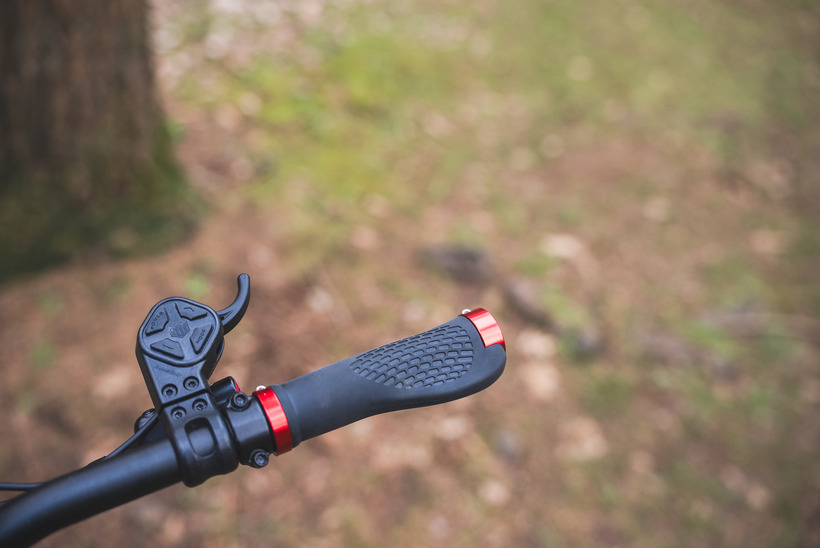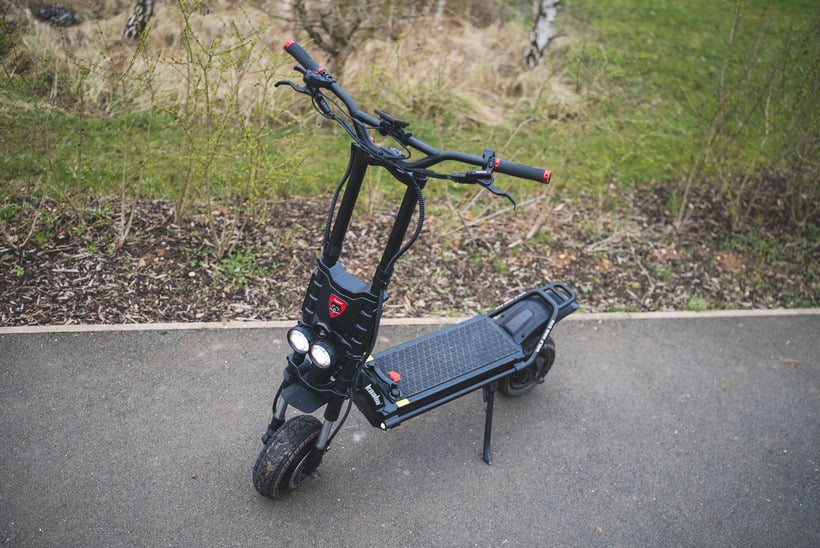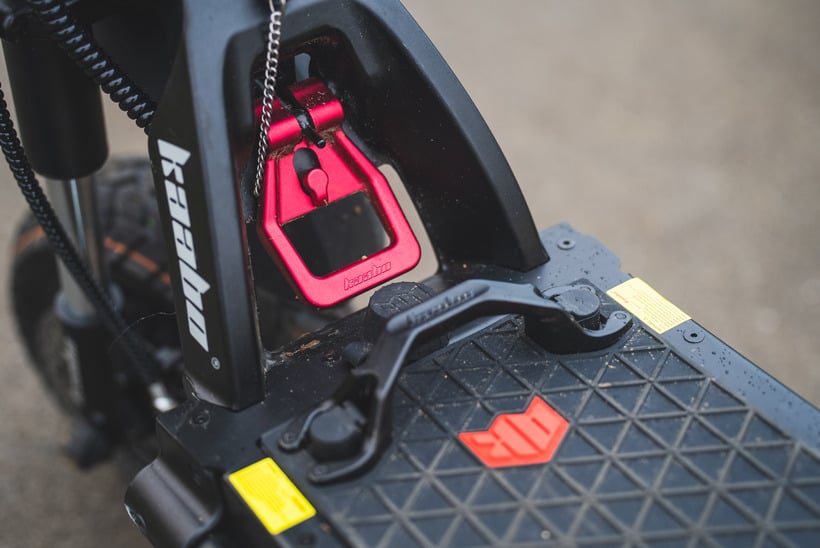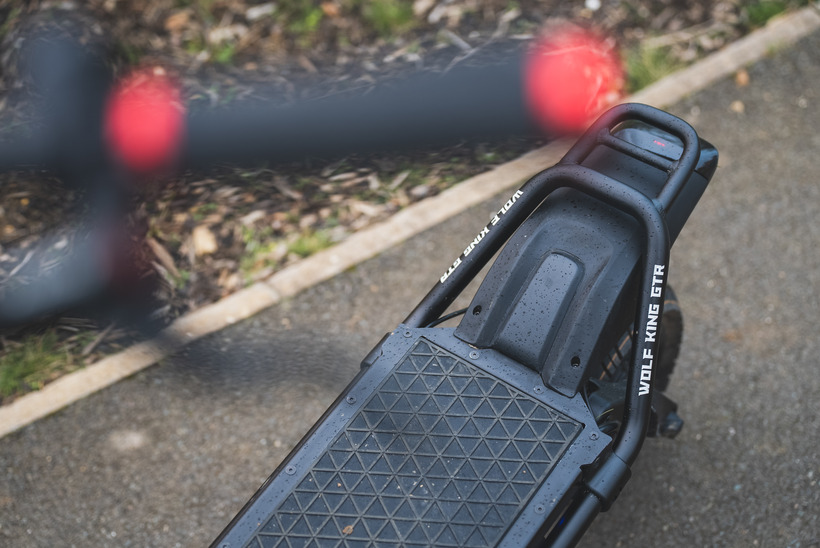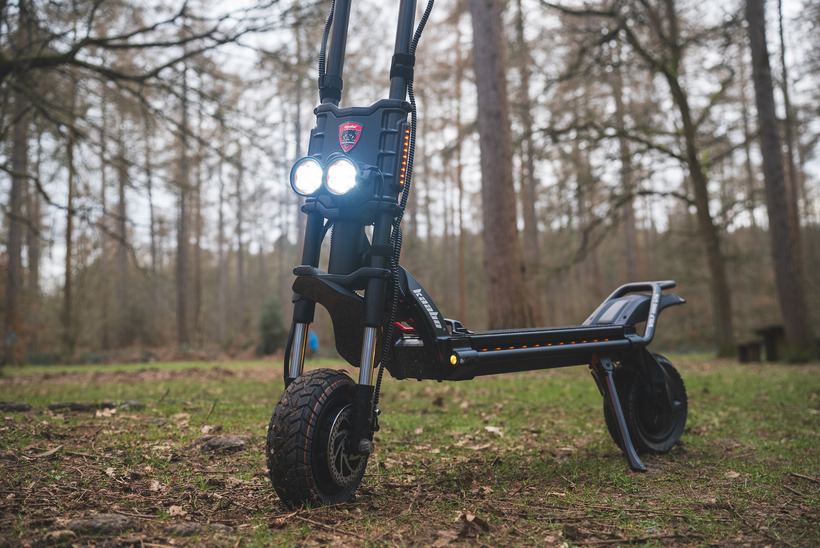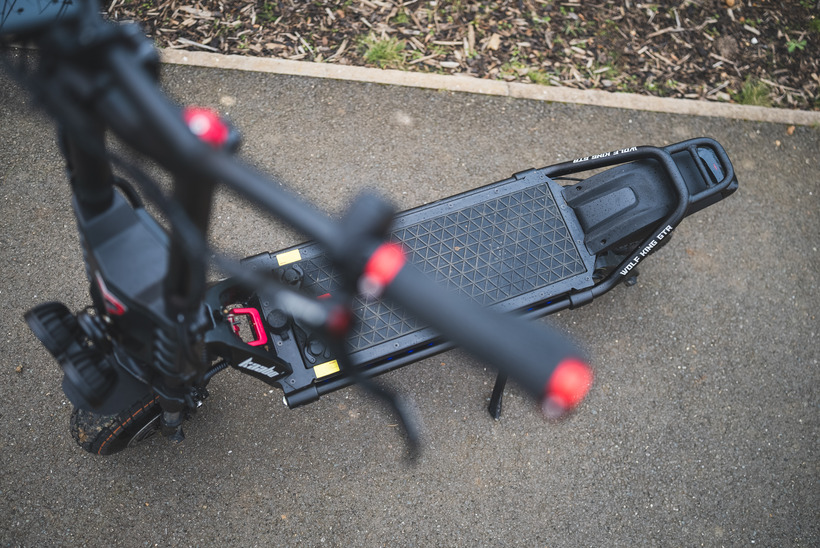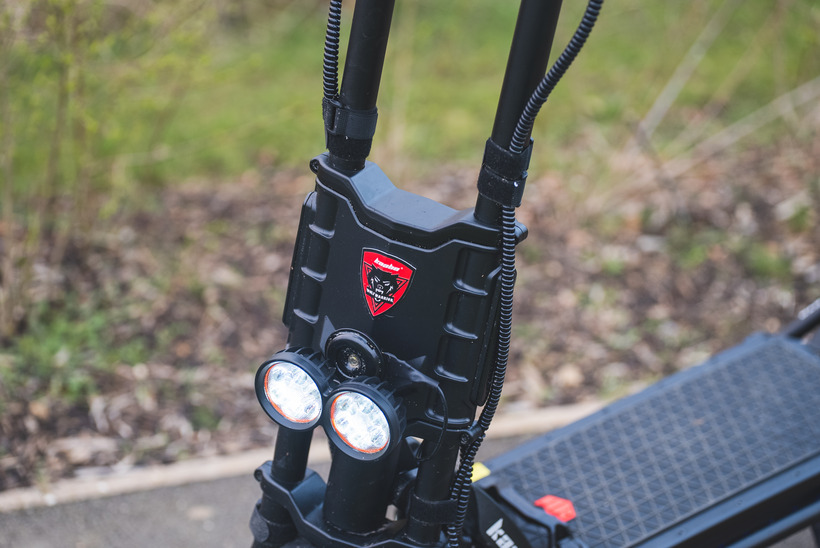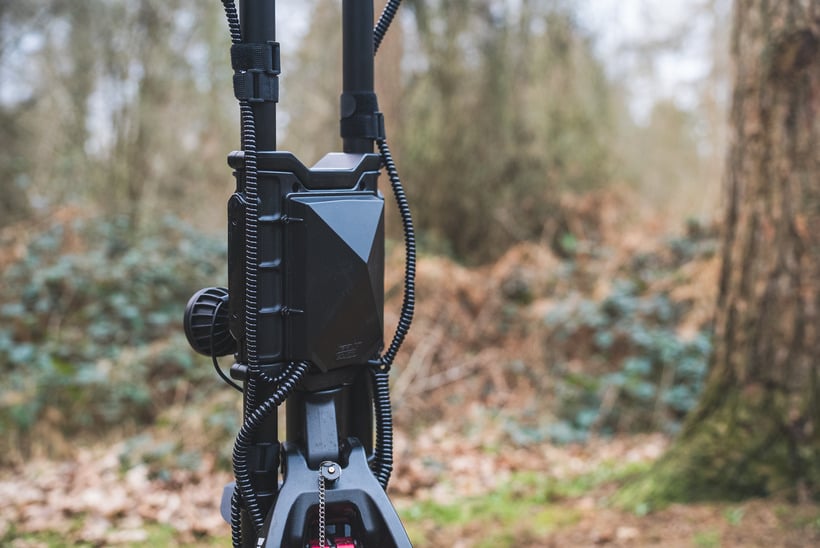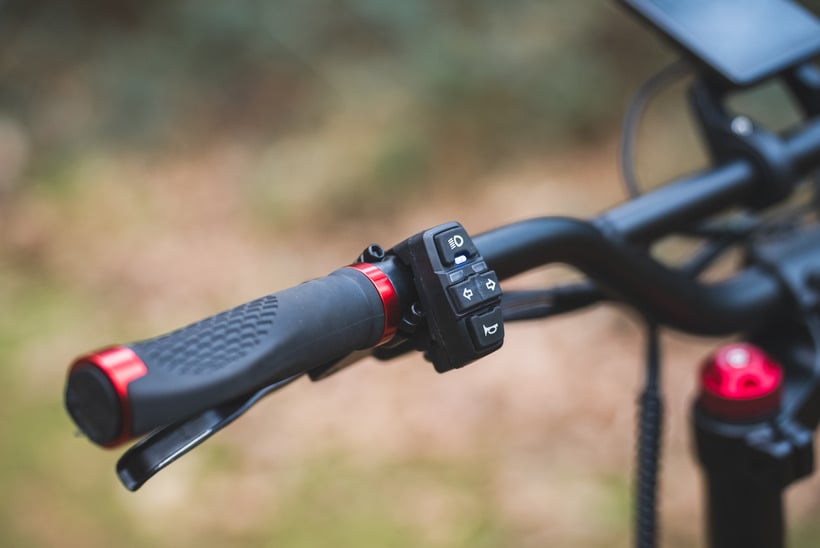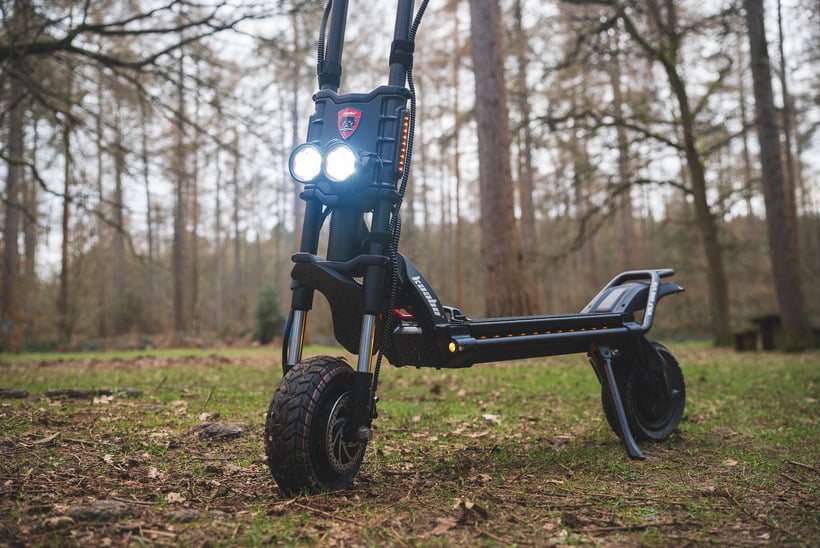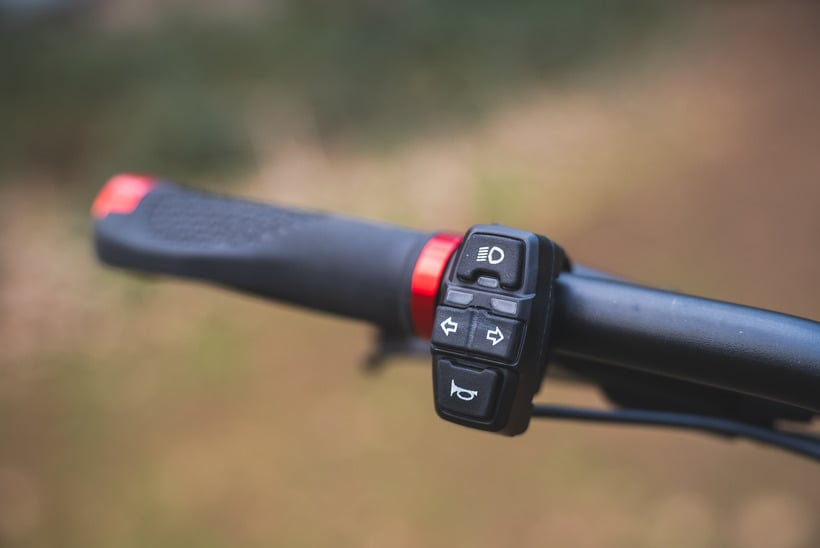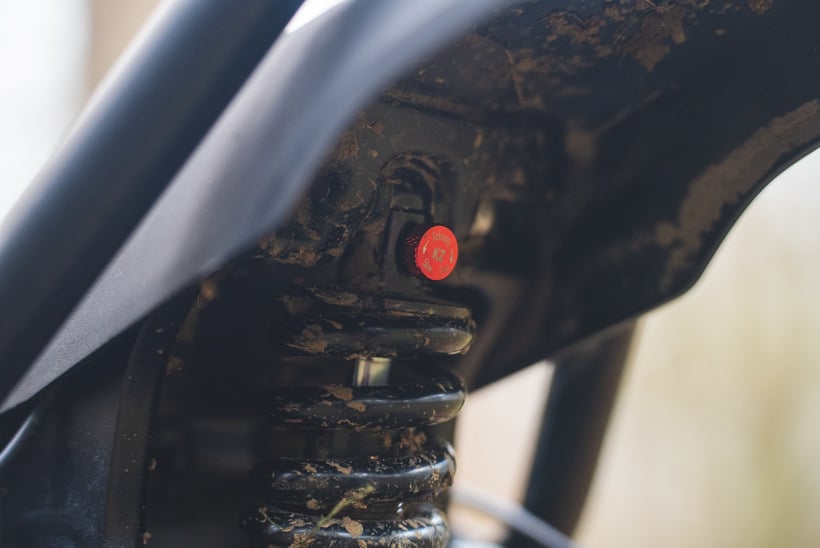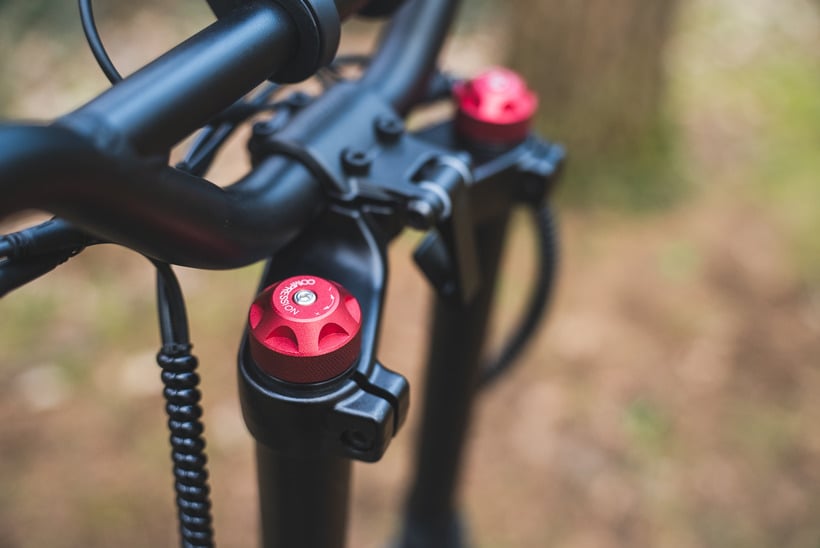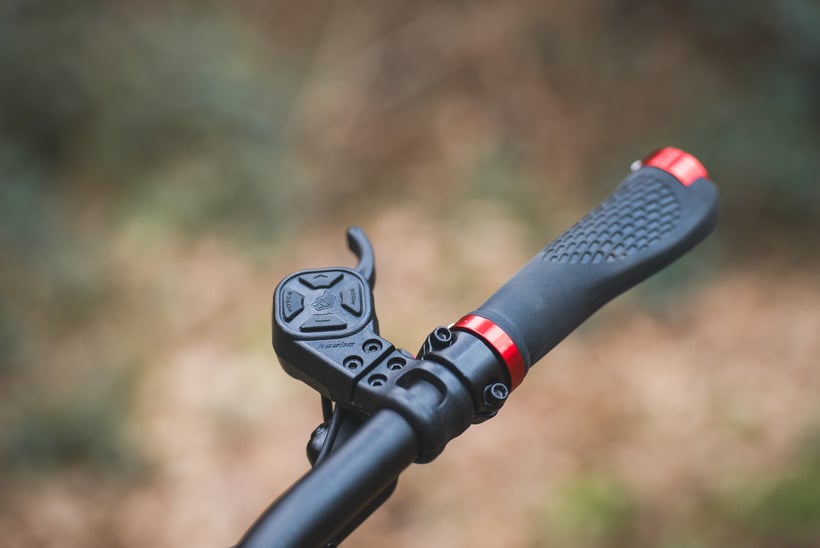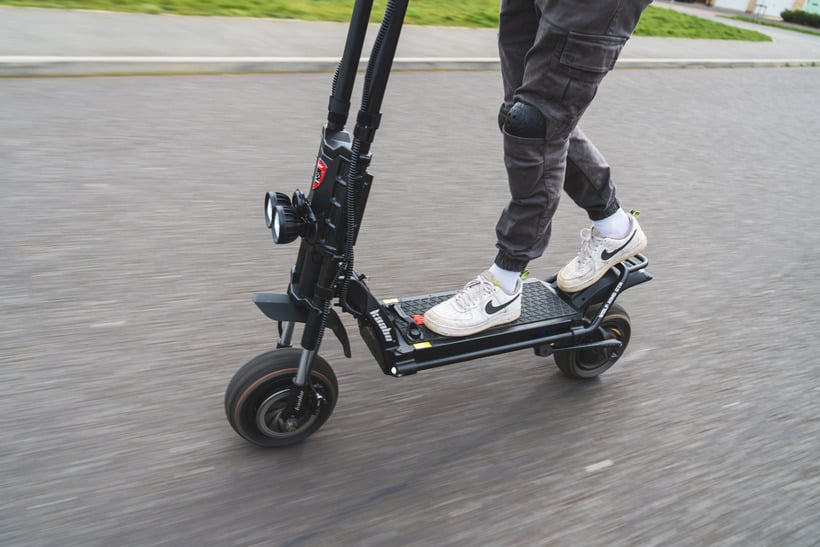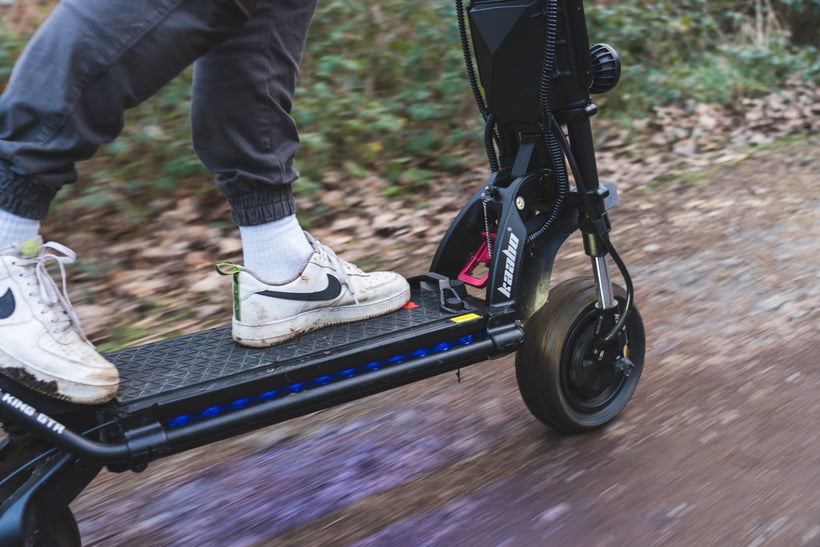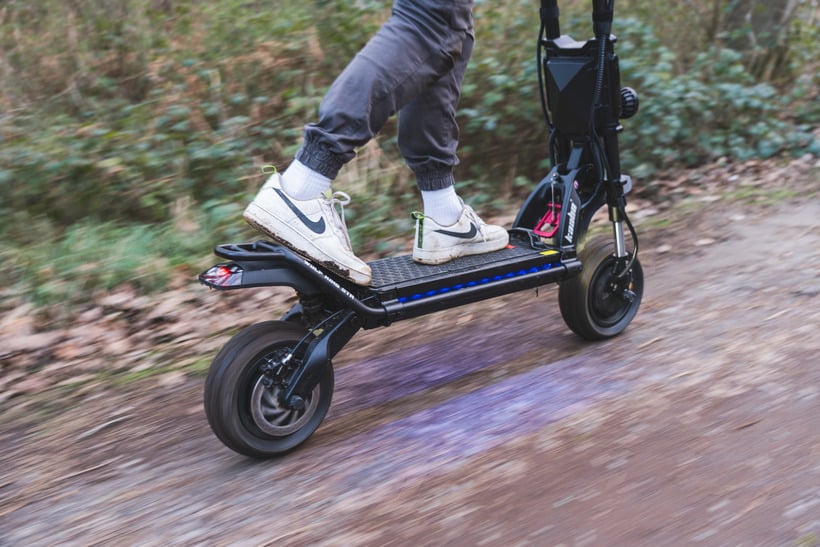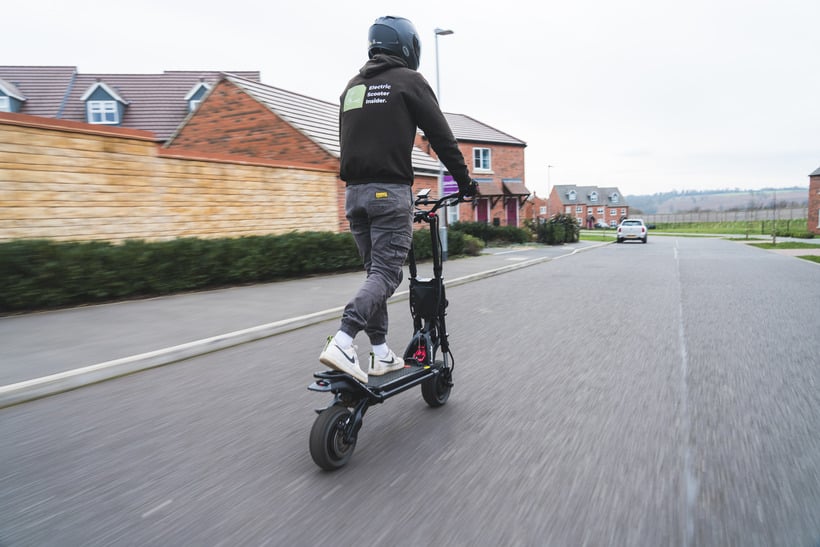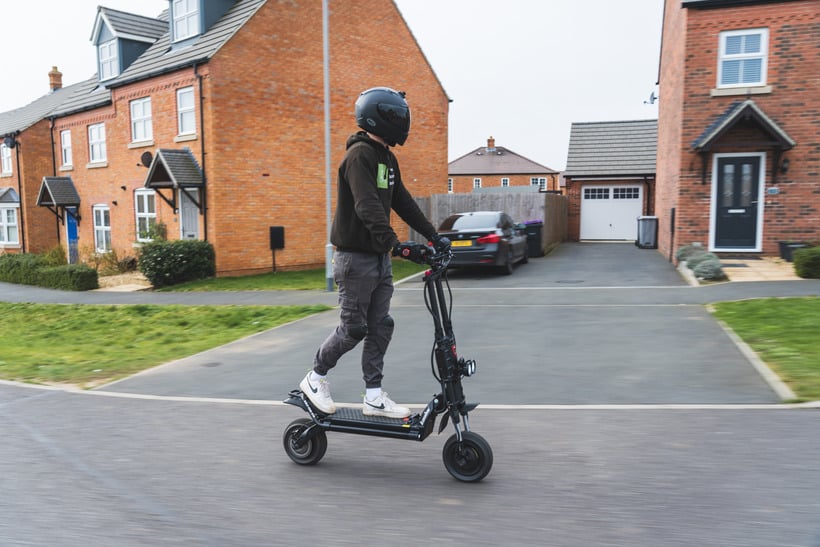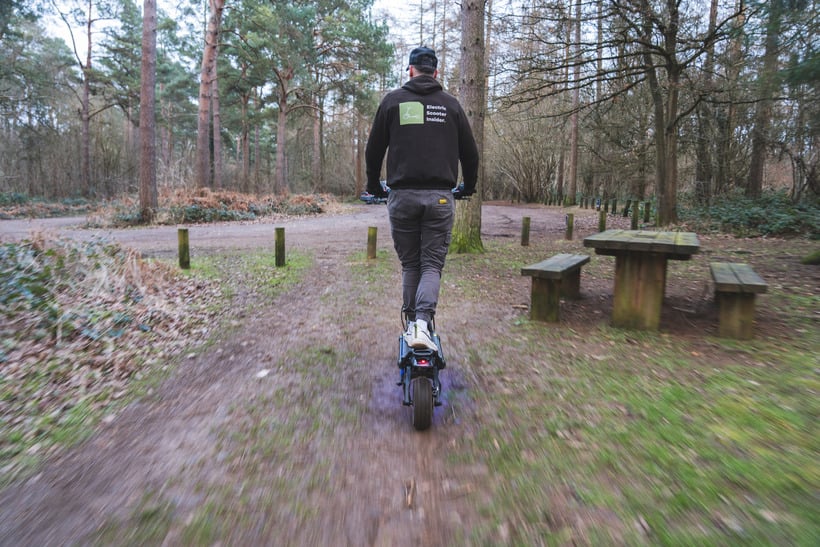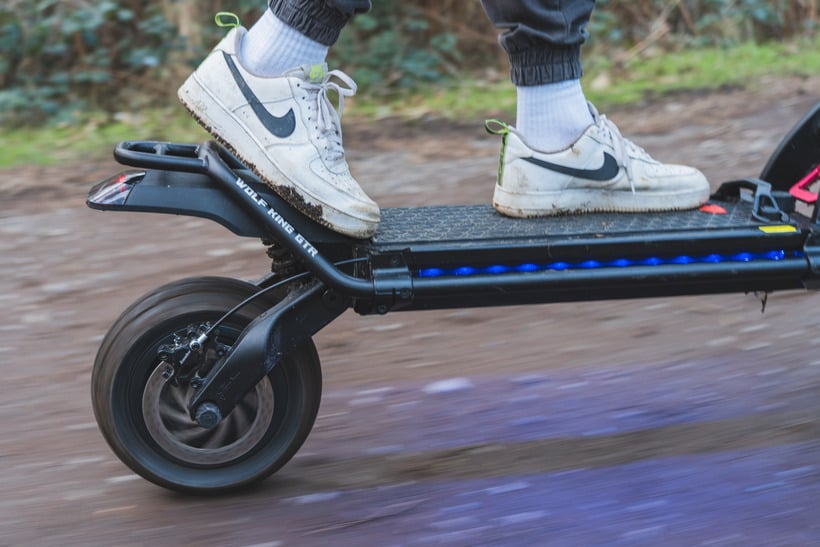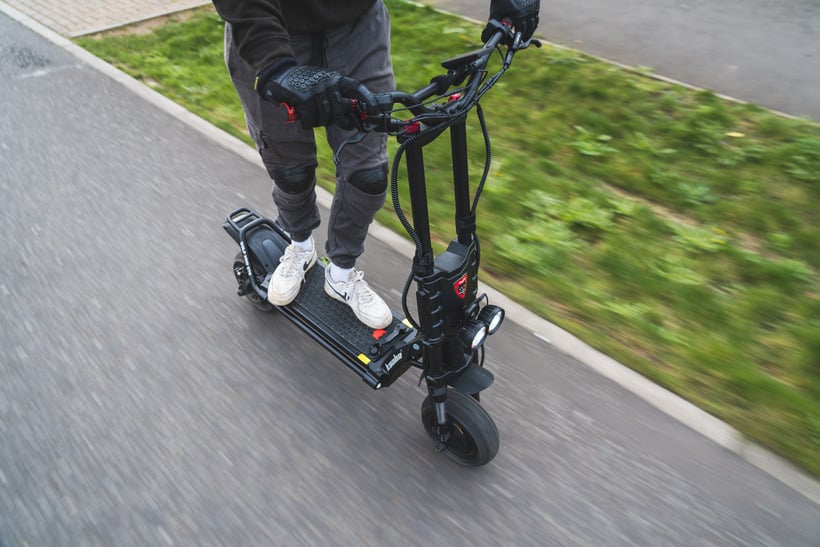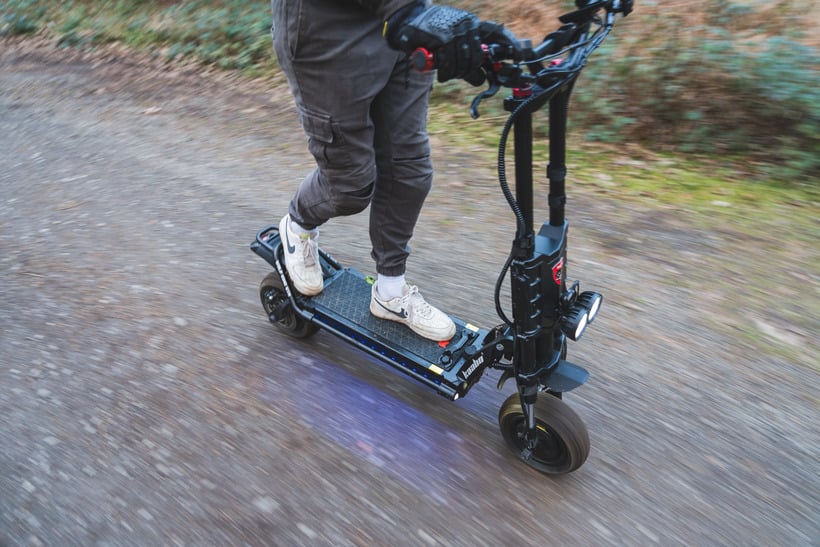Top Picks & Comparison: Best Fast Electric Scooters (Quick List)
Quick List: Best Fast Electric Scooters
I tested 34 fast electric scooters to find the 6 best models.
- SPLACH Titan – 32 mph – Best Under $1,250
- Apollo City – 31.2 mph – Best Under $1,500
- Apollo Phantom – 41 mph – Best Under $2,500
- Apollo Pro – 44 mph – Best Under $2,750
- Mantis King GT – 45 mph – Best Under $3,000
- Wolf King GTR – 65.8 mph – Best Under $4,000
Best Fast Electric Scooters
Best Under $1,250

SPLACH Titan
- Tested Speed: 32 mph
- 0-15 mph: 2.5 s
- 0-25 mph: 4.9 s
- 0-30 mph: 9.2 s
- Motors: Dual 52V 1000W
- Peak Power 2600W
Performance Report
Performance Report:
Tester: Josh Frisby (190 lbs, 6.1 ft)
- Top Speed: 37 mph
- Real Speed: 32 mph*
- 0-15 mph: 2.5 s*
- 0-25 mph: 4.9 s*
- 0-30 mph: 9.2 s*
- Max Range: 44 miles
- Real Range: 29 miles*
- Braking: 2.4 meters*
- Suspension: 8.5/10*
- Max Incline: 20 degrees
- Optimal Incline: 12 degrees*
- Weight: 64 lbs
- Load: 220 lbs
Pros & Cons
The Good:
- Outstanding value for money
- Chart-topping performance in its price class and beyond
- Supremely smooth suspension
- Handles all types of terrain
- Fat tires with terrain-agnostic tread
- One of the best lighting packages in the industry
- Excellent for long-range rides
- Superb folding mechanism
- Sharp and responsive brakes
- Secret hiding spot for an Apple Air Tag
- IP54 water-resistance rating
The Bad:
- Deck is a little short
- Higher load capacity would make it more accessible to heavy riders
Video Review
Photos
Best Under $1,500

Apollo City
- Tested Speed: 31.2 mph
- 0-15 mph: 2.3 s
- 0-25 mph: 6.1 s
- Motors: Dual 48V 500W
- Peak Power 2000W
Performance Report
Performance Report:
Tester: Josh Frisby (190 lbs, 6.1 ft)
- Top Speed: 32 mph
- Real Speed: 31.2 mph*
- 0-15 mph: 2.3 s*
- 0-25 mph: 6.1 s*
- Max Range: 43 miles
- Real Range: 27 miles*
- Braking: 2.1 meters*
- Suspension: 7.5/10*
- Max Incline: 20 degrees
- Optimal Incline: 13 degrees*
- Weight: 65 lbs
- Load: 265 lbs
Pros & Cons
The Good:
- Competitive performance profile
- Fast acceleration
- Smooth power delivery
- Sublime handling
- Sleek aesthetic
- Feature-rich
- Proprietary design ensures top-class build quality
- Tubeless, self-healing tires
- Shock-absorbing triple spring suspension
- Regen brake recharges the battery by up to 10%
- Intuitive folding mechanism
- Good lighting setup with the best turn signals that I’ve tested
- Battery management system ensures long-term performance
- Integrated mobile app for customized performance
- Fast charging
- 10,000 km warranty
- Low maintenance
- Suitable for tall and heavy riders
- High IP66 water-resistance rating
The Bad:
- The display could be brighter
- Similarly priced models go faster, but the Apollo City Pro’s overall package is superior
Video Review
Photos
Best Under $2,500
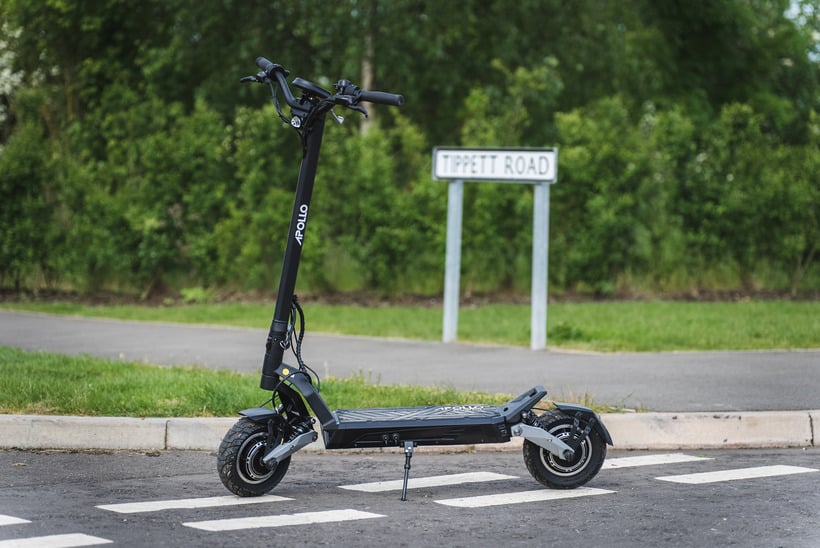
Apollo Phantom
- Tested Speed: 41 mph
- 0-15 mph: 2.3 s
- 0-25 mph: 4.5 s
- 0-30 mph: 7.0 s
- Motors: Dual 52V 1200W
- Peak Power 3200W
Performance Report
Performance Report:
Tester: Josh Frisby (190 lbs, 6.1 ft)
- Top Speed: 41 mph
- Real Speed: 41 mph*
- 0-15 mph: 2.3 s*
- 0-25 mph: 4.5 s*
- 0-30 mph: 7.0 s*
- Max Range: 40 miles
- Real Range: 29 miles*
- Braking: 2.1 meters*
- Suspension: 7.5/10*
- Max Incline: 25 degrees
- Optimal Incline: 15 degrees*
- Weight: 77 lbs
- Load: 300 lbs
Pros & Cons
The Good:
- New MACH1 controller unleashes high performance
- Supremely smooth throttle response
- Rapid acceleration
- Ludo mode boosts torque and top speed
- First-ever performance scooter to feature a regenerative brake paddle
- Supreme handling
- Quadruple springs are perfectly calibrated
- Mobile app lets you customize performance settings
- Great for tall and heavy riders
- Ergonomic cockpit
- Excellent lighting rig
- Sharp and responsive hydraulic brakes
- IP54 water resistance rating
The Bad:
- The rubber that sits around the plastic casing of the regen and throttle paddles is poorly-fitted
- Similarly-priced scooters offer more raw power, but some don’t match up to Apollo’s end-to-end customer experience
Video Review
Photos
Best Under $2,750
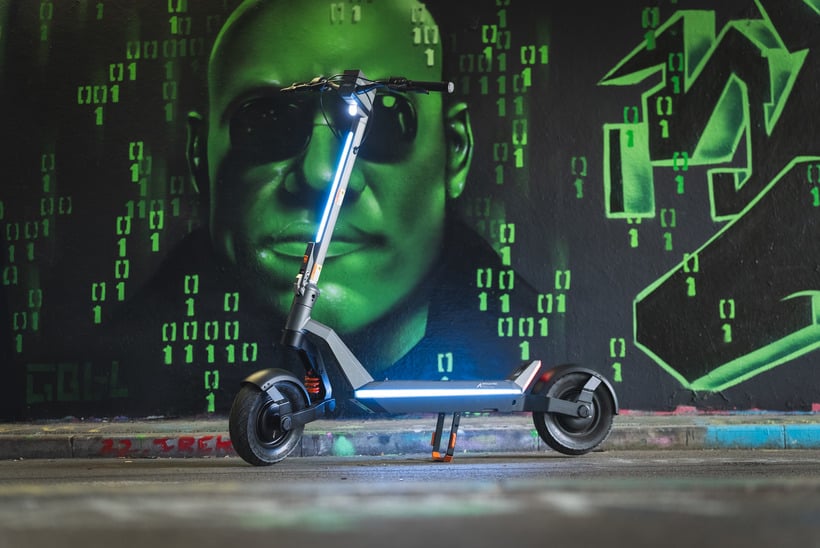
Apollo Pro
- Tested Speed: 44 mph
- 0-15 mph: 2.1 s
- 0-25 mph: 4.3 s
- 0-30 mph: 6.3 s
- Motors: Dual 52V 1200W
- Peak Power 6000W
Performance Report
Performance Report:
Tester: Josh Frisby (190 lbs, 6.1 ft)
- Top Speed: 44 mph
- Real Speed: 44 mph*
- 0-15 mph: 2.1 s*
- 0-25 mph: 4.3 s*
- 0-30 mph: 6.3 s*
- 0-35 mph: 9.3 s*
- Max Range: 63 miles
- Real Range: 39 miles*
- Braking: 2.3 meters*
- Suspension: 7/10*
- Max Incline: 30 degrees
- Optimal Incline: 18 degrees*
- Weight: 93 lbs
- Load: 330 lbs
Pros & Cons
The Good:
- Red Dot Design Award winner
- Industry-leading build quality
- Looks like a Tesla Cybertruck
- Futuristic 360-degree dynamic lighting rig
- Competitive speed, acceleration, range, and braking performance
- AG geometry promises intuitive control and best-in-class handling
- Integrated IoT gives you access to 24/7 GPS tracking so you can flag your scooter lost or stolen and activate its kill switch
- Regen brakes recharge your battery up to 10%
- DOT Matrix display is extremely bright and easy to read from any angle
- QuadLock phone mount supports wireless charging and allows you to use the app on your phone as the primary display
- Mobile app lets you customize performance settings
- Built-in Bluetooth speaker
- 12-inch self-healing tires
- Well suited to tall and heavy riders
- Low-maintenance
- IP66 water-resistance rating
The Bad:
- Some scooters within its price class go faster and further. But, none can compete with the Pro’s integration of tech, unique features, and reliable, low-maintenance build
- Suspension system could be more plush
Video Review
Best Under $3,000

Mantis King GT
- Tested Speed: 45 mph
- 0-15 mph: 1.9 s
- 0-25 mph: 4.0 s
- 0-30 mph: 5.7 s
- Motors: Dual 60V 1100W
- Peak Power 4200W
Performance Report
Performance Report:
Tester: Josh Frisby (190 lbs, 6.1 ft)
- Top Speed: 43 mph
- Real Speed: 45 mph*
- 0-15 mph: 1.9 s*
- 0-25 mph: 4.0 s*
- 0-30 mph: 5.7 s*
- 0-35 mph: 7.8 s*
- Max Range: 56 miles
- Real Range: 38 miles*
- Braking: 2.1 meters*
- Suspension: 9/10*
- Max Incline: 30 degrees
- Optimal Incline: 18 degrees*
- Weight: 79 lbs
- Load: 265 lbs
Pros & Cons
The Good:
- Best-in-class performance
- Industry-leading design
- Exceptional build and ride quality
- 30A Sine Wave controllers deliver a smooth, fast acceleration
- High-quality Samsung battery
- Adjustable hydraulic suspension
- Terrain-agnostic tires
- Advanced TFT display
- Controllable LED lights
- Superb folding mechanism
- Wide handlebars and ergonomic controls afford excellent control
- Powerful hydraulic brakes
- IPX5 water-resistance rating
The Bad:
- Headlight could be brighter
Video Review
Best Under $4,000

Wolf King GTR
- Tested Speed: 65.8 mph
- 0-15 mph: 1.6 s
- 0-25 mph: 2.8 s
- 0-30 mph: 3.4 s
- Motors: Dual 72V 2000W
- Peak Power 13440W
Performance Report
Performance Report:
Tester: Josh Frisby (197 lbs, 6.1 ft)
- Top Speed: 65 mph
- Real Speed: 65.8 mph**
- 0-15 mph: 1.6 s*
- 0-25 mph: 2.8 s*
- 0-30 mph: 3.4 s*
- 0-35 mph: 4.2 s*
- 0-40 mph: 5.2 s*
- Max Range: 112 miles
- Real Range: 42.8 miles*
- Braking: 3.0 meters*
- Suspension: 8.5/10*
- Max Incline: 50 degrees
- Optimal Incline: 30 degrees*
- Weight: 137 lbs
- Load: 330 lbs
*Based on my tests and assessments
**Based on third-party tests
Pros & Cons
The Good:
- Fastest scooter on the market
- Acceleration is the quickest that I’ve ever tested
- Powerful 2-in-1 100A Sine Wave controller (peaks at 160A)
- Has traction control
- A well-balanced frame, reliable dual stem, and ultra-wide handlebars make it extremely stable when ripping top speeds
- Zoom hydraulic brake calipers and thick rotors ensure responsive stopping power
- Shock absorption of the GTR is far better than the original GT thanks to the new adjustable hydraulic shocks
- Versatile self-healing tires
- Long real-world range
- Removable battery makes charging easy
- Best hill climber that I’ve tested
- Huge deck and extended kickplate allow for plenty of room
- The most ground clearance of any scooter
- Ideal for heavy riders
- Bright and easy-to-read TFT display
- Super bright dual headlights and deck-embedded LEDs
- Turn signals are visible from all angles
- IPX5 water resistance rating
The Bad:
- Extremely heavy
- The folding mechanism is clunky and the most difficult to use out of all of the scooters that I’ve tested
- While the removable battery is a useful feature, the connector is a little difficult to attach and detach due to a lack of space
- The smoked taillight is hard to see in daylight, and it doesn't flash when you brake (instead, it glows brighter)
Video Review
Compare Fast Electric Scooters
SPLACH Titan | Apollo City | Apollo Phantom | Apollo Pro | Mantis King GT | Wolf King GTR |
|
|---|---|---|---|---|---|---|
| Where to Buy | SPLACH | Apollo | Apollo | Apollo | Kaabo | Kaabo |
| Price | $1,299 | $1,299 | $2,199 | $2,449 | $1,899 | $3,499 |
| Speed Category | Best Under $1,250 | Best Under $1,500 | Best Under $2,500 | Best Under $2,750 | Best Under $3,000 | Best Under $4,000 |
| Review | Review | Review | Review | Review | Review | Review |
| Performance | ||||||
| Top Speed | 32 mph | 31.2 mph | 41 mph | 44 mph | 45 mph | 65.8 mph |
| 0-15 MPH | 2.5 s | 2.3 s | 2.3 s | 2.1 s | 1.9 s | 1.6 s |
| 0-25 MPH | 4.9 s | 6.1 s | 4.5 s | 4.3 s | 4.0 s | 2.8 s |
| 0-30 MPH | 9.2 s | No Data | 7.0 s | 6.3 s | 5.7 s | 3.4 s |
| 0-35 MPH | No Data | No Data | No Data | 9.3 s | 7.8 s | 4.2 s |
| 0-40 MPH | No Data | No Data | No Data | No Data | No Data | 5.2 s |
| Max Range | 44 miles | 43 miles | 40 miles | 63 miles | 56 miles | 112 miles |
| Tested Range | 29 miles | 27 miles | 29 miles | 39 miles | 38 miles | 42.8 miles |
| Braking | 2.4 meters | 2.1 meters | 2.1 meters | 2.3 meters | 2.1 meters | 3.0 meters |
| Shock Absorp. | 8.5/10 | 7.5/10 | 7/10 | 7/10 | 9/10 | 8.5/10 |
| Max Incline | 20 degrees | 20 degrees | 25 degrees | 30 degrees | 30 degrees | 50 degrees |
| Optimal Incline | 12 degrees | 13 degrees | 15 degrees | 18 degrees | 18 degrees | 30 degrees |
| Specs | ||||||
| Motor | 52V 1000W (x2) | 48V 500W (x2) | 52V 1200W (x2) | 52V 1200W (x2) | 60V 1100W (x2) | 72V 2000W (x2) |
| Nominal Power | 2000W | 1000W | 2400W | 2400W | 2200W | 4000W |
| Peak Power | 2600W | 2000W | 3200W | 6000W | 4200W | 13440W |
| Throttle | Finger | Thumb | Thumb | Thumb | Thumb | Finger |
| Battery | 52V 20.8Ah FST | 48V 20Ah FST | 52V 23.4Ah FST | 52V 30Ah Samsung | 60V 24Ah Samsung | 72V 35Ah LG |
| Charge Time | 6 hours | 4.5 hours | 12 hours | 6 hours | 6 hours | 12 hours |
| Brakes | Discs (x2), Electronic | Drums (x2), Regen | Discs (x2), Electronic | Drums (x2), Regen | Hydraulic Discs (x2), Electronic | Hydraulic Discs (x2), Electronic |
| Suspension | Springs, Swingarms | Triple Springs, Swingarms | Quad Springs, Swingarms | Adjust. Hydraulic Spring, Rubber Cartridge | Adjust. Hydraulic Springs, Swingarms | Adjust. Hydraulic Fork, Adjust. Hydraulic Spring, Swingarms |
| Tire Size | 9 inch | 10 inch | 10 inch | 12 inch | 10 inch | 12 inch |
| Tire Type | Air (Tubeless) | Air (Tubeless, Self-Healing) | Air (Inner-Tube) | Air (Tubeless, Self-Healing) | Air (Inner-Tube) | Air (Tubeless, Self-Healing) |
| Weight | 64 lbs | 65 lbs | 77 lbs | 93 lbs | 79 lbs | 137 lbs |
| Load | 220 lbs | 265 lbs | 300 lbs | 330 lbs | 265 lbs | 330 lbs |
| Foldability | Folds at Stem | Folds at Stem | Folds at Stem | Folds at Neck | Folds at Stem | Folds at Neck |
| IP Rating | IP54 | IP66 | IP54 | IP66 | IPX5 | IPX5 |
| Lights | Headlight, Taillight, Deck, Customizable RGB | Headlight, Taillight, Turn Signals | Headlight, Taillight, Turn Signals | Headlight, Stem, Deck, Taillight, Customizable RGBs, Turn Signals | Headlight, Taillight, Deck, Customizable RGB, Turn Signals | Dual Headlights, Taillight, Deck, Turn Signals |
| Terrain | Street, Off-Road | Street | Street, Off-Road | Street | Street, Off-Road | Street, Off-Road |
How Did I Test the Scooters?
Test Criteria
To find the 6 best fast electric scooters, I tested 34 models. Each was evaluated across 7 performance categories, including motor power, nominal and peak power, top speed, acceleration, controller performance, handling, and safety.
Motor Power
The power of a motor is determined by its voltage and watts.
Voltage signifies the intensity at which electricity is being pushed through a scooter’s motor. Typically, these motors are either 36V, 48V, 52V, 60V, 72V or, in rare cases, 84V. As part of my tests, only those with voltages above 52V made the cut.
Watts, on the other hand, are units of measurement that determine the size of a motor. This is important as it’s a telling figure of the amount of power that the motor can deliver – including both nominal and peak power (which I’ll cover next). Only those scooters with motors rated over 1000W were considered for a place in my coveted list of the fastest electric scooters.

Nominal & Peak Power
A scooter’s nominal power refers to the amount of power that a motor can produce continuously. Peak power, meanwhile, refers to the instantaneous injections of energy that a motor is capable of before it overheats.
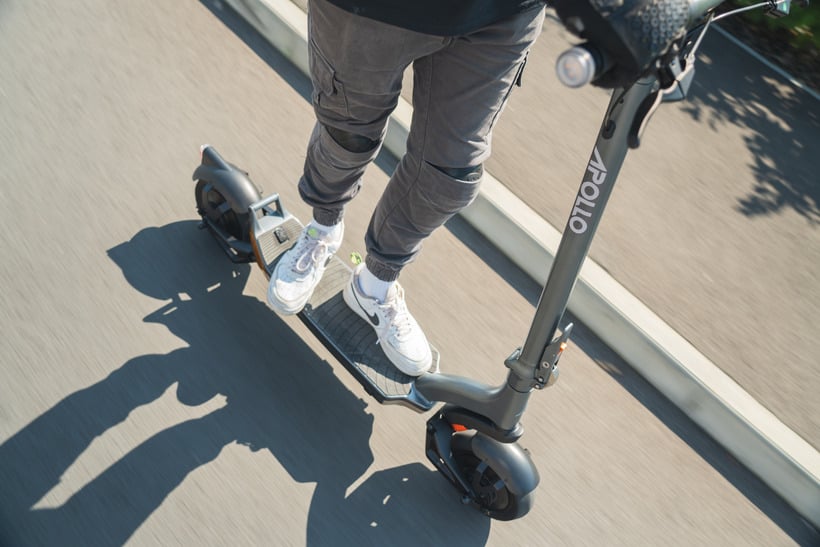
Here, I used my independently gathered data to compare nominal and peak power outputs relative to price (i.e. identifying the scooters with the most powerful outputs per dollar). It’s important to note, however, that the scooters up for comparison have already passed several tests to ensure overall quality (i.e. I didn’t just choose random cheap powerful scooters, but instead made a concerted effort to compare models from reputable brands).
Top Speed
The ultimate vanity metric when it comes to fast scooters is top speed. Testing each scooter required a dry and flat road, whilst I also made sure to have each fully charged with maxed-out performance settings and their tires inflated to the recommended PSI.
For scooters that exceeded reasonable top speeds (i.e. some went as fast as 65 mph), I was not able to verify true speed data because I didn’t have access to enough runway to safely reach those speeds. This is a common issue among reviewers since testing to this degree would require either access to a controlled automotive test track, or the investment of hundreds of thousands of dollars to build one. I have, however, made recommendations based on comparative data gleaned from my electric scooter database, and reputable third-party reporting (i.e. other industry experts and riders).
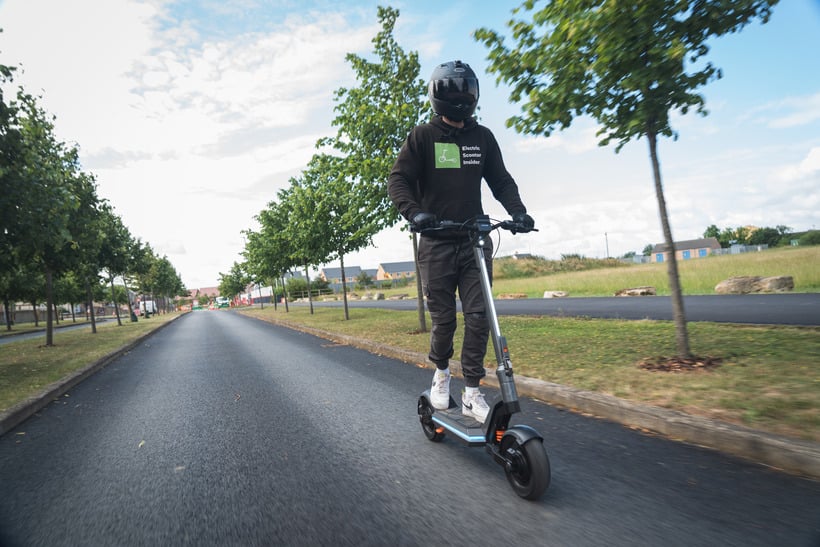
Acceleration
While top speed can be considered an ego metric, acceleration is the truest indicator of a scooter’s blistering power. If you ask any reputable reviewer in the industry, they’ll agree that a fast acceleration rate is a more important factor to consider than top speed. Riding at extreme speeds can be dangerous while accelerating for short bursts is a more enjoyable way to your heart thumping and adrenaline pumping.
To establish trustworthy results, I conducted multiple acceleration tests across different intervals (i.e. 0-15 mph, 0-25 mph, etc). For each interval, I conducted 3x two-way directional runs on a flat, dry road, and then averaged the data (in seconds). To ensure consistency across each scooter, zero-start modes were enabled, the performance settings were dialed up to the max, the tires were pumped up to their recommended PSI, and the batteries were fully charged.

In addition to the acceleration data, I made assessments on the amount of wheel spin and the responsiveness of the throttles.
Controllers
Controllers are the brain and central nervous system of an electric scooter. They’re responsible for the coordination of how battery power is delivered to the motors, throttle, display, wheel sensors, regenerative braking systems, and anything else that requires electricity. But, some controllers are better than others.
The higher the amps and voltage of a controller, the more power it can deliver. Typically, a higher voltage and amperage result in greater torque, faster acceleration, and higher top speeds.

Besides this, there are two types of controllers: Square Wave and Sine Wave. Square Wave units release power instantaneously, while with Sine Wave variants, the release is more gradual. Some riders love the in-your-face hit of the former, though the latter grants you a smoother and more controlled throttle response. I assessed the responsiveness of the controllers during my top speed and acceleration tests.
Handling
While riding fast, the control you’re able to exert over a scooter is vitally important. Aside from testing each scooter hands-on to garner insights into their riding experience (i.e. checking for speed wobble), I also conducted several assessments to determine how the geometry of each scooter’s frame influenced its stability.
Here, I measured the angle at which the steering column is positioned in relation to a vertical axis through the front axle (otherwise known as the rake angle). The smaller the angle, the less effort required to turn the handlebars, but the less stable the scooter. Conversely, a larger rake angle requires more effort to turn but makes the scooter more stable at higher speeds. During my assessments, I made sure to select the scooters that hit the sweet spot between the two to maintain both stability and maneuverability.

Then I measured handlebar width since there’s a direct correlation between this and control (the wider the bars, the greater the control). As a result, I only selected the scooters that offered ample control. Other measurements, including the deck-to-handlebar height, usable deck space, and kickplate angle were assessed, too.
Similar to geometry, weight distribution can affect a scooter's handling. As a result, I made sure to get a good feeling of each scooter selecting those that I felt distributed their weight evenly across their frame. To make this assessment, I searched for imbalances (i.e. a bottom-heavy design that caused the steering column to be underweight and twitchy). If I couldn’t find any, then the scooter scored highly.
The last area of assessment was made on how responsive, nimble, and agile the tires were. In particular, I focused on their size, profile, and tread. Based on my tests, the top performers were those that measured at least 10 inches high, had rounded front-on profiles, and lightly patterned treads. Combined, these design attributes were able to maintain the most traction.
Safety
Safety is paramount when it comes to riding fast. Most crucial of all, of course, is braking power. To ascertain a model’s prowess in this area, I measured the distance it took for each to stop from 15 mph with measuring tape. These tests were conducted five times. If electronic or regenerative braking systems were present then I dialed their strength up to the maximum. I also assessed the position and responsiveness of the brake levers.
Based on my tests, a stopping distance of less than 3.5 meters is good, while anything below 2.5 meters is excellent.




